

11 Different Types of Yachts
Posted on Published: April 13, 2022 - Last updated: June 13, 2022

The Dutch navy first used the yacht in order to catch pirates . Until the 1950s, the primary materials used for building a yacht was wood. Today, yachts of all types and sizes are constructed of various materials including steel, aluminum, plywood , and veneers.
When Charles II used it for his own personal use, the yacht became a luxury boat often owned by important people all over the world. As a result, yachts are often associated with luxury . According to UBS and Wealth-X’s annual World Ultra Wealth Report for 2014, the world’s super-rich spends the most on their yachts at $22 billion a year.
Related: Floating Home Ideas | Types of Houseboats | Kayak Storage Ideas | Parts of a Boat Trailer
Sailing Yacht

The sailing yacht is one of the most traditional types of yachts that people purchase. When people want to be able to go out on the water and have a classic sailing adventure, owning a sailing yacht is going to be able to make that happen. These types of yachts are sailed with traditional sails, which can be quite challenging if you don’t know what you are doing. Sailing a ship using only the wind and your sails is a very interesting experience.
The fact that it is challenging and that it replicates the old way of doing things is precisely what is so appealing about sailing yachts. People who are very into sailing will absolutely adore owning one of these yachts. There are a few different types of sailing yachts that you will be able to choose from, as well. The traditional ones will only have sails to hoist and will not feature a motor.
You will also be able to purchase hybrid yachts that are primarily meant for sailing, but they also feature a motor. This can be very handy to have in case of an emergency. Being able to use the motor when you need to can be very convenient. If you run into issues with your sails or bad weather, it can be beneficial to be able to get back to port as quickly as possible.
There are also yachts that have sails, but they also have modern instruments to make navigation and sailing easier. You will be able to find a sailing yacht that will suit your tastes. Just think about what type of experience you want to have. Once you have looked over all of your options, you should come across the perfect sailing yacht for your journey.
Expedition Yacht

An expedition yacht isn’t the type of vessel that most people will purchase for random pleasure weekends. They would work just fine for those purposes, of course, but they are really meant for longer journeys. These yachts are capable of sailing for really long periods of time while remaining self-sufficient. This is crucial for people who are planning long sea voyages around the globe.
Expedition yachts are incredibly powerful, and if you ever get the chance to sail on one, you will be very impressed with it. These ships are capable of sailing very efficiently, as well. They make good use of the resources available in order to complete long journeys without any hassle. Vessels like this make it simple for people to stay out at sea for long periods of time without being inconvenienced.
One of the advantages of taking an expedition yacht on such a long journey is that you won’t have to sacrifice your comforts in any way. These yachts can be loaded up with everything that you need to stay entertained and happy on a long voyage. These luxury ships are able to combine efficiency and practicality with all of the luxuries that you enjoy. Some of the expedition yachts are so lavish that it isn’t unlike staying in a luxury hotel.
People use these expedition yachts to go all over the world. When someone wants to go on a journey to a faraway place in style, taking an expedition yacht is going to be one of the best options. These yachts are very pricey, and most people will not be able to afford them. A lavish expedition yacht is going to be even more expensive than most of the other yachts on this list.
Motor Yacht

A motor yacht is a modern version of the sailing yachts that everyone knows and loves. These types of yachts are among the most common. They are very nice to use for parties and even just casual getaways. People often charter these motor yachts for special occasions in order to have a really good time.
When most people think of a yacht, they think about some type of party ship. Many companies that charter out vessels such as these use them for upscale parties. These ships are just the right size to be able to host a fairly sizeable group. You will be able to have a fantastic time if you have a special event out on the water in one of these motor yachts.
Yachts like these usually include all sorts of fun things for people to enjoy. It isn’t uncommon for these yachts to have hot tubs, dance floors, bars, and even swimming pools. If you want to make your next birthday party truly special, then chartering a motor yacht may be your best bet. It can certainly help you to create some fantastic memories.
These motor yachts can be good for helping you to take a vacation, as well. Those who own these types of yachts will use them to sail to different destinations. They may not be well-suited to travel to certain places in the world depending on the type of hull that it has. Simply take all of the important factors into account before planning a voyage with your new motor yacht, and you will always have a great time.
Classic Yacht

Classic yachts are generally considered to be yachts that were built in the past. Some people have different definition and standards for what makes a yacht a classic. The older the yacht is, the more likely it is to be considered a classic yacht. There are yachts that were built in the 1920’s that are still being used as recreational vessels in the modern era.
People who own certain yachts from the 1970’s also consider their ships to be classics. The basics that you need to understand are actually fairly simple . A classic yacht has a certain feeling to it that you don’t get when you sail on a modern ship. These vessels are sometimes made mostly out of wood, and other classic yachts are made out of steel.
Many of these classic yachts were completely handcrafted. There is speculation that the handcrafted nature of these yachts is what ultimately gives them their charm. Whatever your feelings on the issue are, it is undeniable that the older style of yachts can be very appealing. These ships have a very interesting aura and seem to exude a classic sense of luxury.
Sometimes the interiors of these classic yachts will be kept the same as they were in the year that it was made. This can lead to some interesting design choices that may not mesh well with modern sensibilities. Regardless, if you want to get the full experience of the classic yacht, keeping things as they once did have some merit. If you want to get a feeling for what yachting was like in the past, then chartering a classic yacht can be a very intriguing experience.
Fishing Yacht

If you want to go on a fishing trip for your vacation, then you may want to consider doing so on a fishing yacht. There are yachts that are specifically designed for the purpose of fishing. Fishing is one of the oldest traditions that humanity has. So many people enjoy fishing for recreational purposes and being able to do so on a luxurious yacht is really something else.
There are yachts that are used for more casual fishing trips. You will also find that people use sports fishing yachts to go on fantastic fishing adventures. Sometimes people will use yachts to go to interesting places in the world where the fishing is said to be particularly noteworthy. Wherever you decide to take a fishing yacht will be interesting due to how fun these ships are to use.
You’ll have the normal luxuries that you will want to make use of in any yacht. These yachts can still be a great deal of fun for anyone who wants to have a party. The added benefit is that the deck of the ship is designed in a way that is conducive to fishing. You’ll be able to access the waters properly and will potentially be able to haul in some truly impressive catches.
The yacht will have plenty of room for all of your fishing gear, as well. When people charter a fishing yacht, it will sometimes come with all of the gear that you will need. You should check with the owners ahead of time so that you will know what you need to bring with you. If you’re a true fisherman, then you will definitely want to purchase one of these for yourself if possible.
Gulet Yacht

The Gulet yacht is something that originally comes from Turkey. This yacht is interesting because it can feature two or more masts. In the past, these vessels were used to transport goods. They are very worthy vessels that were originally designed to keep cargo safe from harm during transport.
Modern Gulet yachts are used more for pleasure. They are sought-after because of their beautiful wooden hulls. These hulls can be very ornate while still being practical and safe. People who appreciate the beauty of a finely- crafted ship will love owning one of these Gulet yachts.
This is an incredibly stable ship to sail in too. If you want to sail on a ship that is going to feel as natural as possible, then a Gulet yacht is a good choice to make. It is very sturdy and will be completely capable of getting you to your destination safely using only the wind in its sails. Modern Gulet yachts will also be equipped with motors, in most cases.
Gulet yachts are becoming more and more popular. People are starting to charter these yachts more frequently, and many yacht enthusiasts are pining to add a Gulet yacht to their fleet. The beauty of the ship combined with its fantastic capabilities makes it easy to see why it is so sought-after. These yachts are truly exceptional, and you will want to experience one first-hand when you get the chance.

If you don’t know a whole lot about ships, then you might see a catamaran yacht and wonder exactly what it is. A catamaran yacht is a vessel that has more than one hull. A design featuring two hulls can be ideal for certain situations. These yachts are very interesting from a visual perspective, and many of the design choices are quite fun.
Many catamaran yachts will have more room than a traditional yacht. This means that people will have more space to spread out, and it can be even more fun for parties. The overall layout of these catamaran yachts lends itself well to being a party vessel. This makes catamaran yachts among the most popular chartered ships each year.
Of course, there are different styles of catamaran yachts that you will be able to choose from. You will find that there are catamaran yachts with traditional sails and ones that feature a motor. Both of these types are actually fairly common, and sometimes a catamaran will feature both. The type of catamaran that you will want to charter will largely depend on your intentions for your excursion.
The interior of the yacht will typically be very stylish to accommodate the needs of its guests. This is definitely a luxury vessel through and through. No matter what style of catamaran you decide to go with, you will have an excellent time. It’s a good vessel to choose for those who get seasick, as well, since the increased hull space makes things feel less cramped.

Cruisers are yachts that are typically used for taking a small group out to have some fun. Unlike some of the incredibly large yachts listed earlier, cruisers can be a bit smaller inside. There are also large yachts that are classified as cruisers, but generally, you will be using cruisers for small recreational trips. If you want to go out on the water to have some fun with your closest friends, then owning a cruiser is going to be perfect for your needs.
These types of yachts are great when you want to be able to have some versatility. You will easily be able to access the water when you’re sailing a cruiser. This makes them perfect for those that want to go out fishing or even swimming in the ocean. You will be able to get where you need to go and will have a good time once you get there.
Yachts like these are typically a bit shorter than most of the other yachts featured here. Some of the fishing yachts will be around the same length. A cruiser may be between 30-feet and 60-feet long, although there are plenty of variances. Regardless of the size, it is still a great ship to own, and the fact that it is not overly long can be an advantage in some ways.
These are fun yachts that will be the perfect purchase for a first-time yacht owner. You can make a lot of fantastic memories when you have a vessel like this to use. The ship is generally very easy to handle, too, so it’s great for a newcomer to own for that reason. The cost of a nice cruiser is going to be agreeable as well, as it isn’t quite as costly as many of the other yachts that have been featured so far.
There are those who think of cruisers are more similar to speedboats. It is true that there are similarities between cruiser yachts and speedboats, but this is definitely distinct enough to be considered to be its own thing. You’ll be able to enjoy this cruiser yacht to its full potential without much worry. Whether you want to enjoy a romantic getaway or you are looking forward to a little party with your closest friends, you’ll love owning a cruiser yacht.

The flybridge design is very interesting because it will allow you to go fishing very easily. This is one of the most popular styles for fishing yachts. It makes accessing the water easier than it would otherwise be. You’ll be able to have a great view out onto the water and will have an easy time fishing.
There are some occasions where a motor yacht will also have a flybridge. Even so, this style is most closely associated with fishing yachts. It just works so well for that purpose that it makes sense overall. You’ll be able to have a really good fishing trip if you choose a yacht in this style.
The large cockpit is one of the standout features of a flybridge style yacht. It makes it simple to haul in the fish in comparison to other styles. You’ll also have enough visual range to be able to spot your lines and other important things. If you want to have a nice fishing vacation with your friends, then chartering this type of yacht is highly recommended.
You’ll be able to enjoy the overall power of these types of ships, as well. They are designed to be able to handle rough weather well and will be able to get you back home fast when you need to leave. You’ll have nothing to worry about when you charter a nice yacht like this. It’ll be a good experience so long as the fish are biting.

Tri-deck yachts can really be quite impressive to see up close. Multi-level yachts aren’t too uncommon, but when you have a three-leveled deck , it can be a sight to behold. These yachts are really interesting to sail on, and you will often see tri-deck designs on luxury cruisers. They will give passengers a lot of space to enjoy themselves.
Tri-deck style yachts are really common on vessels that are meant for upscale vacations or parties. Giving guests enough room to have a lot of fun is important. These yachts will often have plenty of interesting recreational facilities. You might even find a tri-deck yacht with multiple lavish swimming pools or something like a tennis court.
Owning a large yacht like this will require quite a large investment. When you want to be able to have the best, you’re going to need to be able to pay for it. Even so, these yachts are well worth the high asking price. They’re excellent for recreational purposes and will always be able to help you have a good time.
The sheer amount of enclosed living space available on a yacht of this type is impressive. You’ll be able to host many people on a yacht of this size. This makes hosting corporate parties on yachts such as these very popular. It can be a great vessel to own when you want to seal the deal on an important business deal.

Having a sky lounge on your yacht can potentially be a lot of fun. A sky lounge will generally be located at the top of the yacht. This design features windows that can open in order to feel the cool air. This is a completely livable space, though, making it a fun room to stay in when you’re spending time on the yacht.
The view from the sky lounge is usually quite gorgeous . Most of the yachts that feature a sky lounge design will ensure that this room has all of the amenities that you would expect. It will be climate controlled and will be perfect to stay the night in. People often enjoy spending time in the sky lounge with their significant other due to the romantic qualities that it has.
Some of these sky lounges may even have sunroofs. This can be really nice when you want to be able to look up at the stars at night. It’s a really neat feature to have on your yacht, so you will want to keep it in mind. It isn’t the most common yacht feature but you should be able to find a fantastic vessel that has a sky lounge for you to enjoy without too much of a hassle.
If you find a nice yacht to charter that has a sky lounge, then it will definitely be worth your while to enjoy it. Yachts with this convenient feature will always be sought-after. It can help to make an already romantic situation even more so. You’ll love the atmosphere that the sky lounge can provide you.

- RIVIERA YACHTS
- BELIZE YACHTS
- DESIGN AND BUILD
- YACHT MANAGEMENT
- SUPERYACHT PROJECTS
- PRE-OWNED YACHTS
- NEWS & PR
- LEE MARINE TEAM
- COMPANY NEWSLETTERS

From Catamarans to Mega Yachts, the Different Types Of Yachts Explained
Welcome to the world of yachting, where luxury meets adventure on the open seas. Whether you’re a seasoned sailor or dreaming of your first voyage, understanding the different yacht types is key to finding your perfect match. Dive in with us as we explore the fascinating varieties of yachts, each offering its unique charm and functionality.
Everything to know about the different types of yachts
1. sailing yachts.
Sailing yachts capture the essence of maritime tradition, harnessing the wind for a serene yet exhilarating experience . Imagine gliding silently across the water, sails billowing in the breeze.
Cruising Yachts
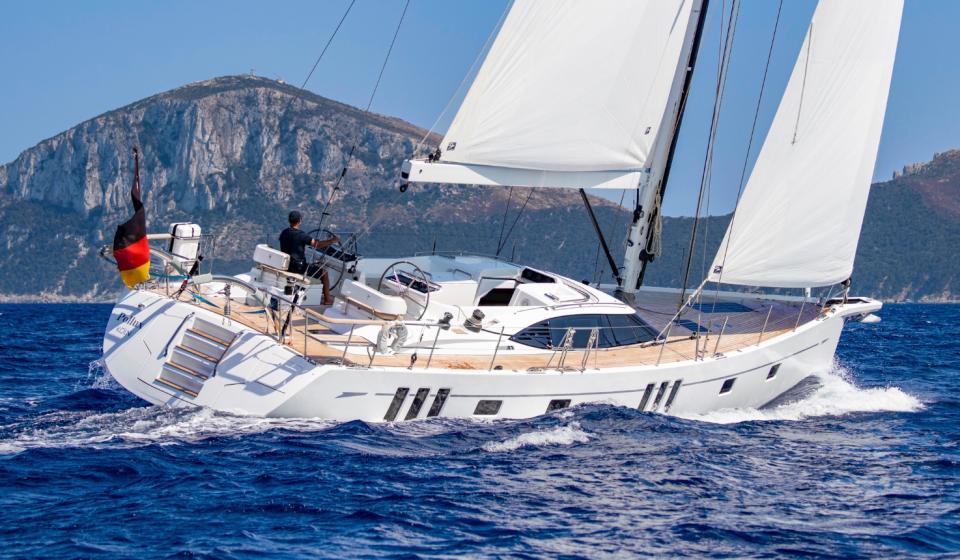
If long journeys and exploring distant shores appeal to you, cruising yachts are your ideal companions. With cozy cabins, ample storage, and sturdy designs, they promise comfort and adventure. Think of models like the elegant Oyster 565 or the versatile Beneteau Oceanis series, perfect for those extended trips.
Racing Yachts
For the competitive spirit, racing yachts deliver speed and agility. Built with lightweight materials and sleek hulls, they’re designed to cut through the waves with precision. Join prestigious races like the America’s Cup with legendary models like the J-Class or the cutting-edge TP52.
Day Sailing Yachts
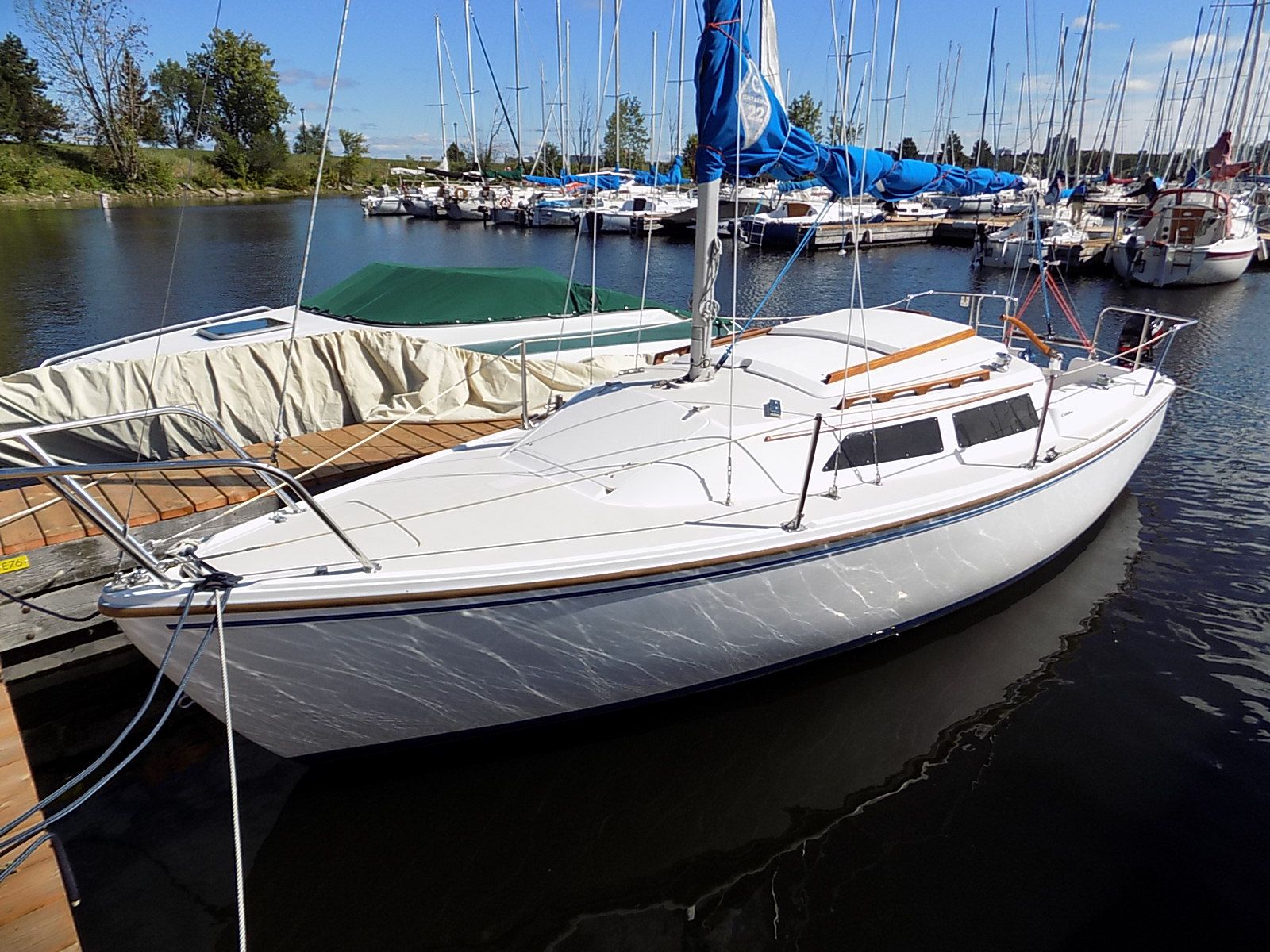
Looking for a quick escape? Day sailing yachts are easy to handle and perfect for short, coastal outings. Enjoy spontaneous sailing trips with models like the nimble Catalina 22 or the sporty Laser, ideal for a day of fun on the water.
2. Motor Yachts
Motor yachts are the epitome of modern luxury, combining speed with spacious comfort. Powered by mighty engines, they’re perfect for those who prefer swift travel and plush amenities.
Sports Yachts

If high-speed thrills and water sports excite you, sports yachts are your go-to. With sleek, aerodynamic designs and powerful engines, they’re built for excitement. Experience the rush with models like the Sunseeker Predator or the stylish Princess V series.
Flybridge Yachts

Flybridge yachts offer an elevated experience, quite literally. With an additional upper deck, they provide panoramic views and extra space for lounging. Socialise and entertain in style on models like the Azimut 66 or the luxurious Ferretti Yachts 780.
Expedition Yachts

For the adventurous explorer, expedition yachts are robust and ready for the high seas. Designed for long-range travel, they boast advanced navigation systems and generous storage. Embark on epic journeys with models like the Nordhavn 76 or the intrepid Damen SeaXplorer.
3. Catamarans and Multihulls
Catamarans and multihulls stand out with their unique designs and stability, offering a different kind of yachting experience. Picture a spacious floating home with unparalleled balance and comfort. While catamarans and trimarans come with two and three hulls respectively, there are other multihull yachts that feature more hulls than these two popular kinds. However, these are rarer and more specialised.
Featuring two parallel hulls, catamarans offer more stability and space than traditional yachts. Perfect for family adventures and long-term cruising, they’re like floating apartments. Popular choices include the Lagoon 450 and the Leopard 50, which offer expansive living areas and smooth sailing.

With three hulls, trimarans are all about speed and stability. Ideal for those who crave performance, they’re less common but highly sought after for racing and high-speed cruising. Consider the sleek Neel 51 or the innovative Dragonfly 28 for an exhilarating ride.
4. Classic and Vintage Yachts
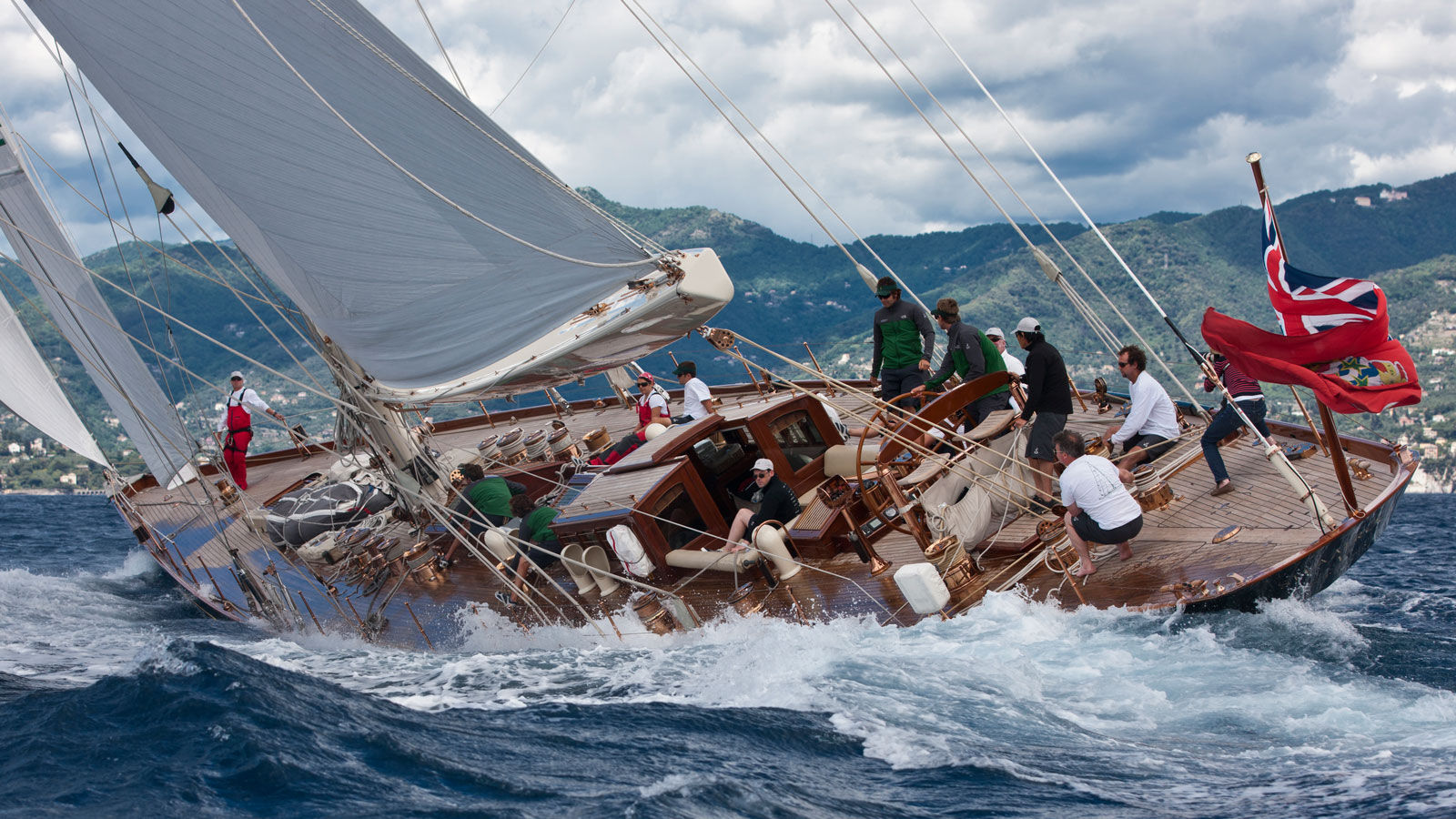
Classic and vintage yachts are timeless treasures of the sea, each telling a story of yachting’s golden age. These vessels are lovingly restored to preserve their original elegance and craftsmanship.
Classic yachts, like the designs from Herreshoff, are celebrated for their graceful lines and traditional rigging. Vintage yachts, such as the storied Shamrock V, offer a nostalgic journey back in time with their wooden hulls and intricate details. These yachts are not just boats; they’re pieces of history sailing the seas.
5. Luxury and Superyachts
Luxury and superyachts redefine opulence on the water, offering everything from cutting-edge technology to lavish interiors. These yachts are floating palaces, perfect for those who demand the best.
Mega Yachts

Ranging from 24 to 60 metres, mega yachts boast expansive decks, multiple entertainment areas, and luxurious accommodations. Host unforgettable parties or enjoy serene solitude aboard models like the Mangusta 165 or the stunning Heesen 5000 Aluminium.
Giga Yachts

The ultimate in luxury, giga yachts exceed 60 metres and are custom-designed to fulfil every dream. From helipads to swimming pools and private cinemas, these yachts have it all. Marvel at the grandeur of the Azzam or the sheer size of the Eclipse, where every journey is a voyage of indulgence.
With so many yacht types to choose from, there’s something for every yachting enthusiast. Whether you’re drawn to the traditional allure of sailing yachts, the modern luxury of motor yachts, or the unique appeal of catamarans and multihulls, the perfect yacht awaits you. Dive into this world of elegance and adventure, and let the sea be your playground.
(Featured image: Pexels)
Privacy Overview
| Cookie | Duration | Description |
|---|---|---|
| cookielawinfo-checkbox-analytics | 11 months | This cookie is set by GDPR Cookie Consent plugin. The cookie is used to store the user consent for the cookies in the category "Analytics". |
| cookielawinfo-checkbox-functional | 11 months | The cookie is set by GDPR cookie consent to record the user consent for the cookies in the category "Functional". |
| cookielawinfo-checkbox-necessary | 11 months | This cookie is set by GDPR Cookie Consent plugin. The cookies is used to store the user consent for the cookies in the category "Necessary". |
| cookielawinfo-checkbox-others | 11 months | This cookie is set by GDPR Cookie Consent plugin. The cookie is used to store the user consent for the cookies in the category "Other. |
| cookielawinfo-checkbox-performance | 11 months | This cookie is set by GDPR Cookie Consent plugin. The cookie is used to store the user consent for the cookies in the category "Performance". |
| viewed_cookie_policy | 11 months | The cookie is set by the GDPR Cookie Consent plugin and is used to store whether or not user has consented to the use of cookies. It does not store any personal data. |

Yacht Types and Sizes
Which yacht types and sizes exist in the world.
Are you curious which yacht types and sizes exist in the world? Spoiler: there are plenty!
In this article, we explore different types of yachts, such as motor yachts, sailing yachts, catamarans and trimarans.
We talk about their unique features, advantages and disadvantages.
We also cover the difference between serial, semi-custom and custom yachts and see which one is right for you.
Finally, we learn about how yacht size is measured and how it affects overall yacht volume and operations.
Let’s get started!
YACHT TYPES
If you consider buying a yacht, you need to decide on its type.
Which yacht type do you prefer: motor yachts, sailing yachts or catamarans?
These three categories are the most popular types of yachts, although there are also other ones.
Let’s look at each of them separately.
Yacht Types: Motor Yachts
Motor yacht is the most common type of a superyacht. Around 80% of world’s yachts are motor yachts.
These luxury boats are powered by strong engines, do not have sails and over time have become symbol of a classy and laid-back lifestyle.
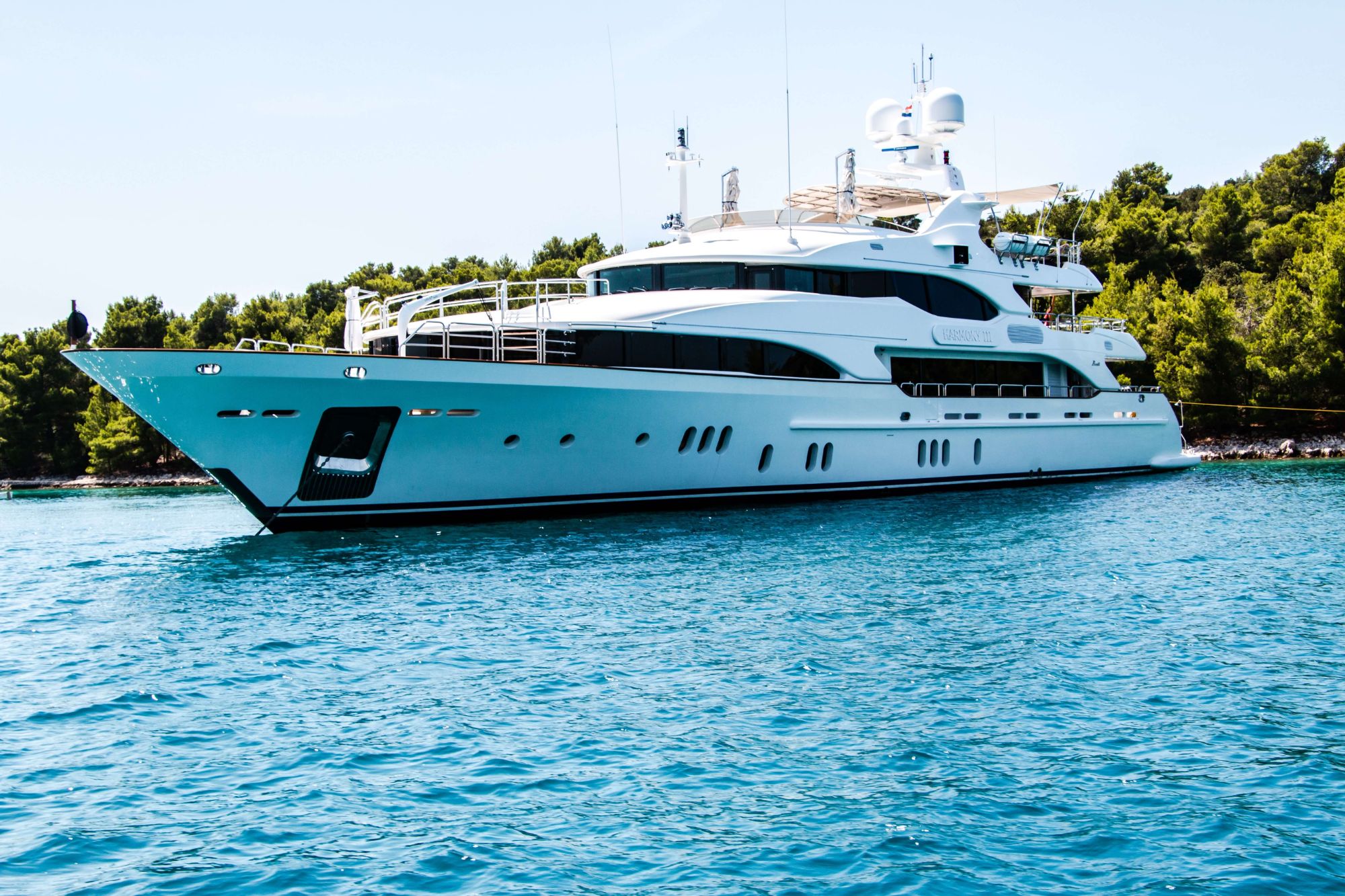
Pros of Motor Yachts:
- Powerful and fast
- Greater technological advances
- Greater deck space, more living volume
- Easier to find suitable crew members
- Easier to operate than a sailing yacht
- Easier to host guests of all personalities
Contras of Motor Yachts:
- Less sustainable, higher fuel consumption
- Less adventurous feel (if you are looking for it)
- Shorter range (can only be powered by motor)
- Engine noise
Motor yacht is probably the first thing which comes to your mind when you think superyachts.
Classy and sleek design, plenty of deck space, comfortable staterooms and lots of entertainment options – all this you can find aboard a motor yacht.
Motor yachts come in different types and sizes and with different purposes. The latest trend is explorer motor yachts, which are explicitly equipped for cruising in cold polar regions.
Yacht Types: Sailing Yachts
Sailing yachts are the second most popular yacht type. If you love the wind and want that classy sporty feel while aboard, then a sailing yacht is the right yacht type for you.
Another advantage is that when not powered by motor, sailing yachts are very quiet. It is only the sound of waves and wind (and an occasional seagull) around you.
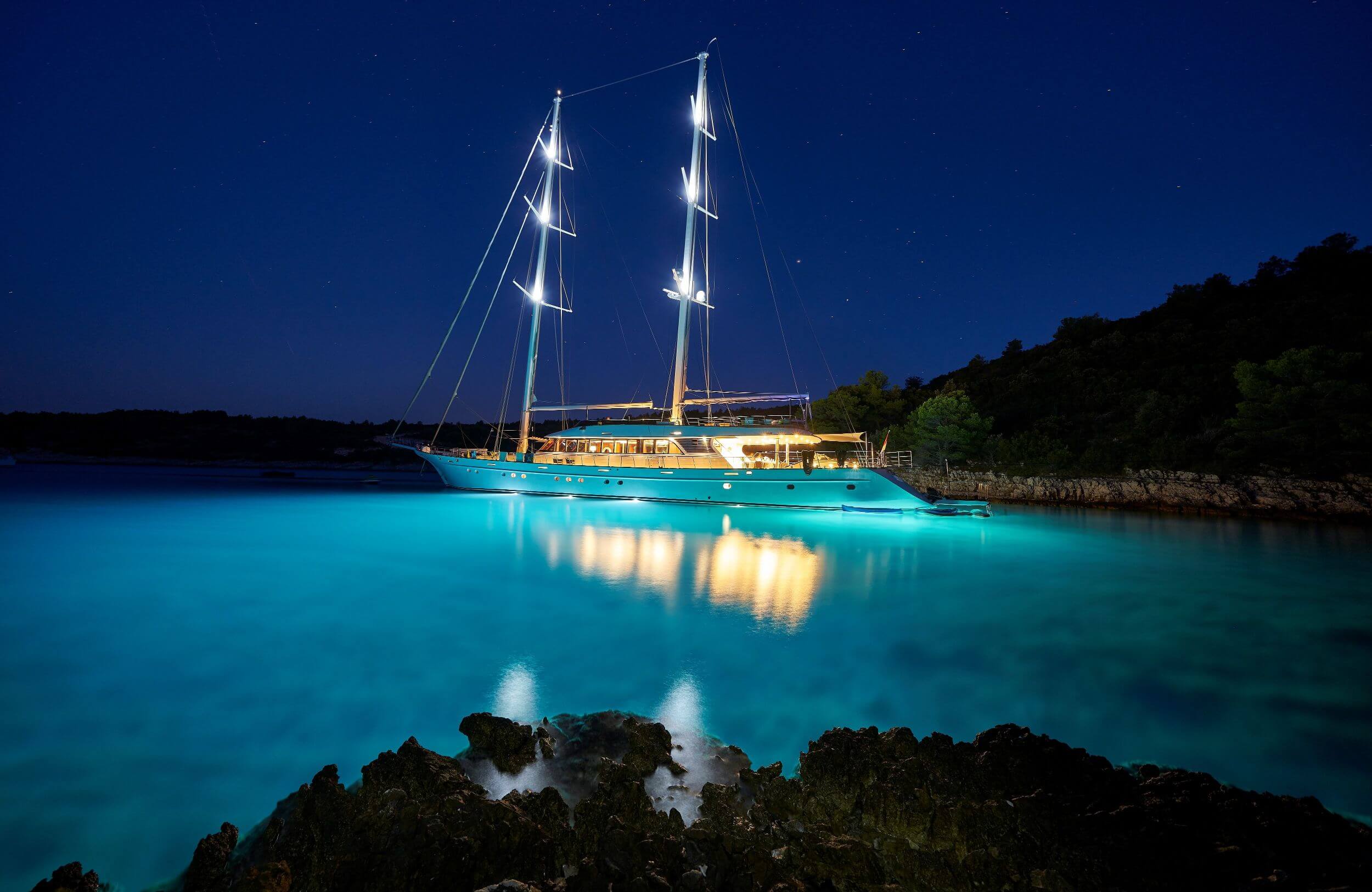
Pros of Sailing Yachts:
- Unique feel of adventure
- Can combine peaceful cruise with racing
- Very quiet when powered by sail
- Lower fuel consumption
- Lower maintenance cost
- Can sail in shallower waters
Contras of Sailing Yachts:
- Tend to be slower that motor yachts (in case you like speed)
- Less stabilization
- Smaller cabin space
- Might have less lifestyle equipment available (Jacuzzi, gym, cinema) …
There are only two types of people out there: sailing yacht fans and motor yacht fans. Rivalry between fans of the two yacht types has become legendary.
Probably, you already know which group you belong to. Nevertheless, we still recommend you charter both sailing and motor yachts to be sure you are making the right choice. If you are still unsure, read about the third yacht type below.
Yacht Types: Catamarans
Catamaran is defined as a vessel with two parallel hulls which are joined together. Due to its form, catamaran is the most stable of all yacht types.
If you are looking for stability and comfort, or have family members who easily get seasick, buying a catamaran is a valid option to consider.
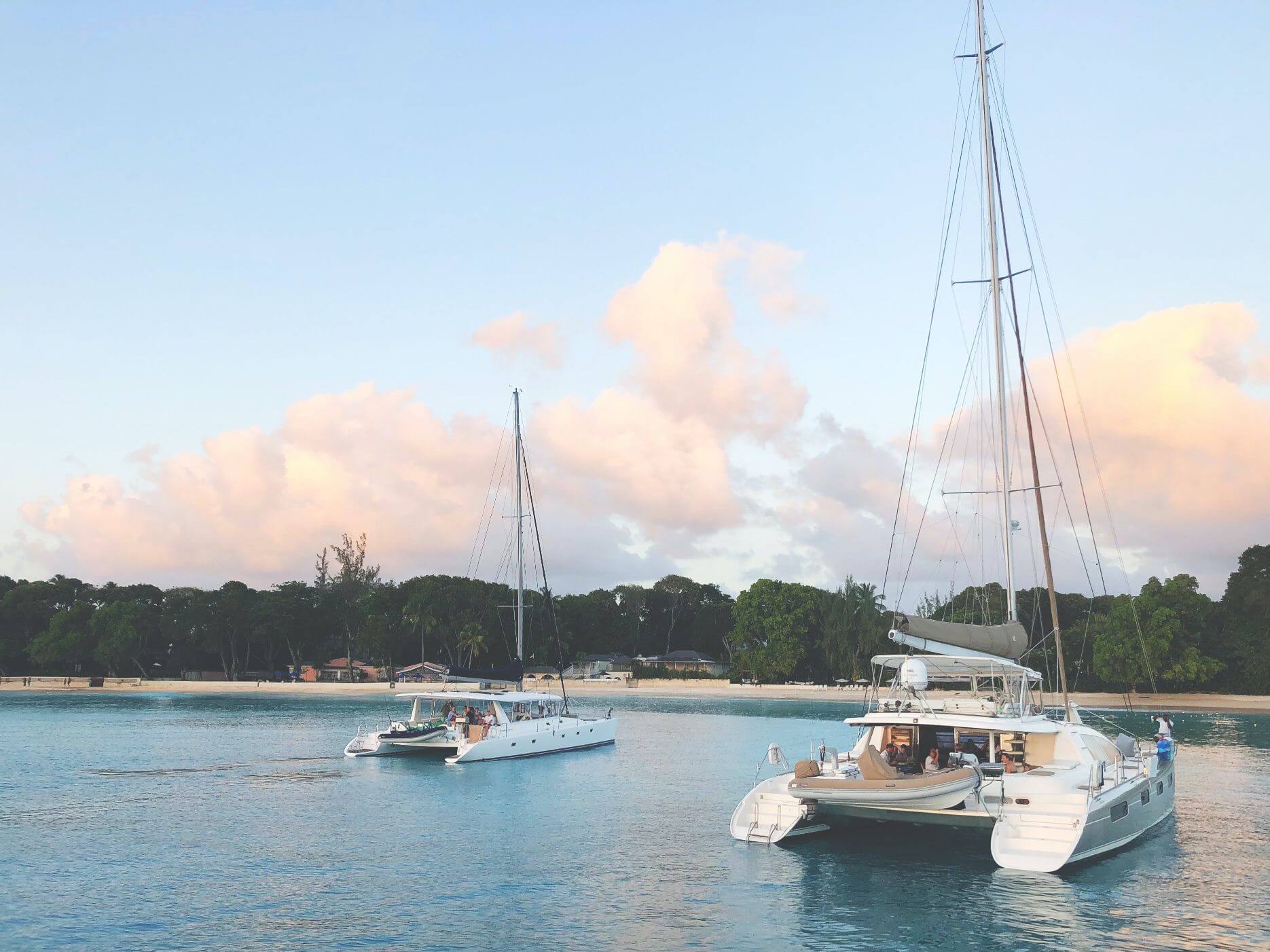
Pros of Catamarans:
- More fuel efficient & sustainable
- More stability
- Can be used in shallow waters
Contras of Catamarans:
- Less volume for staterooms
- Higher dockage rates than for a monohull
- Different sailing feeling compared to a sailing boat
Catamarans offer a great opportunity for taking family vacations, which will leave every family member happy. Since they are more difficult to sink, they are also considered the safest boats.
If you are looking for extra stability, comfort and space, but also do not want to compromise on adventures and possibility to explore shallow waters, catamaran is right yacht type for you.
Yacht Types: Trimarans
Big brother of a catamaran, a trimaran, has even three hulls – one main hull in the center, and two smaller hulls on each side.
You will not see them as often, but there are certainly also big fans of trimarans out there. Trimarans are designed for racing or leisure but are also widely used for military and shipping purposes.
YACHT PRODUCTION TYPES: SERIAL, SEMI -CUSTOM, CUSTOM YACHTS
Now that we’ve covered yacht types, let’s investigate which production options are out there. Unlike the automotive industry where most of the car models come from production lines, the yachting world offers future owners more possibilities.
SERIALS YACHTS
This is the most common and less expensive way to get to your new dream boat. Serial or production yachts are yacht models which are produced by shipyards in various quantities based on model and size.
Serial does not mean that you cannot tune it to your taste though. Manufacturers offer different sets of modifications with certain yacht models. You will likely get to choose between several layout models and different equipment options.
Obviously, if you order a newly build yacht, you are likely to get more space for your improvements, than if you decide to refit an already existing yacht.
SEMI-CUSTOM YACHTS
A good way for owners who wish more character and comfort to their boats but at the same time do not want to order a fully customized vessel, is to order a semi-custom yacht.
Semi-custom yachts stand between serial and fully customized boats. You save a lot of time and effort by picking an existing engineered platform from which to start planning.
Then, together with experienced naval architects and designers, you enhance it up to your expectations by customizing layout (possibly including superstructure) and interiors.
Ordering a semi-custom yacht gives you more freedom to decide how your yacht will look like. Construction time is also much shorter in comparison with a fully customized yacht, since many parts are already designed, engineered and possibly even pre-built.
By ordering a semi-custom yacht, you can shorten construction time from two – three years up to several months!
Shipyards are also less likely to fall behind the delivery schedule, since they have produced similar yachts before and know which time is needed for delivery.
Most semi-custom yachts are designed to suite majority of potential future owners, which means that layout, size, engineering etc will be well thought-through in advance.
Due to extensive previous testing & refining of semi-custom hulls by the shipyard, it is possible that your new yacht will turn out more reliable and problem-free than a fully customized yacht.
CUSTOM YACHTS
If you wish to be unlike anybody else and want to take your dream a step further, a fully custom-built yacht is exactly what you need.
Almost anything is possible and achievable in today’s superyacht building industry. The only considerations are your budget and international safety and security standards, more on which you can read in our article on Safety and Security Onboard Superyachts.
With a custom-made yacht, you can be sure you will get exactly the boat you want, tailored just for your preferences, no other yacht in the world being similar.
Consider longer delivery time and substantially higher cost, since R&D expenses are not shared between yachts of the same series.
Many owners buy a smaller replacement yacht, while they are waiting for their customized dream boat to leave the docks.
A fully customized superyacht is surely the most exclusive type of a yacht one can own.
Yacht Sizes
Now let’s look at different yacht sizes. But first, let’s find out what yacht size actually is.
How is yacht size measured?
Length Overall (LOA) is the most widely used metrics of yacht length. It is measured from the aftmost tip of the hull to the furthermost point of the stem, measured parallel to the waterline. It is probably the only yacht length definition you need to know as an owner.
*For yachting geeks out there, here are other yacht size definitions used in the industry:
Length of Deck (LOD) : deck length excluding bow sprits and other projections. Makes particular sense for sailing boats, since their Length Overall can considerably vary from their Length of Deck.
Length of Hull (LH or LOH): Length of hull including fixed fendering but excluding any bow sprits. It can be shorter than LOA.
Length of Waterline (LWL): length of a boat at the level where the boat sits in the water.
Interesting fact: Did you know that with each additional 1 meter of length, the internal volume of a yacht increases by 6-7 cubic meters? A 40-meter yacht is not just twice longer than its 20-meter companion. According to Cube Law, it is also 6-7 times larger in volume!
Motor yacht sizes by group
Let’s look at different sizes of motor yachts. To make things easier, we divided them into 4 groups.
Please note that the following crew and guest numbers per yacht size are only approximate.
Factual crew numbers will depend on specific yacht length, cruising style, owner preferences and whether the yacht charters or not.
Factual guest numbers will depend on yacht registration type, especially with larger yachts.
22 – 40 meter motor yachts
Motor yachts in of this size are most likely serial production yachts. This means that you can buy a specific yacht model which has been designed before, and choose your own details, such as finishings and furniture.
Yachts of this size will need 4-6 crew members: yacht captain, one or two deckhands, one or two stewardesses, a yacht chef, and presumably an engineer.
22-40 meter long motor yachts normally can host up to 8 guests.
40-60 meter motor yachts
Motor boats of 40 meters length and larger are considered superyachts also within circles of superyacht industry professionals.
This is where operations and crew requirements become considerably more sophisticated. There are also more semi-custom and custom boats in this size segment.
A 40-50 meter motor boat will require a crew of approximately 9-13 crew members, depending on specific owner requirements and cruising / charter preferences.
A possible crew setup would be: yacht captain, first officer, bosun, two engineers, three or two stewardesses, two deckhands, one or two chefs (often a guest and a crew chef).
Crew of a 60 meter motor yacht will count around 20 members.
40-60 meter long motor yachts normally can host up to 12 guests.
60 – 80 meter motor yachts
Here the yachts grow much larger, and so do the costs of maintenance.
A yacht of 60 meters length will have a crew of 20-23 members. A yacht of 80 meters length can have a crew of up to 80 members.
The maximum number of guests will depend on yacht registration type. Many owners choose to keep maximum of 12 guests, since it allows for a simpler regulation regime.
80 – 180 meter motor yachts
A 100 meter motor yacht will require 80-100 members crew. Its tonnage will exceed 500 GT, which means that the yacht will fall under more regulations: STCW, SOLAS, ISSC, ISM and others.
A 170 meter motor yacht can have up to 100 crew members.
The largest yacht worldwide at the time of writing is Azzam, at 180 meters built by Lürssen. Azzam can host 36 guests and a least 80 crew.
Maximum guest number on a yacht of this size can still be only 12 guests. But if the yacht is registered as a passage vessel, it can be significantly more.
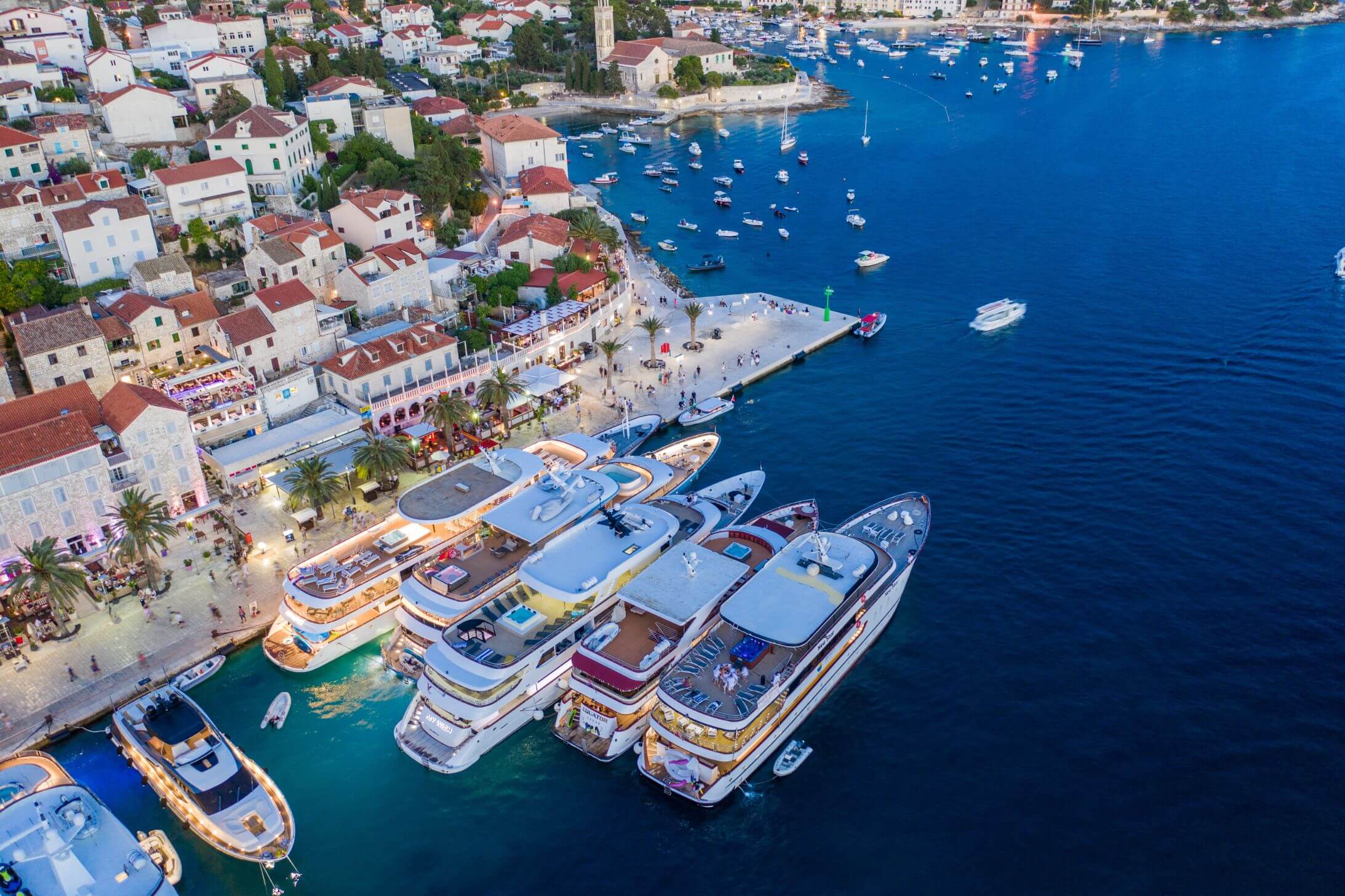
How does yacht size affect my yachting experience?
Size does matter after all.
Let’s look at factors that change with the growing size of a yacht.
While thinking of upgrading to a bigger vessel, do not forget that as the yacht size grows, following factors also increase:
- Yacht price
- Availability and price of marina dockage
- Fuel consumption
- Number of full-time crew members
- Time you can spend away from ports
- Quantity of water and other supplies the yacht can carry
- Functionality and entertainment options
- Complexity of repairs
- Applicability of laws & regulations
- Time needed to sell the yacht
Budget is the main factor which determines how big your boat can be. To learn more about the cost of yacht ownership, read this article.
During the past decade, superyachts increased in size dramatically, and this trend continues. According to an article by Boat International, there has been around 10.000 yachts over 24-meter LOA in the world. Around 80% of them were motor yachts.
Most of the owners start small and upgrade their boats over years. Once you owned a smaller yacht for some time, you will understand exactly what you love about it.
Also, you will know what you want to improve. So why not initiate a new-build of a new more exciting and possibly larger boat? You can still have the older yacht at your disposal, while waiting for the new delivery.
SUMMARY: YACHT TYPES AND SIZES
In this article, we classified all yachts into 3 main types: motor yachts, sailing yachts & catamarans. We also discussed their pros & contras.
We explained the difference between serial production, semi-custom and custom yachts.
Finally, we learned how yacht size is measured and how it affects various aspects of yacht operations. We looked at crew and guest numbers for each yacht size.
Another important factor to consider is whether you want to commission a new-built yacht or buy a second hand one . More on this in our next article .
Drop us an email if you need help with choosing a yacht or booking a yacht charter. We will define your needs and find the best solution together.
Are you a motor yacht, sailing yacht, or catamaran fan?
Comment below!
Article by Olympiada Wohlin-Elkovsky from Yachtowner.co
More Articles

Superyacht Brokers List
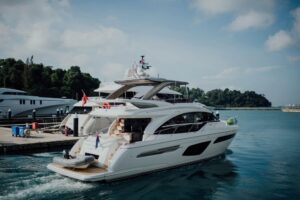
Should I Buy a New or a Used Yacht?
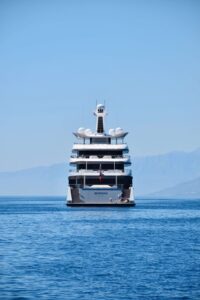
Comprehensive List of 193 Superyacht Brands
Leave a reply cancel reply.
Your email address will not be published. Required fields are marked *
Save my name, email, and website in this browser for the next time I comment.
Yes, add me to your mailing list
Privacy Overview
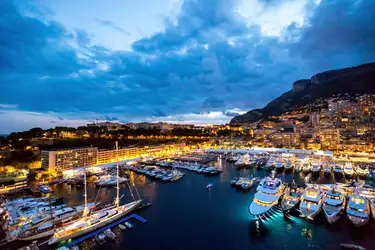
Yacht types - a Burgess guide
Published 11 April 2022
One of the biggest decisions for anyone on the path to becoming a superyacht owner is deciding what type of boat best suits their needs. From sailing to motor, and catamaran to explorer, the style, size and capability of a yacht is largely dictated by an owner’s lifestyle, preferences and bucket-list cruising grounds.
Sailing yacht
Feeling the wind in your hair and the salty sea spray while standing on the bowsprit of your own sailing yacht is a great way to reduce stress levels. Delivering the exhilaration of a fast-paced sport alongside the comfort of a home at sea, sailing yachts are the best of both worlds. While the interior volume is often less than that found on a motor yacht, sailing is the original sustainable way to enjoy the oceans. Whether you choose a bluewater cruiser kitted out with all the amenities or a high-performance racer noted on the regatta circuit, either one offers high-octane, life-affirming experiences on board.
Advantages of a sailing yacht
One of the biggest considerations when buying a superyacht is how fuel efficient it is. Powered by wind with an engine for use in port or calm seas, sailing yachts hit the economical sweet spot. It takes a highly skilled crew to operate a sizable sailing superyacht, but the tight knit family ambience typically felt between crew and guests is often legendary. Lifting keels, powered winches and sails that are furled at the touch of a button all contribute to a sailing yacht’s transatlantic capability for epic worldwide voyages, not to mention rapid sailing speeds.
44.2m (145ft) IMAGINE
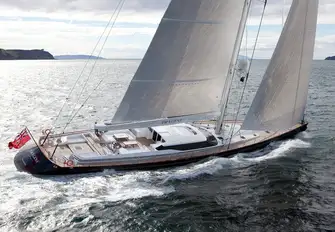
- There is a grace and beauty about sailing, as well as the obvious connection with nature 1 of 6 photos
- The tender stows in the foredeck jacuzzi - a rare feature on sailing yachts - and there's a crow's nest that takes two guests over halfway up the mast 2 of 6 photos
- The guests' deck lounge is free of lines and a great place to dine or relax 3 of 6 photos
- The transom folds down to create a swim platform and there is also a ladder midships for safe boarding in any weather 4 of 6 photos
- The deck saloon is up the steps to the left and the lounge and dining area has plenty of natural light 5 of 6 photos
- The owner's suite is full beam and very well appointed 6 of 6 photos
High-performance yacht and proven world cruiser IMAGINE epitomises the excitement offered by sailing superyachts. Featuring a Southern Spars carbon fibre mast with in-boom furling and a complete composite EC6+ rigging package, the custom-built beauty has guest deck areas that are line-free for family friendly enjoyment. With a foredeck jacuzzi, fold-down transom that creates a bathing platform, steps leading down to the water, an onboard dive compressor with six sets of dive gear for exploring underwater places and a crow's nest for two that rises over halfway up the mast, IMAGINE ranks high in the coveted adventure category.
Motor yachts
Powered by engines and designed to offer the best of the yachting lifestyle, motor yachts are floating havens that facilitate relaxation on the high seas. Providing seven-star service with every watertoy and amenity imaginable, motor yachts gift the opportunity to access remote bays, far-flung islands or simply cruise the French Riviera in style.
Advantages of a motor yacht
Contemporary motor yachts today will feature zero speed stabilisers as standard to mitigate pitch and roll (and motion sickness), large spacious guest accommodation to retreat to at the end of a long day, and wide-open deck spaces with easy access to the water. A lightweight, fast-planing motor yacht can clock speeds in excess of 40 knots, perfect for island hopping, while a full displacement superyacht offers a steady and comfortable onboard cruise. If it’s convenience, comfort and space you’re after, motor yachts are the ticket.
85m (278.8ft) O'PTASIA
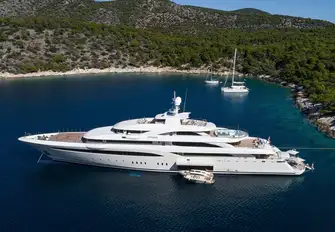
- Motor yachts typically have more space, more crew and and more toys than sailing yachts 1 of 6 photos
- The beach club is always a popular spot and not just for using the toys. It's the proximity to the ocean 2 of 6 photos
- The wellness area has a steam room, massage room, shower and dayhead 3 of 6 photos
- The bridge deck pool and the flybridge with lounge and dining are also popular spots 4 of 6 photos
- There's a fully equipped gym on the bridge deck 5 of 6 photos
- The master suite has wonderful wraparound views 6 of 6 photos
At 85m in length and with a 13.8m beam, O'PTASIA is a large, luxurious motor yacht with all the amenities to match. The enormous lower deck beach club includes a wellness spa, while relaxation time is divided between the pool on the bridge deck and the open-air dining with bar on the flybridge. Incredible accommodation for up to 23 guests in 10 cabins is paired with an elevator, transoceanic range and enough watertoys to keep everyone happy.
Explorer yachts
The ability to go anywhere, at any time, is the calling card of the explorer yacht. Typically carrying a smorgasbord of watertoys, from submersibles for deep-sea exploration to helicopters for heli-skiing and everything else in between, the explorer yacht is about venturing off the beaten track, equipped with all the gear required for serious expeditions in the comfort of a superyacht setting.
Advantages of explorer yachts
Though not a prerequisite, many explorer yachts have ice-class hulls making them the perfect vessel to explore the polar regions. A high bow to protect against large waves, a steel displacement hull with a deep draft for transatlantic crossings, and autonomy for long-distance cruising in remote areas provide all the comfort and convenience needed in some of the most hostile locations on Earth.
85m (278.8ft) VICTORIOUS
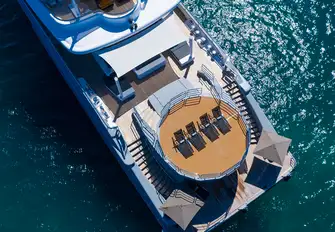
- The main deck aft has a raised circular space for feature dining 1 of 4 photos
- There's space for all sorts of celebrations on the main deck aft, whatever the weather 2 of 4 photos
- An incredible space for relaxation, entertainment and celebrating special occasions 3 of 4 photos
- There's a bar to make sure everyone has a drink for the toasts 4 of 4 photos
As a brand-new, feature-packed explorer yacht with a steel hull and an aluminium superstructure, VICTORIOUS has it all. A wine and cigar clubroom with fireplace is paired with a cinema, helipad, spa and gym, with room enough for 24 guests and all the toys to match. Capable of circumnavigating the world with ease, the 2021 delivery twins luxury with ability at every turn.
Two hulls are better than one. That’s the point of a catamaran boat, to provide stability and space without compromising on style. Increasingly popular among guests who like to spend nights at anchor, as well as sailing enthusiasts who appreciate the lack of heeling, catamarans are growing in numbers and size.
Advantages of a catamaran
Providing a lot more space than monohulls, with the cockpit and living room typically positioned between the two hulls, catamarans have a smaller surface area that floats on water therefore provide greater stability and comfort. Generally lighter and faster with a smaller draft, a multihull has versatility at its core.
35m (114.8ft) SPIRIT
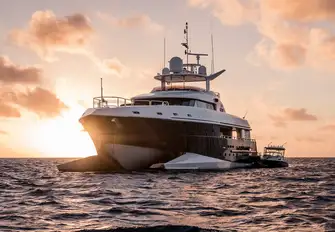
- Catamarans are generally more fuel efficient and have natural form stability 1 of 6 photos
- The extra beam catamarans have means deck spaces you'd expect to find on a much larger yacht 2 of 6 photos
- A section of the main deck aft lowers to sea level for oceanside living and into the water to recover tenders 3 of 6 photos
- Bar, BBQ and dining on the sun deck - all the superyacht amenities on a smaller platform 4 of 6 photos
- Plenty of room on the foredeck for a jacuzzi 5 of 6 photos
- Shallow draft opens up cruising grounds out of bounds to deeper drafted yachts 6 of 6 photos
At 304GT, SPIRIT has the volume of a yacht 10m (32.8ft) longer, yet a 2.1m (6.9ft) draft means she can access shallow cruising grounds with ease. The lightweight catamaran sports a Ken Freivokh interior, including a full-beam owner's suite with private deck. A foredeck jacuzzi is twinned with a hydraulic platform that expands the entertaining space on the main deck aft yet lowers into the water making access to watertoys and tenders super easy.
Mega yachts
Stable, comfortable and with unrivalled length and interior volume, the mega yacht is the kraken of the oceans. Starting at a length of around 60m (196.9ft) and upwards, mega yachts are among the largest professionally crewed yachts in the world. Merging all the perks of a standard motor yacht but on a super-sized scale, space is never an issue.
Advantages of a mega yacht
Owning a mega yacht opens a world of opportunity. Cast off, head out and drop anchor wherever suits. The robust nature of a mega yacht makes anchoring off a tropical island as easy as docking in Sydney Harbour, while the considerable storage means pools, spas and even full-size padel courts are easily accommodated.
91.5m (300.1ft) TRANQUILITY
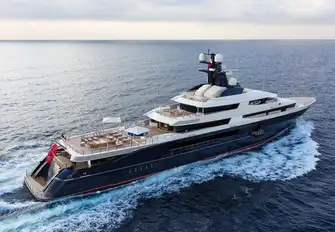
- More deck space, more features, more crew and more accommodation 1 of 6 photos
- The helipad turns into a sun lounge, a dance floor, a games deck or a dozen other uses 2 of 6 photos
- The huge jacuzzi on the upper deck aft is ready for the guests 3 of 6 photos
- There's a gym with sea terrace and a full wellness spa on the lower deck 4 of 6 photos
- TRANQUILITY also has a beach club on the lower deck. She ticks every box 5 of 6 photos
- The owner's bathroom showcases Winch Design at its supreme best 6 of 6 photos
TRANQUILITY
Offering vast deck space and lavish accommodation for 18-22 guests in 9-11 cabins, TRANQUILITY's substantial volume of 2,998GT is particularly apparent on the upper deck, where there is a huge owner's suite with private terrace and jacuzzi, a piano lounge, dining room and a huge circular pool and helipad on the aft deck. Amenities include a wellness spa, beach club and gym with a sea terrace on the lower deck with direct access from the guest lobby.
Discover superyachts for sale and contact a Burgess broker today
To find out more about Burgess’ yachts for sale and yachts for charter , please contact a Burgess broker . Alternatively, get in touch with one of our offices directly: London , Monaco , New York , Miami , Singapore or all other locations .
- Yachts, prices and availability are correct at the time of publication.
- Buy a yacht
- Charter a yacht
Latest stories

Upcoming events

Sign up to our newsletter
Stay in the loop.
Subscribe to our newsletter to keep updated with all things Burgess.
What would you like emails about?
- Chartering a yacht
- Buying or selling a yacht
- General superyacht news
In order to understand how we use and protect your personal information, please read our privacy policy .
- Mediterranean
- French Riviera
- Corsica & Sardinia
- The Balearics
- Croatia & Montenegro
- The Bahamas
- Caribbean - Leeward Islands
- Caribbean - Windward Islands
- British Virgin Islands
- US Virgin Islands
- New England
- Indian Ocean
- The Red Sea
- South East Asia
- New Zealand
- French Polynesia
- Motor yachts for charter
- Sailing yachts for charter
- Latest offers
- Destinations
- New to charter
- Meet the Charter team
- Superyacht videos
- 360° yacht tours
- Corporate & event charters
- Inspiring charter ideas
- Charter FAQs
- Every day different

MOONLIGHT II
Charter for the Abu Dhabi Grand Prix
For an unbeatable F1 experience

Early season availability in the BVI’s
Charter from mid-November onwards from St Maarten or Tortola
- Motor yachts for sale
- Sailing yachts for sale
- Yachts for sale over 200 feet
- Yachts for sale from 150 to 200 feet
- Yachts for sale under 150 feet
- Tenders and chase boats for sale
- Meet the Brokerage team
- Berths for sale
- Technical services
- Custom tenders
- Delivered yachts
- Meet the Technical Services team
- Charter management
- Sell a yacht
- Yacht marketing
- Yacht management
- Procurement
- Refit a yacht
- Crew recruitment
- Sold yachts
- Meet the Yacht Management team
- Meet the Crew Services team
- Meet the Insurance team
- 360 degree yacht tours
- Boat shows and events
- Office vacancies
- Crew vacancies
- Talent pool
- Office locations
- Burgess in Asia
- Burgess Blue Oceans
- Strategic partners
- Press centre
- Charter Management
- Company Operations
- Crew Services
- New Business
- Technical Services
- Yacht Management
- Burgess Impact Report 2023
Filter your results
- Yachts for charter
- Yachts for sale
- Articles and Guides
Types of Yachts: An Overview
17th feb 2023 by carrie reed.

From small yachts to superyachts, many luxurious vessels are available for purchase on the market today. Each type of yacht has unique features that set it apart from the other types, so a certain yacht style might suit you better than another. To make sure that you are looking at the right one for you, you will need to know how to distinguish the different types of yachts from each other.
While there is no set definition that specifically sets yachts apart from other vessels, they are generally understood to be larger than average (at least 40 feet long or bigger) with a galley, a head, and cabins with sleeping quarters. Yachts usually have powerful diesel motors that can handle cruising, runs to distant fishing grounds, and watersports. Yachts can also be classified by numerous factors, including size, amenities, and method of propulsion.
Types of Yachts
There are four main categories of yachts: motor yachts, sailing yachts, motor sailers, and cruisers. Let's take a look at each one.
Motor yachts
A motor yacht is propelled with the use of a motor or, more commonly, multiple motors. As the most common type of yacht available today, motor yachts are built for entertainment with spacious social interaction areas and luxurious accommodations. Buyers often choose motor yachts because of their suitability for extended cruising ventures, entertaining large groups of guests, and charter trips.
Sailing yachts
A sailing yacht uses sails as its primary means of propulsion. While these yachts also have motors on board, they’re usually used only when there is not enough wind to propel the craft, when docking, or when operating in heavily trafficked harbors or channels. Sailing yachts are appealing because of the quiet and environmentally friendly way they operate, as well as their essentially unlimited range. Sailing yachts generally have a lower profile and due the the shape of the hull, less onboard space than other types of yachts.
Motor sailers
Motor Sailers are a hybrid between a motor yacht and a sailing yacht. They generally use a motor as the primary form of propulsion, but also have sails that can be used when the weather conditions are right. Though less popular than the other types of yachts there are subcategories of motor sailers such as the gulet (for information see What is a Gulet? What is it like to charter one? ), and there are also some catamaran motor sailers.
Cruiser yachts
Yacht styles that do not quite fit into the previous categories are often called cruiser yachts or express cruisers. These yachts are generally modern looking, with sleek, streamlined hulls and open cockpit areas. They are on the smaller side for yachts, typically no more than 60 or 70 feet long, and are usually powered by twin diesel engines.
Types of Luxury Yachts
A luxury yacht is generally understood to be a yacht that is built with the latest in modern technology and features high-end finishes and materials. The word "luxury" can be used with any type of yacht that is exceptionally well-appointed, but some types of yachts are considered to be more luxurious than others. Let's take a look at what they are.

Classic luxury yachts
Today's classic luxury yachts are designed to emulate the grace and style of the classic yachts of yesteryear while incorporating the latest technology in a non-intrusive way. These yachts tend to have large private cabins with full baths and Jacuzzis, spacious social areas that can accommodate many guests, and lavish accommodations featuring air conditioning, high-speed internet access, and expansive entertainment systems.
Mega luxury yachts
Mega luxury yachts are private yachts that can be hundreds of feet long and are crafted specifically to carry large numbers of family and friends in lush accommodations. They feature vast open areas for sunning and socializing, multi-level entertainment and relaxation options, and VIP staterooms with private en suite heads. Many have additional special features, such as saunas, gymnasiums, and spas.
Types of Small Yachts
Small yachts, also called sport yachts, are vessels that are less than 60 feet long and are designed to accommodate no more than a dozen people at a time. These yachts often have sleek designs and may be used for fishing trips, offshore excursions, and water sports. Like the term "luxury," the word "sport" can be applied to just about any style of yacht, but some types seem to fit the category better than others. More information: Small Luxury Boats with a Difference .

Yacht Sizes
You can find yachts in three size categories: yachts, superyachts , and mega yachts. While you can find some variation in how these terms are used, yachts are generally classified as being up to 100 feet long. Superyachts are between 100 feet and 200 feet long. Mega yacht is the term used for any yacht that is more than 200 feet long.
Yacht Categories
Yachts are often categorized by their notable features, with the terms "sport" or "luxury" added to describe their level of opulence. Here are some of the most popular yacht categories.

Catamaran yachts
This type of yacht is often made of fiberglass and has two hulls with an open space in the middle for greater stability and a smoother ride. They are available in both sailing and power varieties.
Flybridge yachts
Flybridge yachts are built with a spacious deck and living space atop the main cabin, called the flying bridge or flybridge. The layout of the flybridge may be open or fully enclosed with climate control. They also typically have a hardtop and a sizable seating and/or lounge area.
Sportfish yachts
Also known as sport fishing yachts , these yachts are built for speed and durability, making them great for fishing trips and sport fishing tournaments. They typically have a large cockpit and ample storage space to accommodate anglers on the water for long periods of time. Sportfish yachts may come equipped with outriggers, fishboxes, fighting chairs, and other fishing features.
Expedition yachts
Expedition yachts are designed for adventure, with a deep displacement hull to enhance stability and comfort during long trips. They are designed for passengers to remain safe and comfortable through long oceanic voyages, and tend to have extended range and plenty of accommodations.
Written By: Carrie Reed
More from: Carrie Reed
Related Articles and Guides
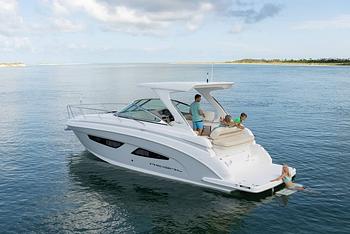
6th Sep 2024
The Best Mini Yacht Brands for Cruising and Luxury
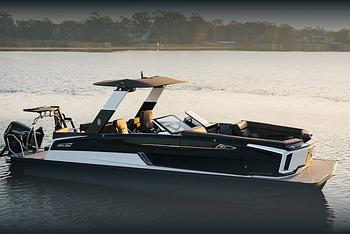
16th Aug 2024
Best Luxury Pontoon Boat Brands Have it All: Glamor, Speed, Fishing, Waterslides...
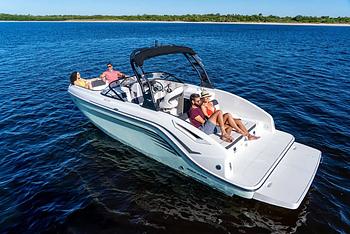
10th Aug 2024
Deck Boat vs. Bowrider: Which Runabout is Best?

19th Jul 2024
The World’s Best Yacht Brands

- Explore Rightboat
- Boats for Sale
- Boating Articles
- Buyers Guide
- About RightBoat
- Sell Your Boat
- Boat Selling Advice
- All manufacturers
- All categories
- Are you a broker/dealer?
- Learn more about the Rightboat:HUB
Enter your email to keep up to date with the latest news
Join for free
Sign up now for free and discover how easy it is to keep up to date with THE latest boats for sale. Find your right boat, and tailor your voyage to finding your next boat.
Benefits of becoming a member:
- Set up tailored alerts
- Personalise your experience
- Download full specifications and broker details
- Keep tabs on your favourite boats
Are you a broker? Join as a Broker
Rightboat - join for free.
Do you have an account already? Login
Save this search
Save your search and receive new boats in your email..
You can unsubscribe from your alerts whenever you like. By pressing the button you accept the Legal Terms and conditions
- Boat types: A comprehensive guide to different kinds of boats
If you're fascinated by the vast world of boating, you've probably come across various types of boats. Boats come in a wide range of sizes, shapes, and functionalities, each designed for specific activities and environments. In this article, we'll explore different boat types, their characteristics, and their ideal uses. Whether you're a seasoned sailor or a curious newcomer, this guide will provide you with valuable insights into the world of boats.
Sailboats, also known as sailing yachts, rely on wind power to propel them through the water. They offer a serene and eco-friendly boating experience. Here are some common sailboat types:
Dinghies are small, lightweight sailboats typically used for leisurely sailing and training purposes. They are perfect for beginners due to their simplicity and ease of use.
Daysailers are slightly larger than dinghies and are designed for day trips and short excursions. They provide comfortable seating and often feature a small cabin for storage or overnight stays.
Cruisers are spacious sailboats equipped with cabins, berths, and amenities for extended stays on the water. They are ideal for sailing enthusiasts looking for comfort and accommodations during longer voyages.
Racing sailboats
Racing sailboats are built for speed and competition. They feature sleek designs, lightweight construction, and advanced sailing techniques to maximize performance in races and regattas.
Read our top notch articles on topics such as sailing, sailing tips and destinations in our Magazine.
Powerboats, as the name suggests, rely on engines for propulsion. They offer speed, versatility, and power, making them popular among recreational boaters. Let's explore various powerboat types:
Runabouts are small powerboats designed for short trips, watersports, and leisure cruising. They are usually equipped with seating, a small cabin, and basic amenities.
Bowriders are versatile boats that feature an open bow area with seating. They are perfect for family outings and activities such as waterskiing, fishing, or simply enjoying a day on the water.
Center consoles
Center console boats are characterized by their centrally located helm and open deck space. They are commonly used for fishing and provide easy access to all sides of the boat.

Cuddy cabins
Cuddy cabin boats combine the features of a powerboat with a small cabin for storage and occasional overnight stays. They offer comfort and versatility for day trips or short overnight adventures.
Pontoon boats
Pontoon boats are known for their stability and spaciousness. They feature a flat deck mounted on two or three pontoons and are perfect for leisurely cruises, parties, and entertaining guests.
Ski and wakeboard boats
Ski and wakeboard boats are designed specifically for watersports activities. They have powerful engines, specialized hulls, and equipment such as wakeboard towers or ski pylons to enhance the experience.
Fishing boats
Fishing boats come in various sizes and designs, tailored to different fishing styles and environments. From small, nimble bass boats to sturdy offshore fishing vessels, there's a boat for every angler.
Trawlers are long-range, fuel-efficient boats designed for extended cruising and living aboard. They offer comfortable accommodations and are perfect for those seeking adventure on the open seas.
Boats at sea.
Personal watercraft
Personal watercraft, commonly known as jet skis, are small, motorized vessels designed for individual riders. They provide thrilling experiences and are often used for recreational purposes and watersports.
Inflatable boats
Inflatable boats are lightweight, portable, and versatile. They can be deflated and packed into a compact size, making them ideal for boaters who value convenience and easy storage.
Kayaks and canoes
Kayaks and canoes are small, manually propelled boats used for recreational paddling and exploring calm waters. They offer a peaceful and intimate connection with nature.
So what are you waiting for? Take a look at our range of charter boats and head to some of our favourite sailing destinations .
FAQs about choosing a boat
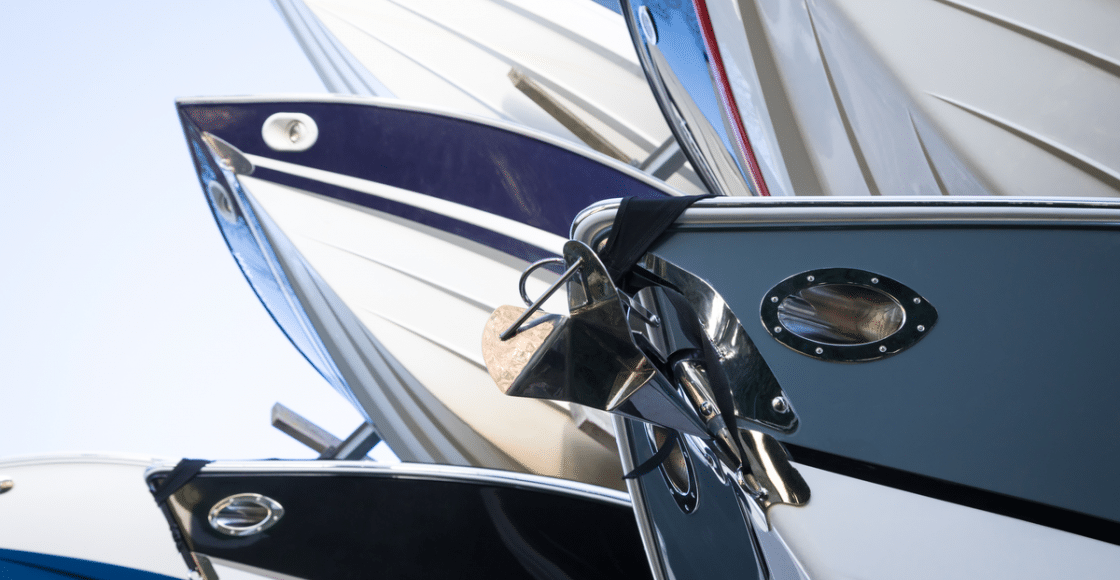
Boat Hulls 101: Complete Guide to Boat Hull Types, Shapes, and Designs

Table of Contents
Last Updated on August 17, 2023 by Boatsetter Team
If you’re new to boating, then you may not have even considered a boat’s hull , its importance, and the way that it affects your time on the water. With the hull being the part of the boat in the water, it is perhaps the most important part as it gives your boat the ability to float. Not only that, but it affects every single characteristic of your boat and the smoothness of your ride. This article on boat hulls will equip you with the technical knowledge and expertise necessary to understand hulls and the way they work.
What is a Boat Hull?
First of all, we’ll go into a bit of detail on what a boat hull is. The hull is the body of the boat. It is sealed to prevent water from transmitting its way through and keeping your boat afloat. A hull can be open where you sit in it, such as a small dinghy, or a deck may cover it as you would find on a yacht.
When there is a deck placed on top of a hull, it opens up many more options for utilizing the space on your boat more appropriately as it is raised to the top of the hull, where more space is apparent. For example, on a deck, you can place a cabin -like you would find on a center console or even a mast and sail rigs to create a sailboat.
When the hull is open, options to use your space effectively are reduced as you sit at the bottom of the bowl shape. In addition to having less space, you also feel the rock of the water in a more pronounced manner as it is just the keel of the boat (the bottom) separating you from the water. Therefore, every wave and lurch in the water that rocks the boat is felt, which may cause you discomfort if you haven’t quite found your sea legs.
Why Are Hulls Important?
The knowledge of how a boat floats is fundamental if you are looking to get into boating. Without actually knowing, you put yourself at risk of compromising your boating activities and creating a danger that you cause your boat to sink. The key line to this knowledge is that the air encapsulating your boat must be denser than the water it sits upon. This not only includes the air but the items on your boat as they contribute towards the pressure that your boat’s hull puts upon the water.
The greater the amount of weight your boat holds, the further it pushes itself into the water, lowering or raising the level that your hull sits in the water. This force displaces the water to a level that is equal to the boat. If the average density of the boat is greater than the water, then the boat shall sink. You can see this in action if you have a small dinghy; the more people you place on it, you’ll notice that your boat edges itself ever so slightly more into the water as the boat’s weight is rising.
Different types of Boat Hulls
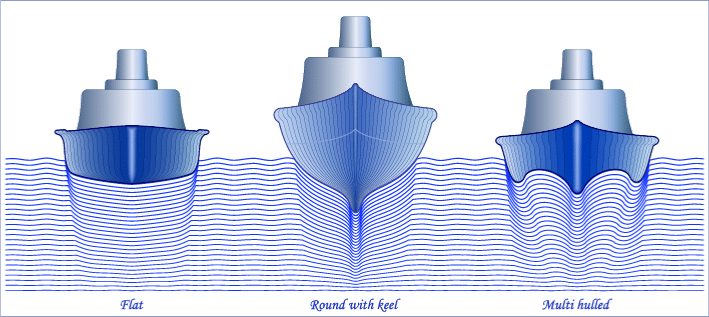
We’ll now walk you through the different types of boat hulls that you come across. The design of the boat’s hull changes the type of boat that you have. If you are browsing through our boat rentals, you’ll notice the various types of boats. Each of these boats has a different type of hull design. For example, a pontoon boat rental is designed for calm waters, whereas a giant yacht is designed for taking on the rough seas, meaning that their hulls vary greatly.
There are two main types of hull: displacement and planing. We’ll give you the rundown of both of these types and the other sub-varieties within them.
Displacement Hulls
The first variety of hulls that we shall examine are displacement hulls. These hulls are typically found on boats that need to carry a heavy load, such as a large fishing boat and big yachts. The hull sits deeper into the water, and the boat is supported by buoyancy, as opposed to its thrust.
Due to the boat sitting deeper in the water, it might be slower, but it will ride steadier. These larger boats are particularly good for the sea as they can handle stronger waves and currents as the boat can stabilize themselves better. This is why you’ll see container ships and other varieties that need to bear a heavy load using these types of hulls.
When it comes to boat rentals, you are most likely to find a sailing boat with a displacement boat hull. The hull is rounded at the bottom, allowing the sailboat to lurch strongly to one side while turning without any danger of capsizing. Thus, we can see the impact that the hull has on your boat rental as it gives your sailboat the extra capacity to lurch around sharp turns and enjoy some exhilarating fun.
Planing Hulls
The other main type of hull is the planing hull. This hull’s design allows the boat to accelerate to higher speeds due to less hull being placed in the water. When a boat with a planing hull is cruising at lower speeds, it operates similarly to a boat with a displacement. When it starts to hit around 15 knots, things start to change depending on the weight of the boat’s load. The flatter surface of the planing hull allows the boat to propel itself upwards to skiff itself across the water. This is what causes boats with planing hulls to obtain higher speeds. In addition, because the bulk of the hull is not placed below the water’s surface, there is less tension from the water holding the boat back, meaning that it can move through the water faster and using less power to obtain a speed that a boat with a displacement hull can.
There is not only one type of planing hull but instead many different varieties. We’ll look through these varieties to examine how it affects your boating experience so that you can make a more informed decision when choosing your next boat rental.
Flat Bottomed Hulls
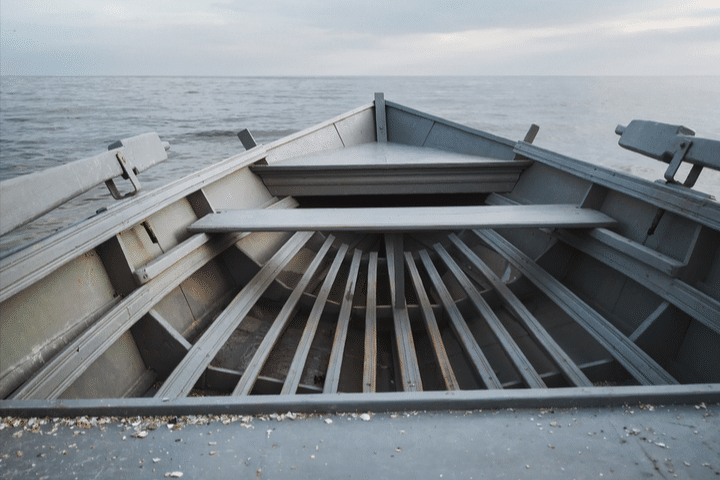
As the name suggests, these hulls do not have the traditional curved hull that reaches a point at the bottom but has a flat surface instead. These tend to be small skiffs or fishing boats where you cast out from. Due to them having a flat hull, they are excellent for getting into shallow water where some of your favorite catches may lie. These boats don’t need much power for the planing power to come into action and reach quick speeds in no time. They also tend to handle well not just on the flats but also on the sea, with choppy water not being a big issue. So, if you’re looking for some gentle fishing on the flats or maybe out in some nearshore waters, check out our range of small flat bottomed hull boats to truly enjoy some great fishing experiences.
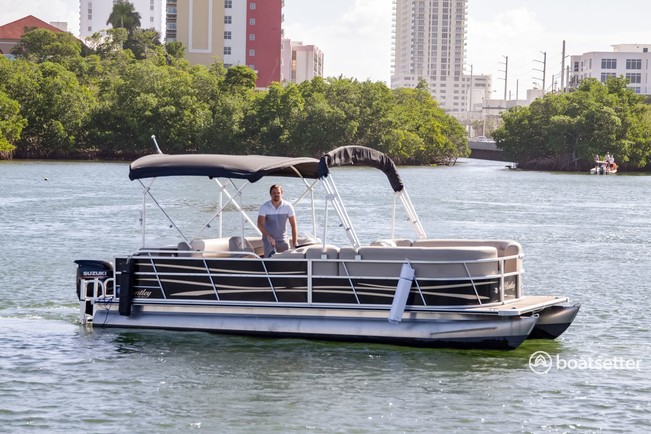
Pontoons are one of the great boat rentals for cruising around and enjoying time with friends because the design of their hulls allows for more space to be created. Pontoons have two-cylinder hulls that sit parallel to each other on the surface of the water. The deck is placed atop these two cylinders, and because they are placed on cylinders, the deck can expand beyond the cylinders, creating more space. This allows for a comfortable seating/social area to be created on the boat, allowing you to use it for parties and some relaxed exploring with the wider family. These boats are best used on inland and flat waters. This is due to waves rocking them a lot more, and a storm at sea can even put them at risk of capsizing. For some fun on a lake, however, pontoons are hard to beat.
In recent years many tritoons have started to crop up on the boat rental market. These are similar to pontoons, but they have a third cylinder that gives them some extra stability. It also means that they can handle a more powerful engine that can bring them up to higher speeds than a pontoon boat. If a pontoon has an engine that is too powerful, then its planing hull can lift it too far above the water’s surface, causing great instability. However, when it comes to tritoons, the greater speeds that you can reach allow you to expand upon other activities and add in some wakeboarding or tubing action onto your party on the water!
V Bottom Hull
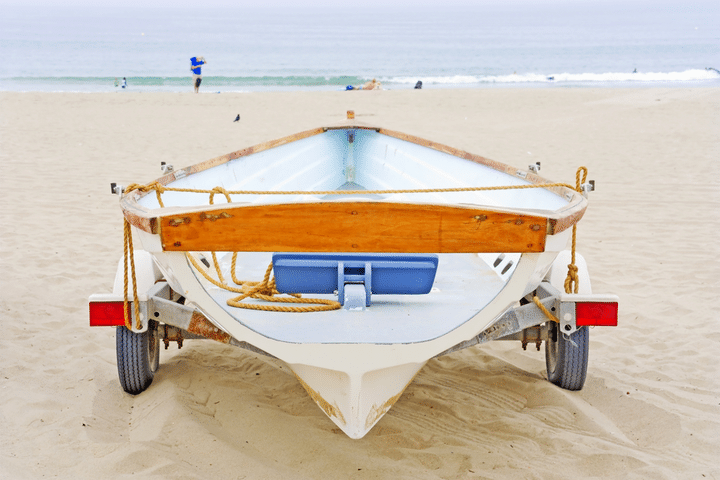
The shape of a v bottom hull has a sharper decline that accumulates in having a meeting point at the bottom, creating a v shape, as stated in the name. Because of the honed hull, one of these boats can cut through the water at decent speeds and are particularly good when out on seawater. However, they require a powerful engine for the boat to go into a planing mode. One of the most common types of v bottom hull boat rentals is center consoles. These are great vessels for going for some nearshore or offshore fishing or some general saltwater exploring. Their v bottom hull allows them to cut through the waves so that you can rush to the best fishing grounds in no time at all.
The tri-hull design is a variation of the v bottom hull. It has a v-shaped hull in the center and two parallel smaller hulls on either side of the main central one. This gives the tri-hull boat some extra stability when going forward . Additionally, this also allows the boat to have more deck space as the hull covers a wider range. One of the big drawbacks of the tri-hull – also known as a cathedral hull – is that the bat rocks more when it is in choppier water because the hull is wider. Nevertheless, tri-hulls make for a great option for fishing or exploring on lakes or calm coves.
Catamaran: A Multi-Hulled Boat
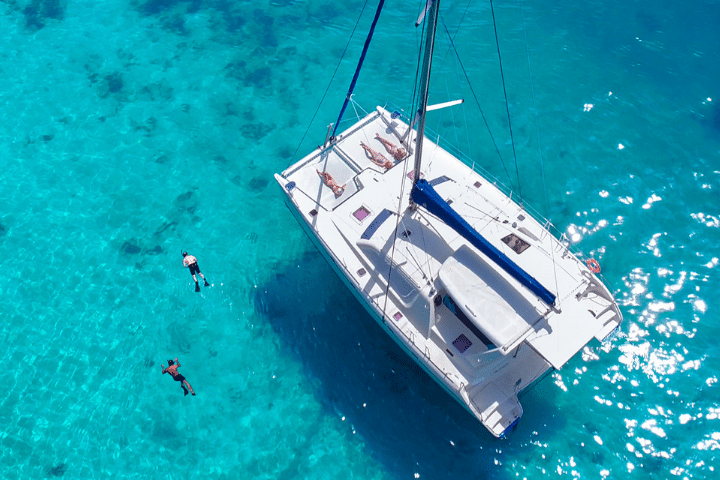
Perhaps the most popular multi-hulled boat is the catamaran. This type of boat has two separate hulls that run parallel to each other. These hulls sit on either side of the boat and the deck connects them. This type of design allows forecast amounts of space onboard . Many catamarans are luxury boats that can have the space to hold swimming pools and even helipads. Because they have dual hulls, catamarans can get themselves in shallow waters and lagoons where other luxury boats cannot. This makes them the perfect boat rental if you plan to visit a location where there are multiple small islands such as Hawaii or The Bahamas. The multi-hull system also provides a lot more stability and comfort, so they are perfect boat rentals if you are prone to suffering from seasickness . Catamarans are not only luxury liners as smaller versions with a trampoline-designed deck can also be found that make for great day adventures.
As we hope you have been able to discover in this blog post, the type of hull that your boat has affects everything about your boat. By having a little bit of knowledge on how the design of a boat’s hull has an impact on your boating experience, you can begin to make more informed decisions on which boat rental is best for you. To reinforce this information a little bit further, check out this video !

Boatsetter empowers people to explore with confidence by showing them a world of possibility on the water. Rent a boat, list your boat, or become a Boatsetter captain today.
Browse by experience

Explore articles
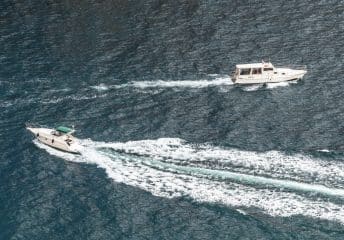
Who Is Responsible for Avoiding a Collision on the Water?

How Long Can You Finance a Boat?
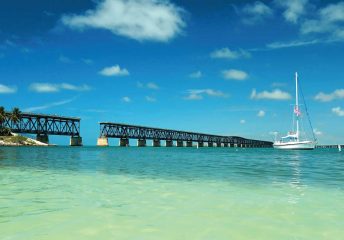
Private Boats from Miami to Key West
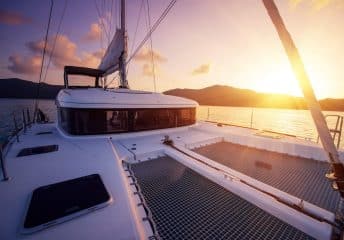
5 Best Liveaboard Boats

In A Historic First, 2 Chinese Container Ships Cross Paths Just 75 Nautical Miles From The North Pole

MSC Competes with Maersk For Denmark’s Largest Container Port of Aarhus

Watch: Cruise Ship Collides With Large Piece Of Drifting Ice In Alaska

Canadian Coast Guard Acquires Its First-Ever Autonomous Surface Vessel

The Ultimate Guide to Different Types of Boats – Top 20
As we all know, a boat is a type of watercraft that has been specifically designed for navigating near-shore areas or inland waterways such as rivers and lakes.
What makes a boat different from a ship is its smaller size and lesser carrying capacity compared to the latter.
However, the definition of a boat –its size, shape and capacity-varies according to its purpose. To understand better, you might want to read about the major differences between boat and ship .
According to modern naval terms, a boat is defined as a watercraft that is small enough to be carried abroad a ship (some boats are measured up to 1000 feet in length).
Similarly, many boats are intended to provide service, not in near-shore areas but in the offshore environment.
Interestingly, contradicting the “ships can carry boats, but boats can’t carry ships” argument, even sometimes the US Navy submarines are called boats.
Historical evidence suggests that the boat has been used for transportation since pre-historic times. However, from the oldest known boat named dugouts, the evolution of the watercraft has now reached luxurious motor yachts.
Apart from recreational purposes, boats have also served an integral purpose in the modern commercial world by allowing active transportation of both passengers and cargo, wherever short distances are concerned.
Table of Contents
Types of Boats
Technically, there are several different types of boats, and it’s impossible to list down all the types. But, primarily, boats can be classified into three main sections as follows:
- Unpowered or man-powered boats (like rafts, gondolas, kayaks, etc.),
- Sailboats (sail-propelled)
- Motorboats (engine-powered)
Here we have a list of the major types of boats in the above-mentioned categories of vessels, along with boat pictures used around the world.
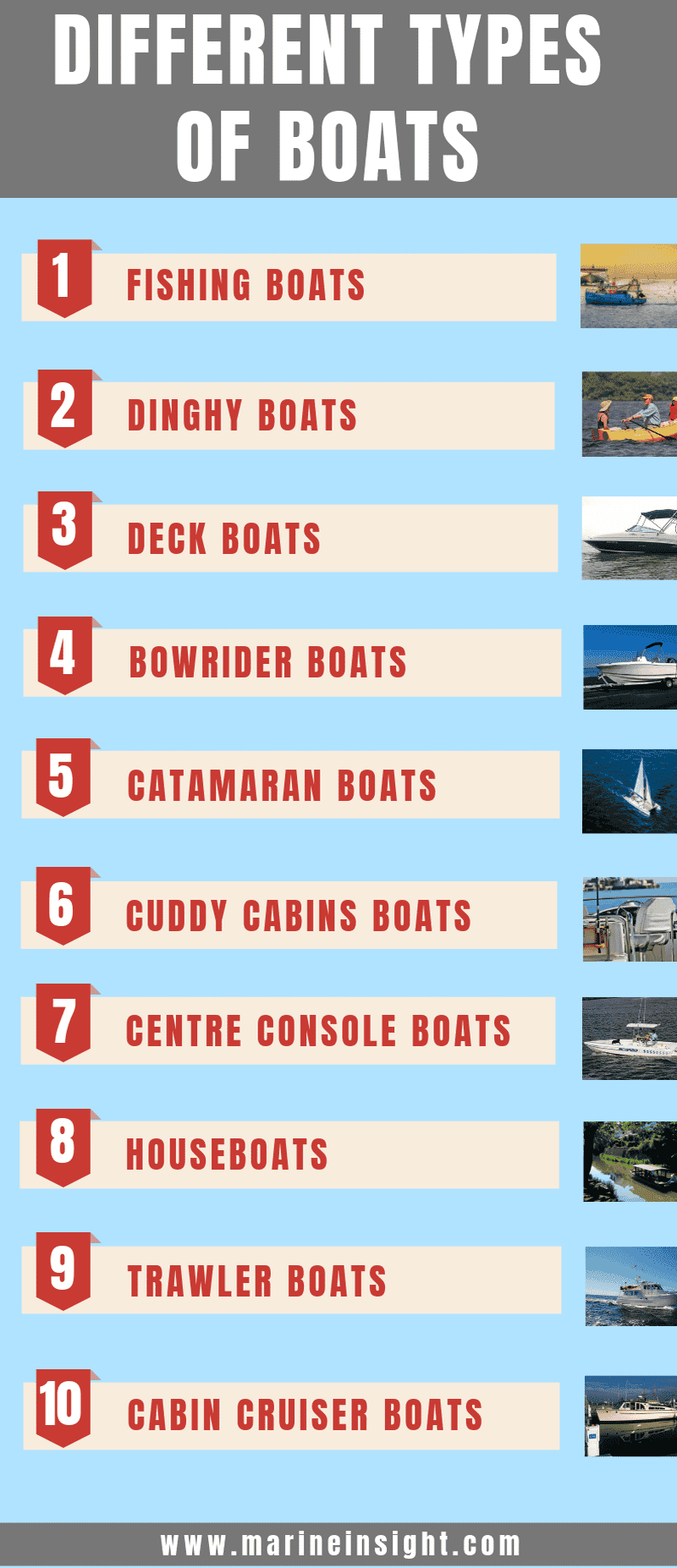
Related Read: 5 Biggest and Magnificent Sailing Ships of All Time
1. Fishing Boats
Built exclusively for fishing, fishing boats in different sizes are used on both salt and freshwater bodies. The immediate qualities of these boats include stability, strength, and durability to survive the fishing ventures across various kinds of waterways.
Fishing boats can be both manned and un-manned types. The all-purpose fishing boats generally include a front bow, rod lockers, a trolling motor system, an outboard power and live wells.
Compared to the boats meant for lakes and rivers, the boats fishing in the offshore environment will be taller in size and strong-built to withstand saltwater and harsher conditions.
On the other hand, the aluminium fishing boats weigh less and are highly durable. The bass boats designed with slim profiles, and consist of 2-3 anglers on board, are type of a boat used for fishing.

Related Read: Types of Fishing Vessels
2. Dinghy Boats
A dinghy can be a small inflatable boat usually made of rubber and comprises cross thwarts and rowlocks that act as seats and oars, respectively.
Commonly powered by sails, oars and small outboard engines, Dinghies are popularly known as sailboats, rowboats or simply inflatables.
These boats team up with more significant vessels and come in handy when the mothership cannot navigate in narrow areas. These rowboats can also be utilised as companion boats and are taken to camping expeditions or fishing in shallow waters.
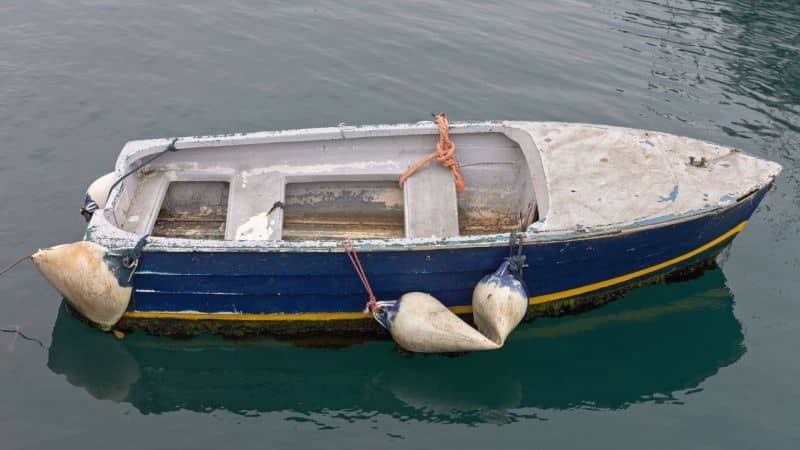
Related Read: Differences Between a Ship and a Boat
3. Deck Boats
As the name suggests, Deck Boats come with an open deck area that provides plenty of seating arrangements for a small group of people.
The boat features a V-shaped hull with a wide beam to accommodate more passengers than a pontoon boat. Usually measures 25-35 ft in length, they are provided with a stern power drive and are popularly used for recreational activities like swimming, water sports etc.
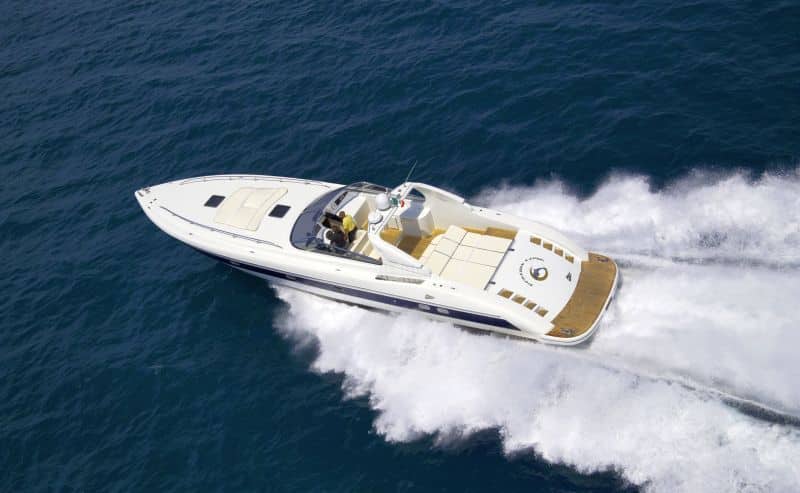
4. Bowrider Boats
Known as a quintessential family boat, Bowriders offer room for eight or more passengers across its cockpit, bow cockpit and helm. In addition, the bow area of these boats has been constructed in a unique way to allow a spacious seating arrangement.
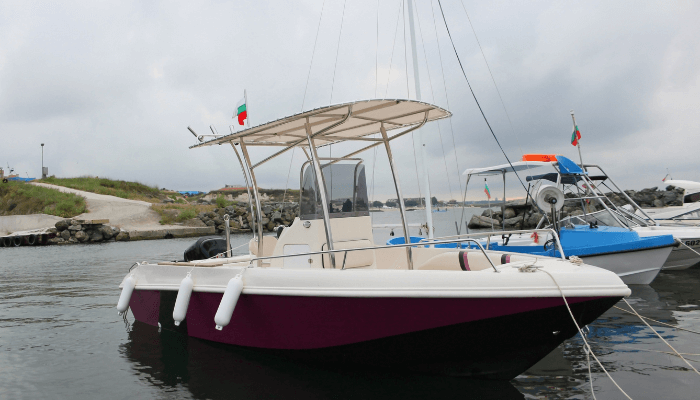
Moreover, these runabout-style vessels contain a swim platform for putting on wakeboards or for swimming activities feel-good leisure boating.
With its classic V-shaped bottom, Bowrider Boats offer a splendid ride across different water conditions. The usage of sterndrive power is the typical rule, but the demand for outboard engines is increasing rapidly.
4. Catamaran Boats
Unlike other boats, Catamaran is a multi-hulled watercraft that features two parallel hulls of equal size. Catamaran Boats feature less hull volume, shallower draft, and higher displacement than vessels with a single hull.
Excellent for fishing purposes and even for leisurely cruising abilities, Catamarans are being built for various purposes across the world.
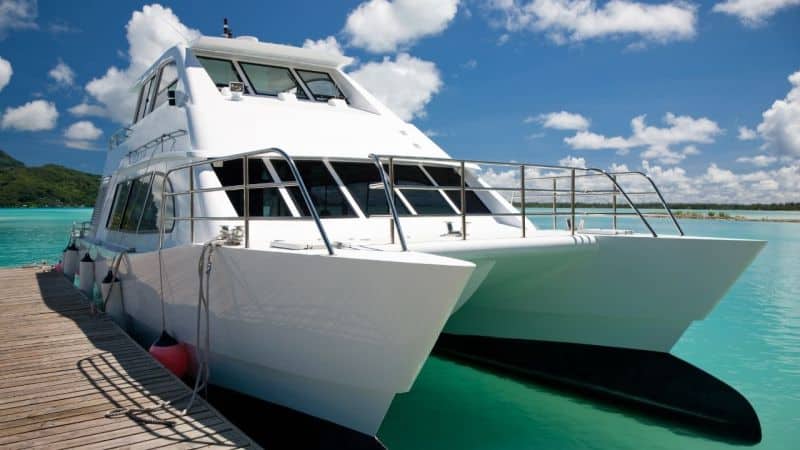
Related Read: Main Types of Catamarans Used in the Shipping World
6. Cuddy Cabins Boats
Well-suited for fishing, yachting, sailing and other water sports, Cuddy Cabins Boats is one of the most family-friendly vessels.
Featuring a closed deck over the boat’s bow, the boat allows a convenient storage space and easy navigation. The cuddy cabin boats are usually built of fibreglass and aluminium, and the minimum length is around 4.75 meters.
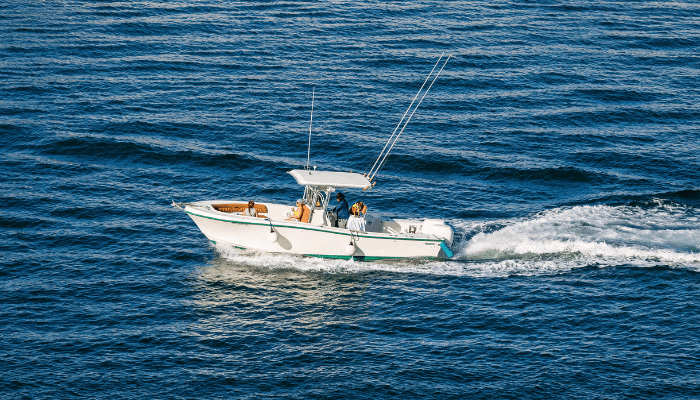
7. Centre Console Boats
Essentially a boat that features a hull with no cabin or foredeck and the helm station in the centre of the boat, Centre Consoles are great fishing platforms.
These boats are ideal for sports fishing and work in harsh offshore waterways with plenty of ocean fish. The essential equipment consists of bait wells, gunwale rod holders, fish lockers and outriggers, to name a few.
In addition, the deck provides a powerful insulation system for icing the fish storage.
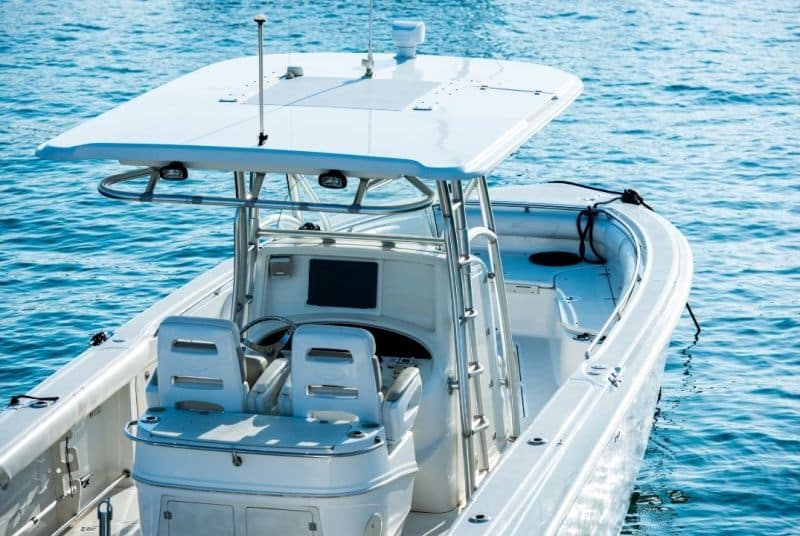
Related Read: Lafayette – The World’s Biggest Ship for Fish Processing
8. Houseboats
There are houseboats of different shapes and sizes worldwide, offering the luxury of living on water and providing excellent recreational and holiday accommodation facilities.
Houseboats, also known as Float house, incorporate broad flooring and modern amenities such as entertainment, fine dining, and proper sleeping arrangements.
The boats offer fun activities like relaxed cruising, water sports, family sailing etc. While most of the houseboats are motorized, there are boats incapable of operating under their own power since they are usually kept stationary at a location.
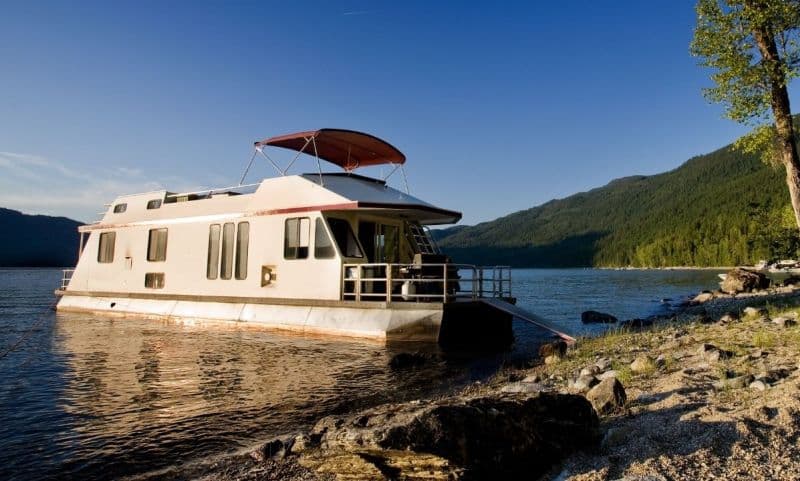
Related Read: Top 10 Largest Cruise Ships in 2017
9. Trawler Boats
With features including a displacement hull and fuel-efficient engines, trawlers are intended to smoothly manoeuvre through the water bodies without exhausting much horsepower or consuming excessive fuel.
This quality makes the trawler a brilliant option for long-range cruising activities, as all modern facilities can be found aboard the boat.
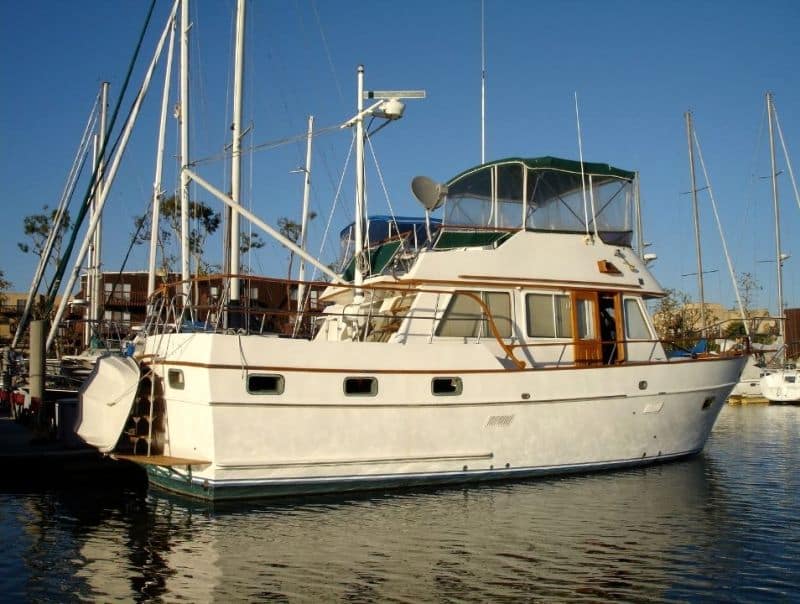
10. Cabin Cruiser Boats
Offering all the essential features of a home, Cabin Cruiser boats are great for relaxed sailing. Designed with a galley and a berth, these boats offer modern comforts like heaters, air conditioners, and power generators.
In addition to a deep-V bottom, the Cabin Cruisers employ a secure shaft drive mechanism plus rudder steering and therefore are mainly suited for movement in the salty water.
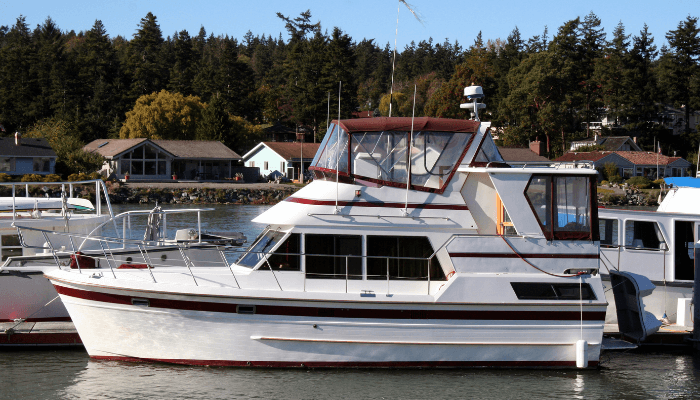
11. Game boats
Powered by diesel or petrol engines, these fibreglass boats are large in measurement and are useful for the game fish pursuit, especially pelagic fishes like tuna and marlin.
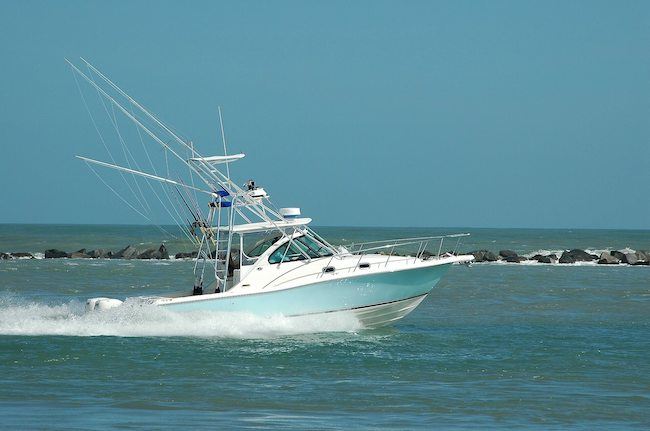
Equipped with sleeping berths, plumbing systems, and cooking galleys, these boats allow passengers to continue their activities for a couple of days or more.
12. Motor Yacht Boats
The latest design in the evolution of boats, the motor yacht, is a watercraft primarily used for leisure activities. The motor yacht has a standard length of 12m and above, with one or two diesel engines per navigation requirements in inland waters or the oceans.
The motor yacht can vouchsafe for an enjoyable family trip for a long period of time that it sails on the water. There are different types of yachts in the market, including day sailing yachts, weekender yachts, cruising yachts, luxury sailing yachts etc. to meet the various requirements.
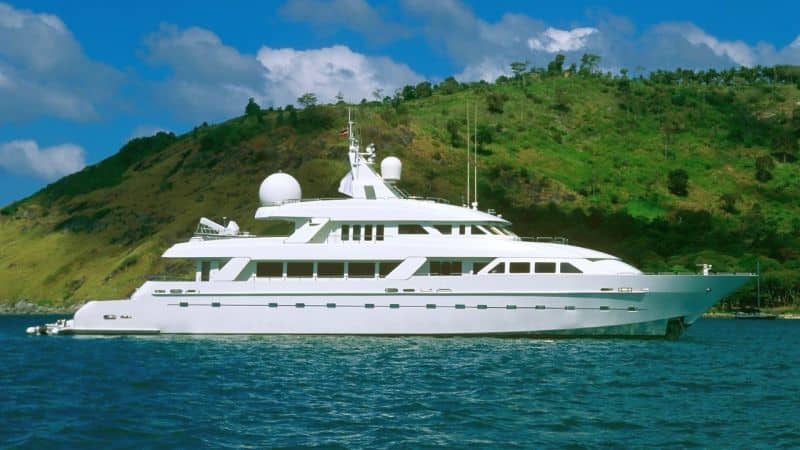
13. Personal Watercraft (PWC) Boats
The PWC boats, also known as water scooters and jetski, are customized boats for adventurous activities. This recreational watercraft allows individuals to explore the waters at their own ease and participate in games such as water-skiing and sports fishing, etc. There are two types of PWCs – “sit down” and “stand-up” models; while the former is intended for two or more people, the latter can only be used by a single rider.
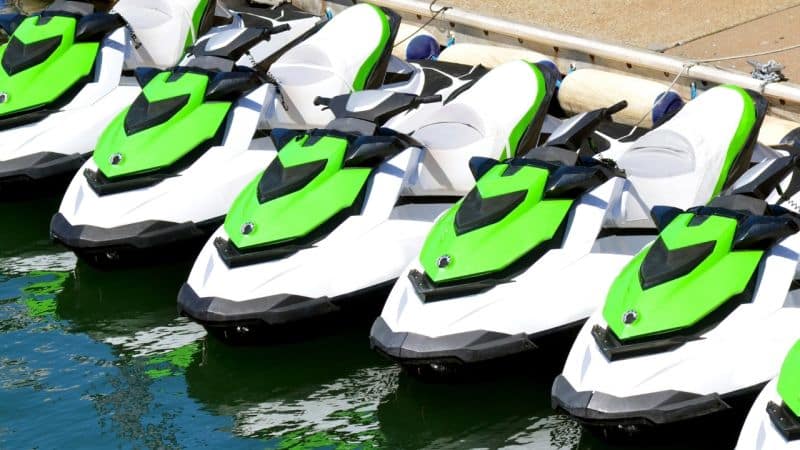
14. Runabout Boats
Capable of accommodating four and eight people, Runabout Boats are typically used in racing, fishing, water skiing, etc. The movement of these open boats is controlled by a steering wheel and forward controls, as located behind a windscreen. Runabouts are usually declared entry-level vessels for casual sports and boating activities.
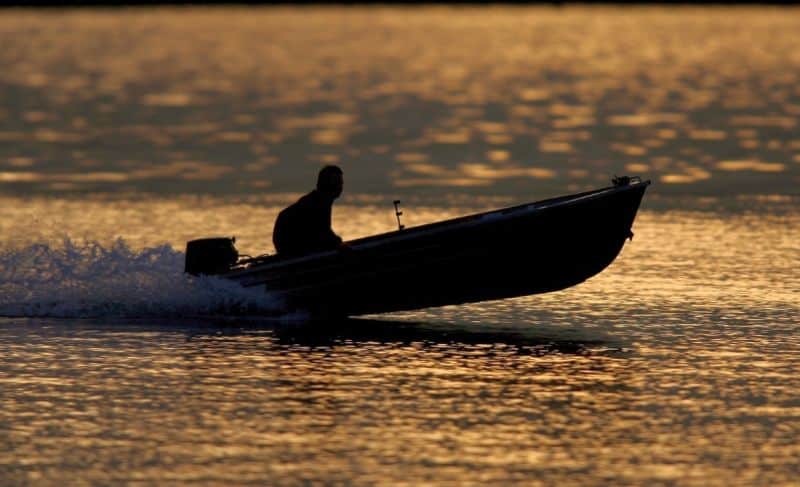
15. Jet Boats
Powered by a jet of water ejected from behind the vessel, Jet Boat is notable for its high manoeuvrability. The structure of a jet boat is quite similar to that of a bow-rider, as it offers a lot of seating areas and a swimming platform. In addition, the advanced propulsion system is securely enwrapped in the hull to protect it from any external damage.
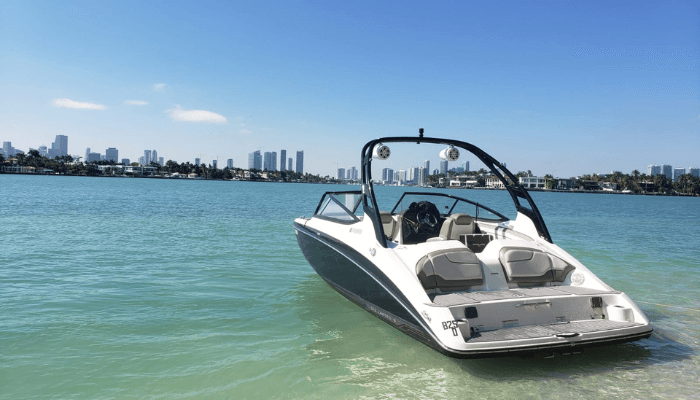
16. Wakeboard/ Ski Boats
The wakeboard boats and the ski boats look quite the same but differ in their fields of action. The inboard ski boats require a powerful range of acceleration, and the shape of the engine and propeller accentuates it. On the other hand, the inboard wakeboards feature a V drive engine system, deep hulls, and a huge wake to set in motion.
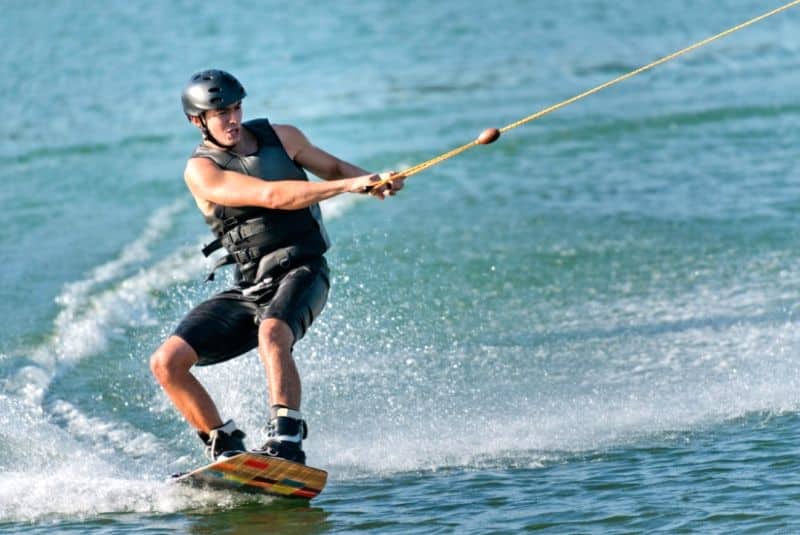
17. Banana Boats
A banana boat is a type of watercraft that is solely utilized for recreational activities and family entertainment. As the name suggests, it is a banana-shaped inflatable watercraft and easily floats on water. It does not have an inbuilt motor system. A banana boat has the capacity to seat around three to ten people. Interestingly, at the same, the vessels being used primarily for the transportation of bananas as cargo is also called Banana boats.
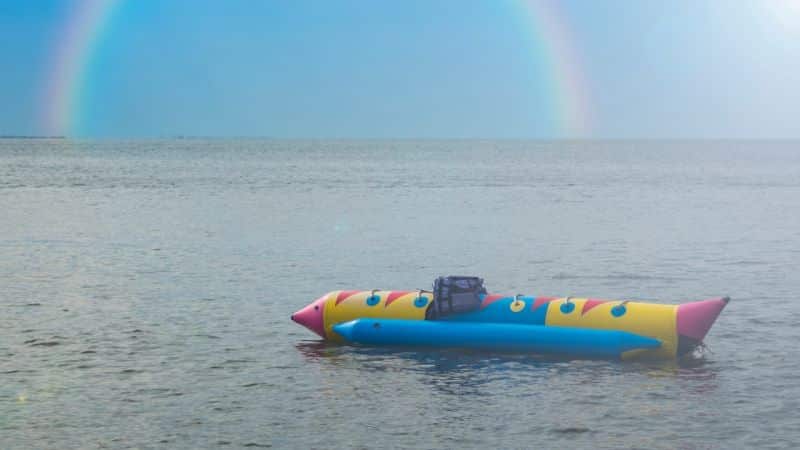
Related Read: Top 10 Most Expensive Private Yachts In The World
18. Lifeboats
In emergencies, lifeboats come to the rescue! The lifeboats are small watercraft attached to bigger vessels like cruises, and their main function is to carry passengers to a secure area if the concerned vessel is met with an accident. The lifeboats are well-equipped with immediate food and water supplies and other necessities to pacify the frightened voyagers in case of a shipwreck.
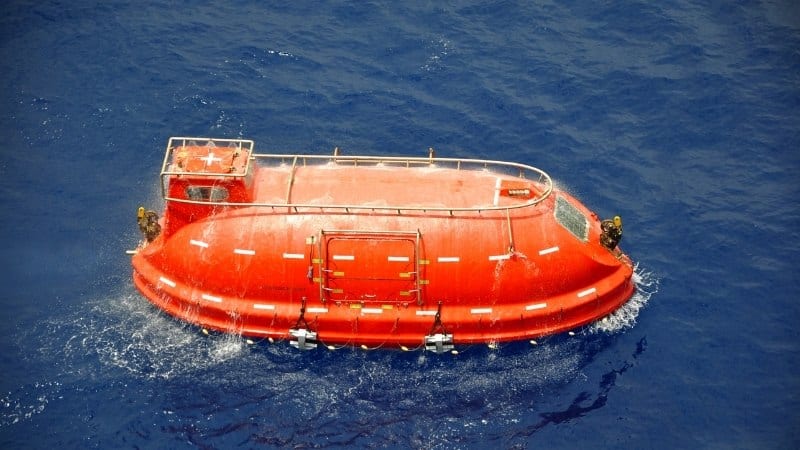
Related Read: Common Reasons for Ship’s Lifeboat Engine Starting Failure
19. Pontoon Boat
Used popularly for inland waters and other small water bodies, Pontoon boats are flattish in shape, relying on tubes (pontoons) to float on the water. Typically, the length of the Pontoon boat ranges from 15-30 ft with a shallow draft. It consists of multiple aluminium tubes supporting the broad platform providing excellent stability.
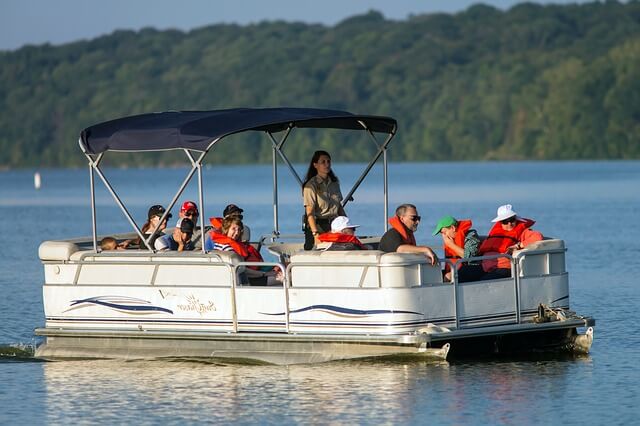
They are used for recreational activities like cruising and fishing etc. The shape of a Pontoon boat helps designers plan the seating arrangements and other facilities according to the requirements.
20. Sedan Bridge Boat
Typically ranging from about 35–65 feet in length, Sedan Bridge Boat by Sea Ray Company offers the pleasure of excellent visibility to the navigator. With an extended bridge area, the boat makes the passengers feel like a big ship bridge and offers accommodations down below to suit extended stays on the water.

Apart from the above-mentioned ones, several other types of boats are also available in the market.
The list of the boats continues with vessels such as Skiff or Jon Boats, Hydrofoil boats, Cigarette boats, Cuddy Boats, Tug Boats , High-Speed Crafts, Bumper Boats, Pilot Boat, Fire Boat, Well boats, Kayak, Bay or Flat Boats, All-Purpose fishing Boats, Deck Boats, High-Performance Boats, Rafts, Surfboats, Narrowboats, Folding Boats, Log Boats, Go-fast Boats, Catboats, Junk Boats, Ferry Boats, Canoe Boats, U-boats, Dory boats etc.
Over to you…
If you think any other type of boat should be added to this list, let’s know in the comments below.
You might also like to read:
- A Guide To Types of Ships
- Types of Sailboats: A Comprehensive Classification
- Different Types of Submarines and Underwater Vessels
- Different Types of Barges Used in the Shipping World
- LNG Tankers: Different Types And Dangers Involved
- What is Karadeniz Powership?
- Top 11 Books On Boating
Disclaimer : The information contained in this website is for general information purposes only. While we endeavour to keep the information up to date and correct, we make no representations or warranties of any kind, express or implied, about the completeness, accuracy, reliability, suitability or availability with respect to the website or the information, products, services, or related graphics contained on the website for any purpose. Any reliance you place on such information is therefore strictly at your own risk.
In no event will we be liable for any loss or damage including without limitation, indirect or consequential loss or damage, or any loss or damage whatsoever arising from loss of data or profits arising out of, or in connection with, the use of this website.

Do you have info to share with us ? Suggest a correction
Daily Maritime News, Straight To Your Inbox
Sign Up To Get Daily Newsletters
Join over 60k+ people who read our daily newsletters
By subscribing, you agree to our Privacy Policy and may receive occasional deal communications; you can unsubscribe anytime.

BE THE FIRST TO COMMENT
13 comments.
Though the personal watercraft boat seems like it would be an adventure, I’d prefer the classic fishing boat with an outboard power and live wells. I love fishing and this probably suits my needs just fine. It could also be that I don’t know how to swim either and this just seems safest.
Add another catergory Power Sailer. My Imexus 28 Trailer Sailer has a 180hp inboard whilst being generally sailing oriented. This catergory has some early examples like the Lancer 27, a big volume seller in the Macgregor 26Xand M and others like the Hunter X and Mackmam 28 All having large outboards fitted. Jimmy Buffett had one built I believe which was much bigger yacht again featuring a pair of 70 hp inboards I think. Just another catergory to add to the list. Regards Graeme
Well explained, I got some information about the bout on your article. I have shared it with my friend, who is planning to buy a boat. I am sure this post helps him to choose the right type of boat for him. He joined a yacht show in Thailand and like a boat from Boat Lagoon Yachting. Thanks for sharing.
@Johan: Glad the information came handy
I find it helpful that you made a list of boats with a detailed description of each. When I learned that a person can get a fishing boat so that they can be used to get saltwater and freshwater fish, my suggestion for boat buyers is to invest in a custom dock by a local contractor before buying one. Doing this will help them have a safe place to keep it safe while not in use.
Got any recommendations for a single man boat? I’m writing a character who likes the freedom of getting on his (modest) motor boat and taking off for the afternoon/evening. Below deck accommodations w/b great too. But I wouldn’t want to cost to be more than $20k. Any help is appreciated! Oh, and, he likes to go fast!
Nice post very informing. btw how do I know the difference between boats that are different that look the same?
I lovw boats so much! these are so cool! have you ever gone on a pizza boat they are the best things ever! carrbean pizza boats!!!!!!!!!!!!!!!!!!!!!!!!!!!!!!!!!!!!!!!!!!!!!!!!!!!!!!!!!!!!!!!!!!!!!!!!!!!!!!!!!!!!!!!!!!!!!!!!!!!!!!! i want to marry one one day. Lol.
This is really informative and i loved it i work with a marine company as a social media strategist and i was scouring the web for contents and i stumbled on this i thought i knew boats but now i know better thanks for the information btw i was wondering if you could give me permission to use some of these pictures for the content i’m creating. i’d love to hear from you soon. Regards
good information about boats
Banana Boats!! Seriously!!!
Leave a Reply
Your email address will not be published. Required fields are marked *
Subscribe to Marine Insight Daily Newsletter
" * " indicates required fields
Marine Engineering
Marine Engine Air Compressor Marine Boiler Oily Water Separator Marine Electrical Ship Generator Ship Stabilizer
Nautical Science
Mooring Bridge Watchkeeping Ship Manoeuvring Nautical Charts Anchoring Nautical Equipment Shipboard Guidelines
Explore
Free Maritime eBooks Premium Maritime eBooks Marine Safety Financial Planning Marine Careers Maritime Law Ship Dry Dock
Shipping News Maritime Reports Videos Maritime Piracy Offshore Safety Of Life At Sea (SOLAS) MARPOL
WAIT! Did You Download 13 FREE Maritime eBooks?
Sign-up and download instantly!
We respect your privacy and take protecting it very seriously. No spam!
The Illustrated Guide To Boat Hull Types (11 Examples)
I didn't understand anything about boat hull types. So I've researched what hulls I need for different conditions. Here's a complete list of the most common hulls.
What are the different boat hull types? There are three boat hull categories: displacement hulls, which displace water when moving; planing hulls, which create lift at high speeds; and semi-displacement hulls, which displace water and generate lift at low speeds. The most common hull types are round-bottomed, flat-bottomed, multi, V-shaped, and pontoon hulls.
But that's all pretty abstract if you ask me, so below I'll give a simple overview of what it all means. After that, I'll give a list with pictures of all the different designs.
A Simple Overview of Boat Hull Types
Your boat hull will be the biggest factor in how your boat handles or sails, how wet it is, how bumpy - absolutely everything is determined by the hull shape. So it's important to understand what different hulls will do for you, and what each hull is best for. First, let's slice it up into rough categories.
Roughly, you can divide boat hulls into three categories:
- Displacement hulls - Lie inside the water and push it away when they move
- Planing hulls - Lie on top of the water and don't push it away
- Semi-displacement hulls - Lie inside the water and push it away, but can generate lift
Everything I'll be mentioning below is one of those three, or something in between.
There are five common boat hull types:
- Round-bottomed hulls - handle well in rough water: sailboats
- Flat-bottomed hulls - very stable for calm inland waters: fishing boats
- Multihulls - very stable and buoyant: catamarans
- V-Shaped Hulls - fast and comfortable in chop: powerboats
- Pontoon hulls - fast and stable: pontoon boats
And then there's everything in-between.
Here's a quick and handy overview of the different hull types
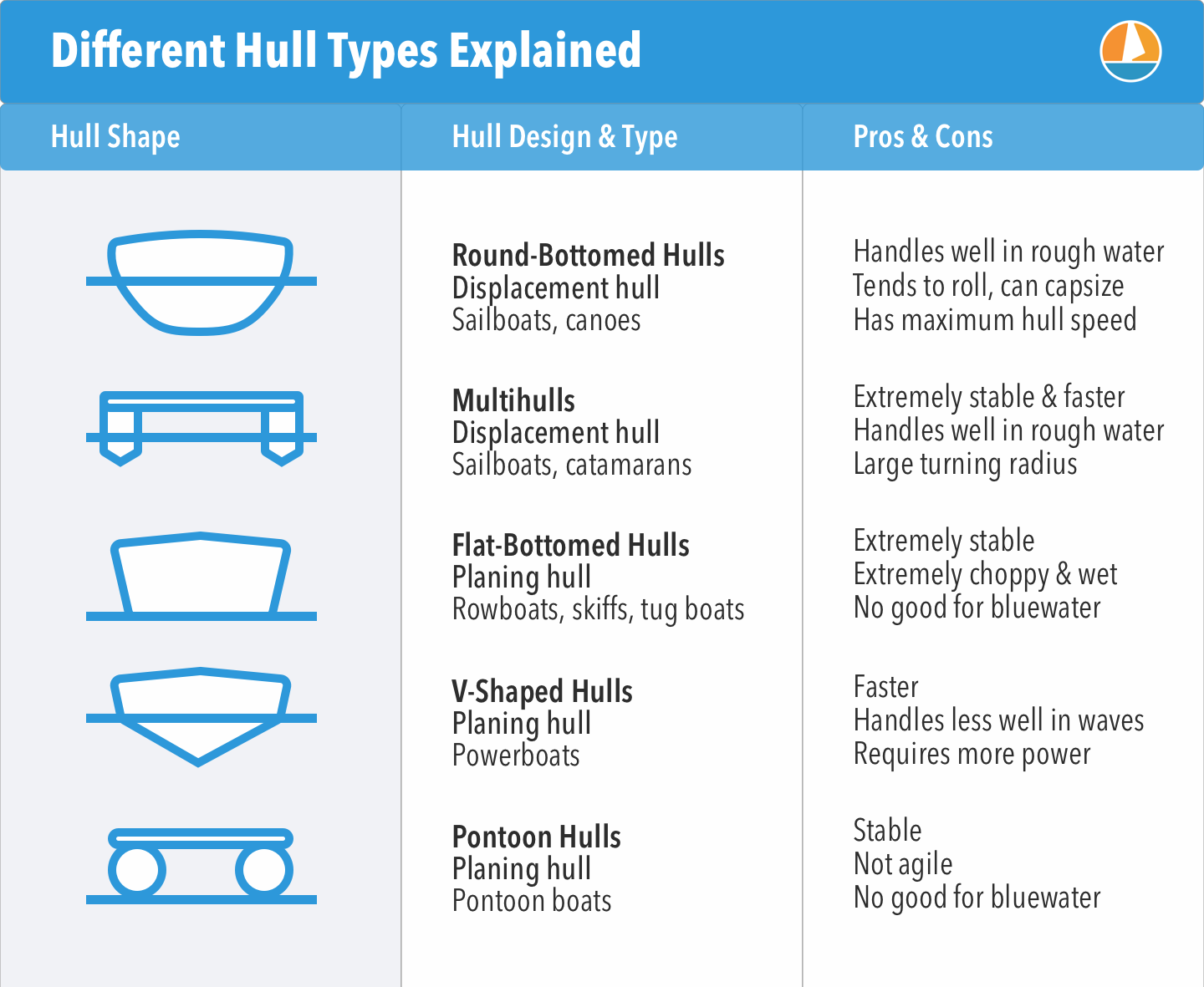
In each category, we find different designs and styles that have different characteristics. There isn't a real clear distinction between categories and styles: there are semi-displacement hulls and so on. So I thought the best way to learn you the different hull types is by simply creating a list with lots of pictures, instead of getting all theoretical about it.
So below I've listed all the different hull styles I could possibly think of, mention what category and type it is, the pros and cons of each one, and give you examples and illustrations for each one.

On this page:
Displacement hulls, round-bottom hull, catamaran hull, trimaran hull, planing hulls, flat-bottom hull, deep v-hull, modified-v hull, stepped hull, pontoon hull, semi-displacement hulls.
Examples: Sailboats, trawlers, fishing boats
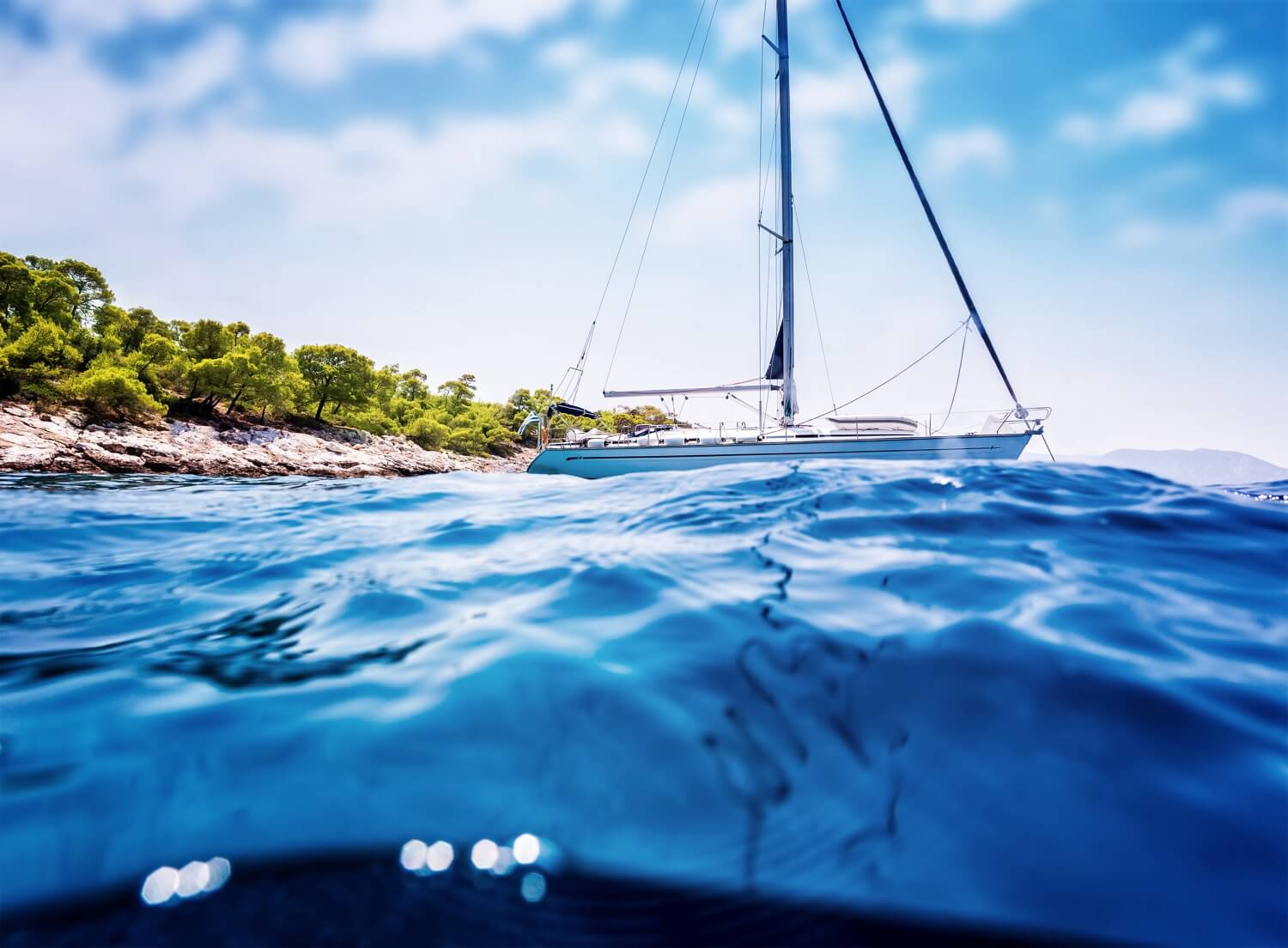
Displacement hulls displace water when moving. These hulls lie in the water, instead of on top of it. The amount of water they displace is equal to the boat's weight. Displacement hulls handle way better in rough waters than flat-bottom hulls. That's why most cruisers have some sort of displacement hulls. There are actually all kinds, shapes, and forms of the displacement hull design, which we'll go over later.
The most important thing to understand about the displacement hull, is that it operates on buoyancy. This means that most of the boat's weight is supported by its capacity to float . Planing hulls, on the other hand, operate on lift instead, but we'll dive into that later.
Sailboats typically have displacement hulls, but also fishing boats, trawlers and crabbers. All in all, it's used for each boat that needs to handle well in rough conditions.
Learn everything there is to know about displacement hulls in this article . It lists all the pros and cons and really goes into detail on the nitty-gritty about how displacement hulls actually work .
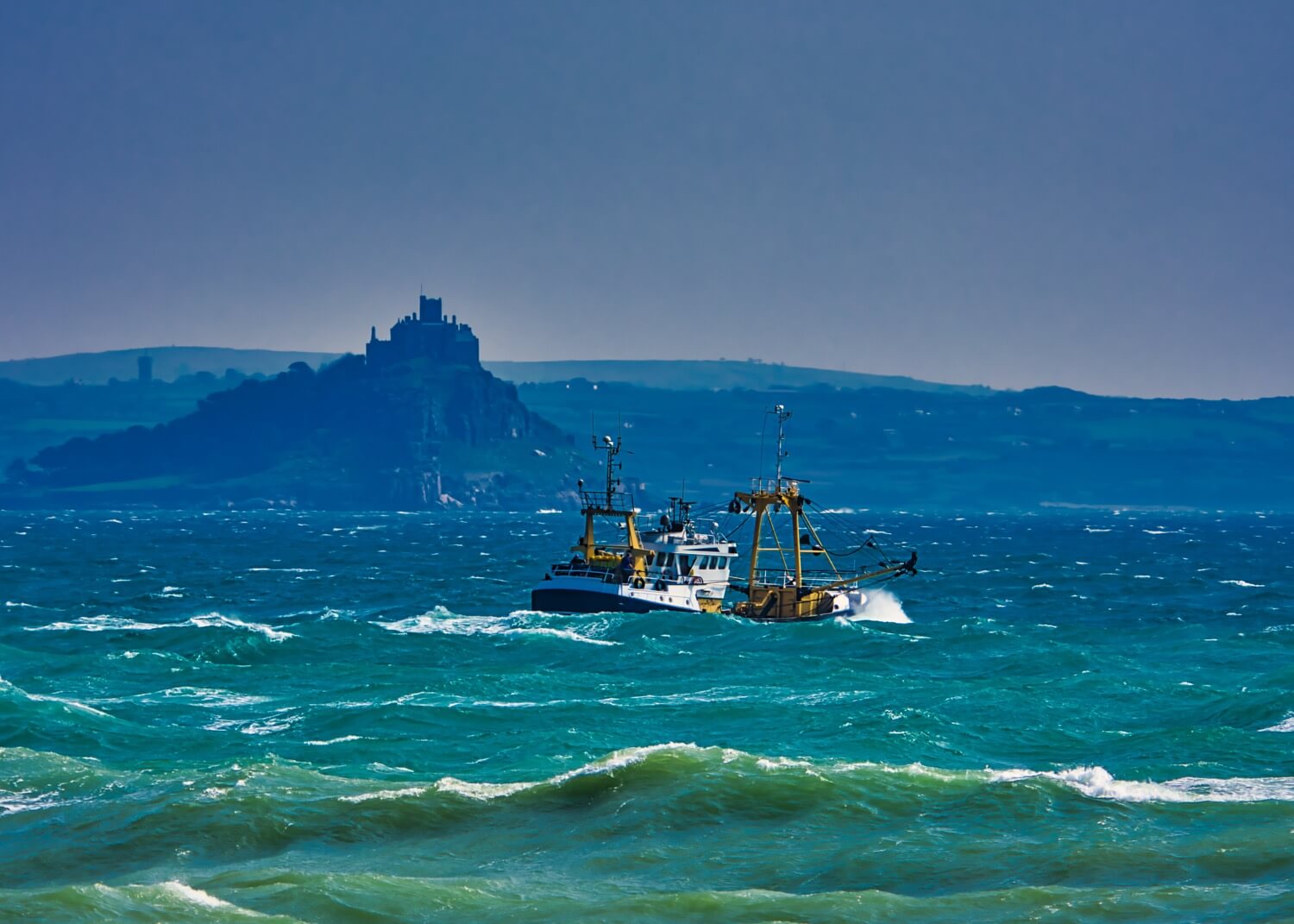
But they are also slower than flat and planing hulls because the boat creates more resistance when moving. It has to push the water aside. In fact, this type of hull has a built-in upper-speed limit.
This upper-speed limit is called maximum hull speed . It means that the length of a displacement hull directly determines the maximum speed. It can't go faster, because the water-resistance increases with the boat's speed. To learn everything about calculating maximum hull speed , please check out my previous article here.
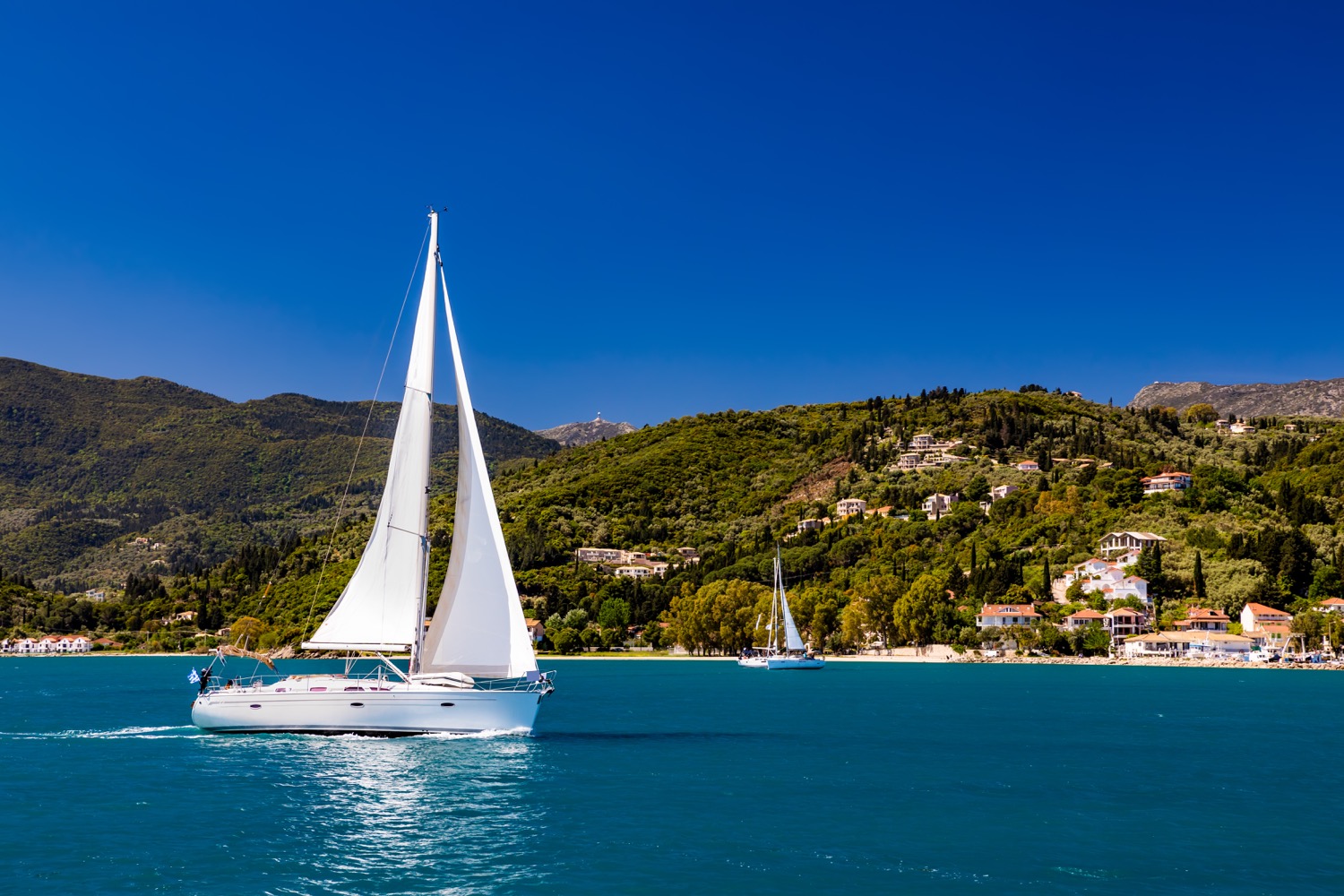
A round-bottomed hull is a type of displacement hull - it lies in the water and has to power through it. But since it's rounded, it creates little resistance and is effortless to move through the water. It's a very smooth ride and typical for any sailboat that sort of glides through the waves. In contrast, powerboats really have to eat their way through the water.
Examples: Canoes, sailboats
They are also one of the least stable. Since the bottom is rounded, your boat or canoe will rock plenty when boarding or moving around. They are also easy to capsize. That's why pro canoers learn to do a 360 in their canoes. I've never did a roll myself but came close enough a couple of times.
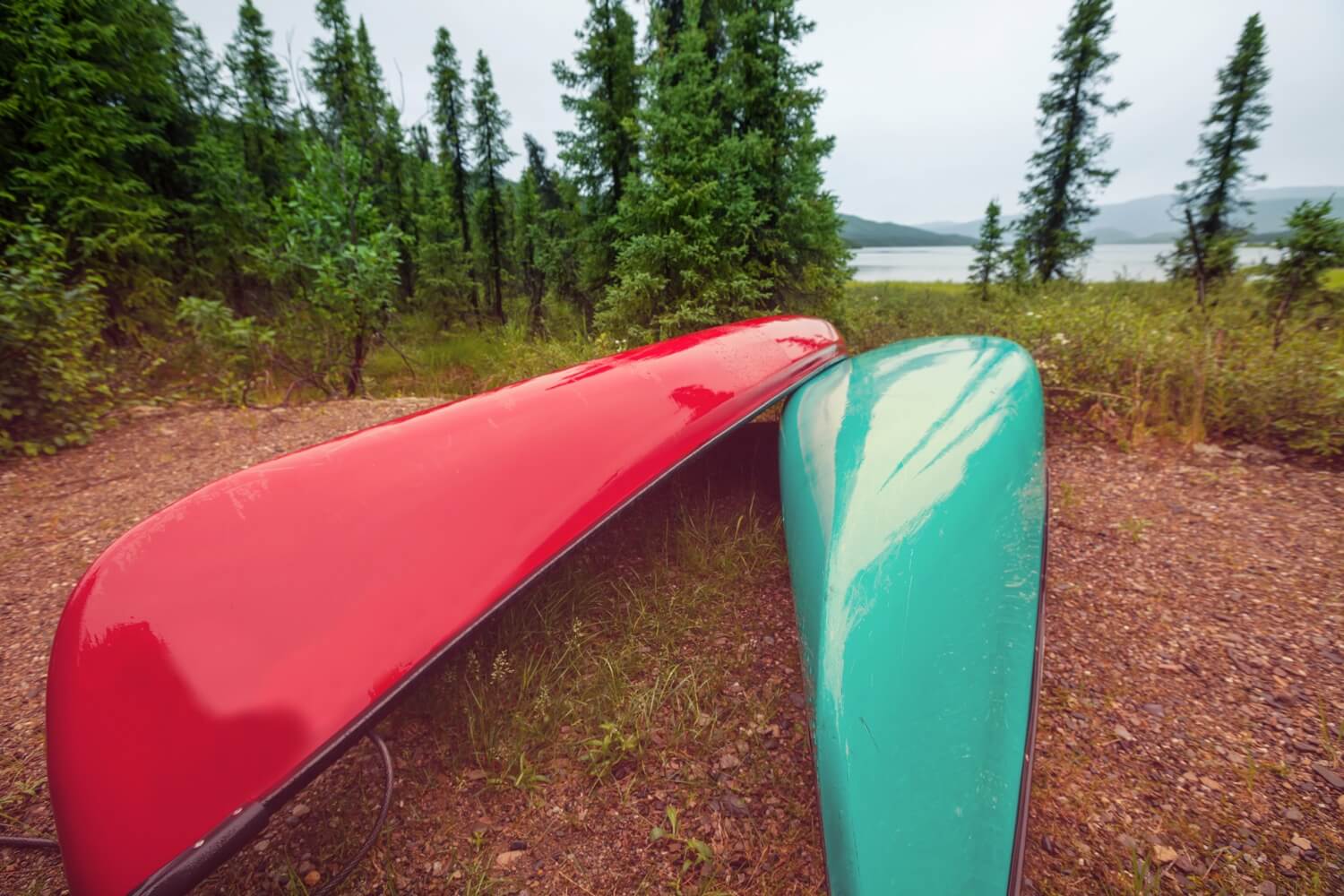
Almost all sailboats use a round bilge as well. This provides it its buoyancy and makes sure it handles well in waves. But since a rounded bilge is easy to capsize, a lot of sailboats have some sort of keel, which stabilizes the roll.
Nearly all ocean-going vessels use some sort of displacement hull, and the round bottom is the most common one. But our next guest is very popular as well.
The catamaran is similar to the pontoon hull (read on to learn more on that one), but it is a displacement multihull instead of a planing one. So it has two hulls, that lie inside the water and displace it. Like the pontoon, you will have to try really hard to capsize this design (and it won't work).
Examples: well, catamaran sailboats. But also this cool catamaran trawler:
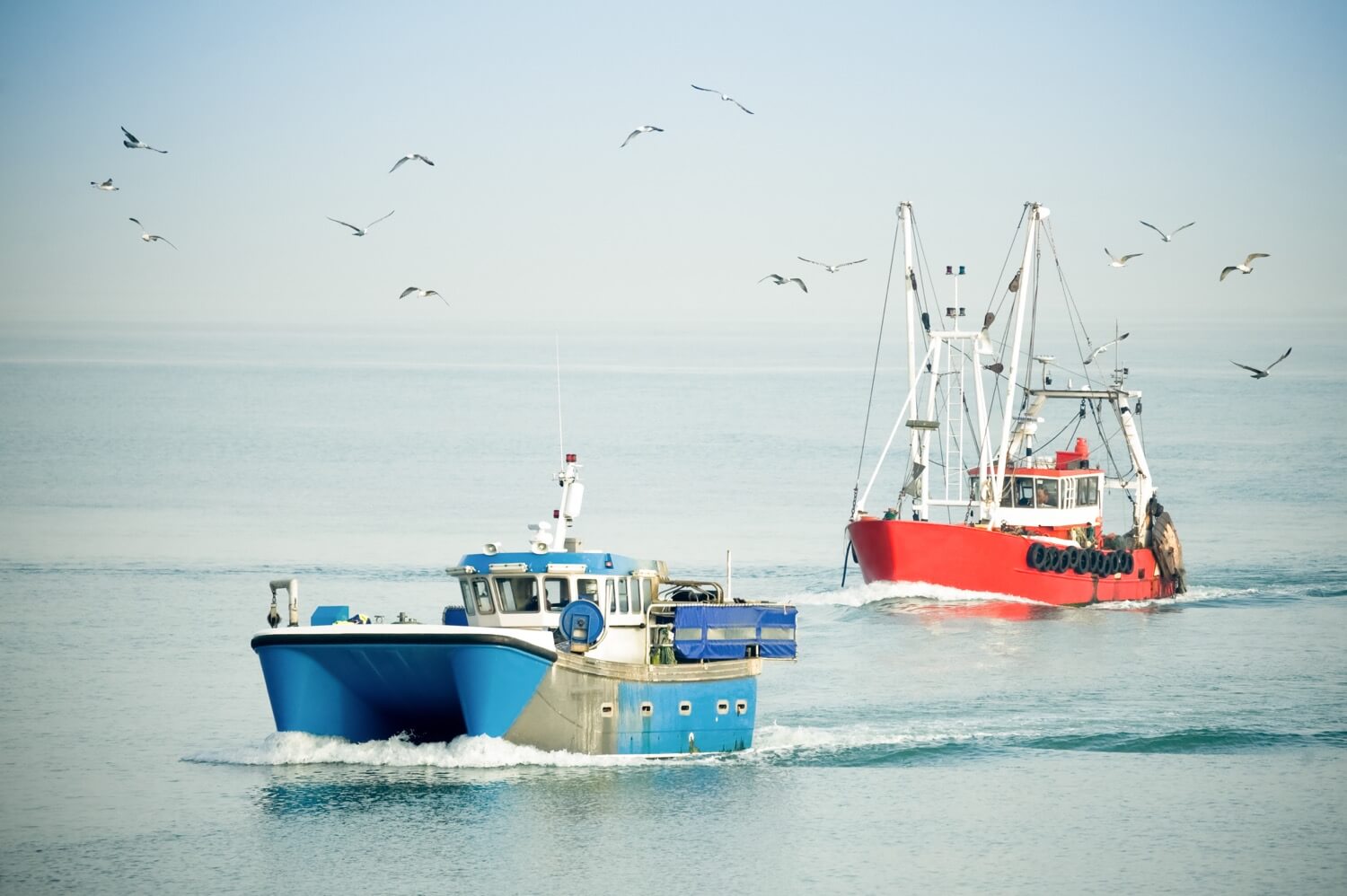
Catamarans are extremely popular ocean cruisers. Their biggest pro is their extreme stability and buoyancy. And they have a very shallow draft for a displacement hull, making them very popular for sailing reefs and shallow waters, like the Caribbean.
Some cons for the catamaran are less agile than monohulls. They have a large turning radius, making them less maneuverable. Also, expect to pay high marina fees with this one.
Speaking of marina fees, our next one can go either way.
I think trimarans are incredibly cool, and especially the second type.
There are two types of trimarans:
- a catamaran with three hulls instead of two,
- or a displacement monohull with two floaters.
The first has the same characteristics as the catamaran: it's a displacement multihull, but now with three hulls:

The second can be a regular displacement monohull, with two pontoon-type floaters that provide extra buoyancy, making the total thing a hybrid between pontoon and displacement:
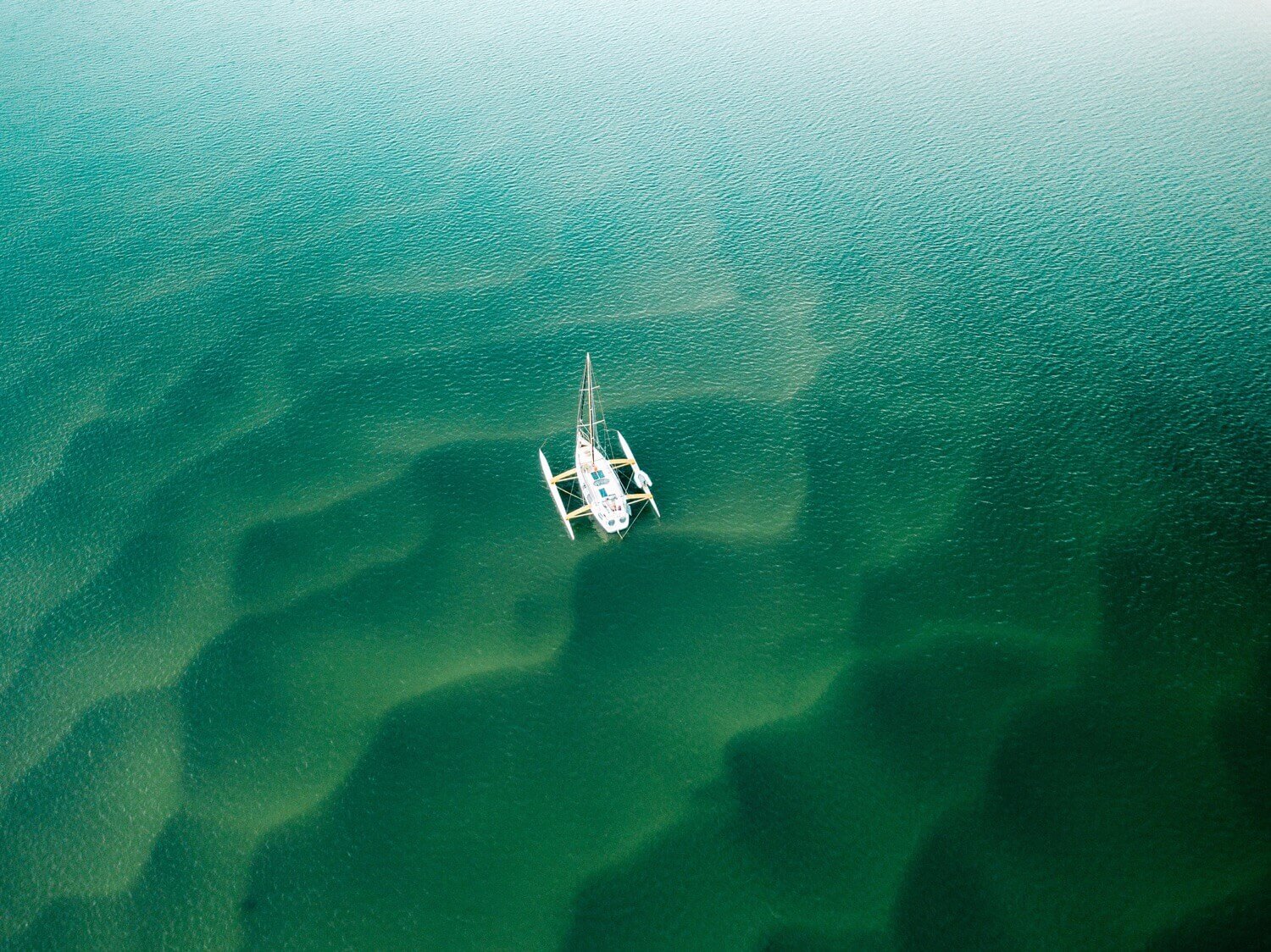
This last one has all the pros of a catamaran in terms of stability, but: you can simply wheel in those floaters whenever you head for port. That saves you a lot of money. And you can trailer her! Imagine that, a towing a trimaran home.
So those were the most common displacement hulls, aka what lives in the water. Let's move on to the planing hulls, aka what lives on the water.
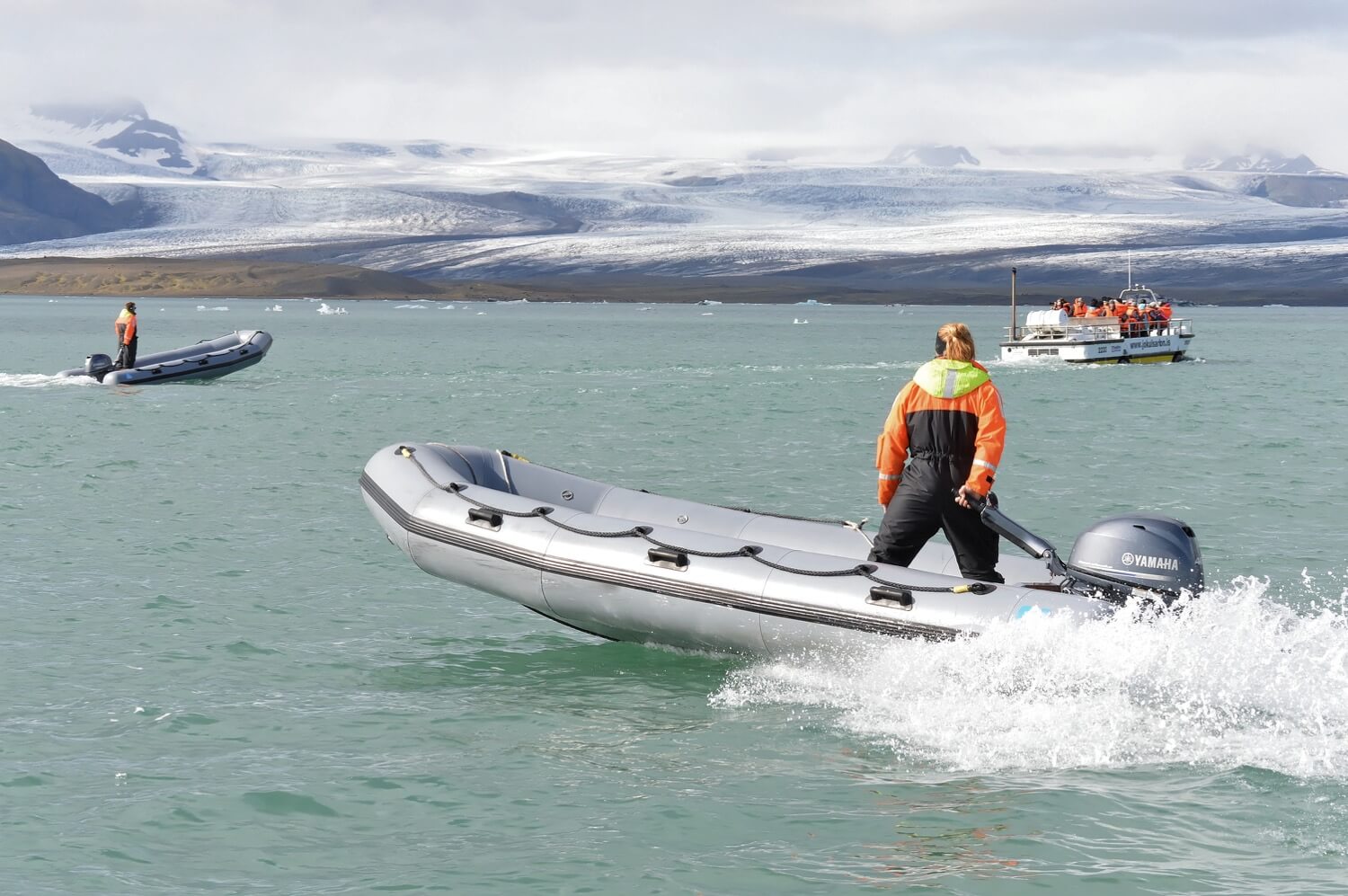
Planing hulls are a hybrid between the flat-bottom and displacement hulls. Planing hulls displace water at low speeds , but create lift at higher speeds . The shape of their hull + speed lifts them out of the water, making them glide on top of the water. Most powerboats look like flat-bottom boats but use a shallow V-shape that helps the boat to handle better at higher speeds.
Examples: Water sports boat, powerboats
The most important thing to understand about planing hulls is that they operate mainly on lift instead of buoyancy. This means the weight of the boat is mainly supported by dynamic forces 1 . With the right amount of power, this design generates lift, which results in less resistance. This is why they are a lot faster than boats with displacement hulls, but also a lot rougher, even with mild chop.
A lot of powerboats use some sort of planing hull. Again, there are many designs and variations on the planing hull, and I'll try to mention as many as I can below.
Because the wedge of the hull runs into the water, it is much easier to handle at high speeds. At lower speeds, it is able to keep its course, even with a bit of wind. However, whenever the boat starts planing, it is prone to wind gusts, since the wedge shape no longer stabilizes the boat.
The flatter the hull, the faster it will go, but also the more poorly it will handle. Other powerboats use deep V-hulls, which I'll discuss below. But first, let's take a look at the flattest hulls you'll ever see.
A flat-bottom hull lies on top of the water and doesn't displace water (okay, very little) as it moves. Since there is no displacement, there is also little to no friction when moving. This makes it potentially fast, but it handles pretty poorly. It is one of the most stable hull design.
Examples: rowboats, (old) high-performance powerboats, small skiffs, small fishing boats, tug boats
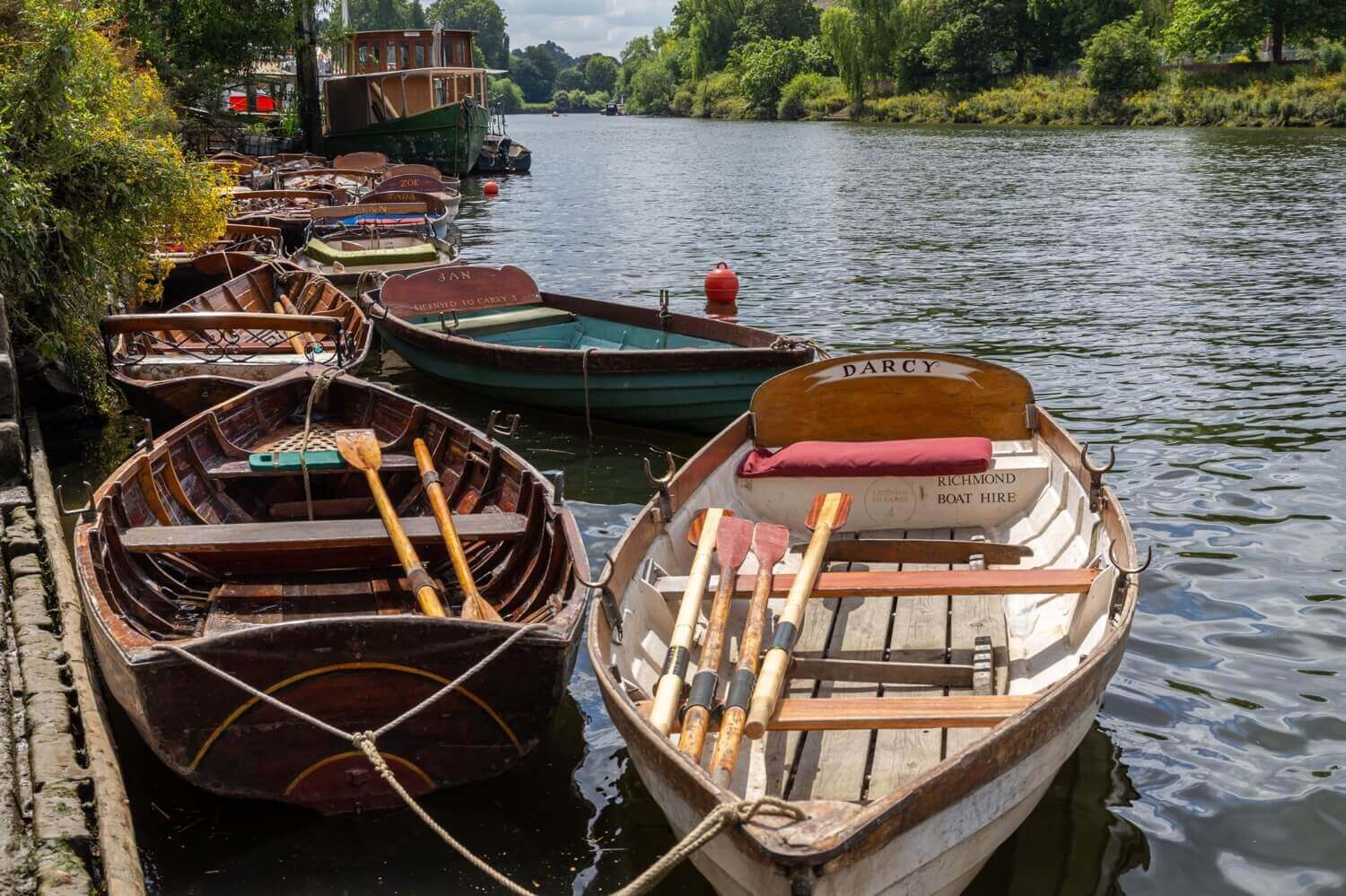
They aren't just incredibly stable, they're also very practical. Because the bottom is practically flat, they maximize boat surface. But they are also extremely choppy in rough weather and waves. They will handle very poorly with stiff winds, as the wind can simply catch them and blow them across the water surface. That's why this design is almost exclusively used for calm, small, inland waters.
This type of hull operates mainly on buoyancy , like the displacement hull, but it doesn't require the same amount of power to propel, which is why it's faster.
Because of the uncomfortable ride, not a lot of boats use a perfectly flat bottom. Most boats nowadays use some sort of v-hull or hybrid design, like a semi-displacement hull; especially larger boats. So not a lot of boats have a real flat bottom. However, we do call a lot of boats flat-bottomed. How come?
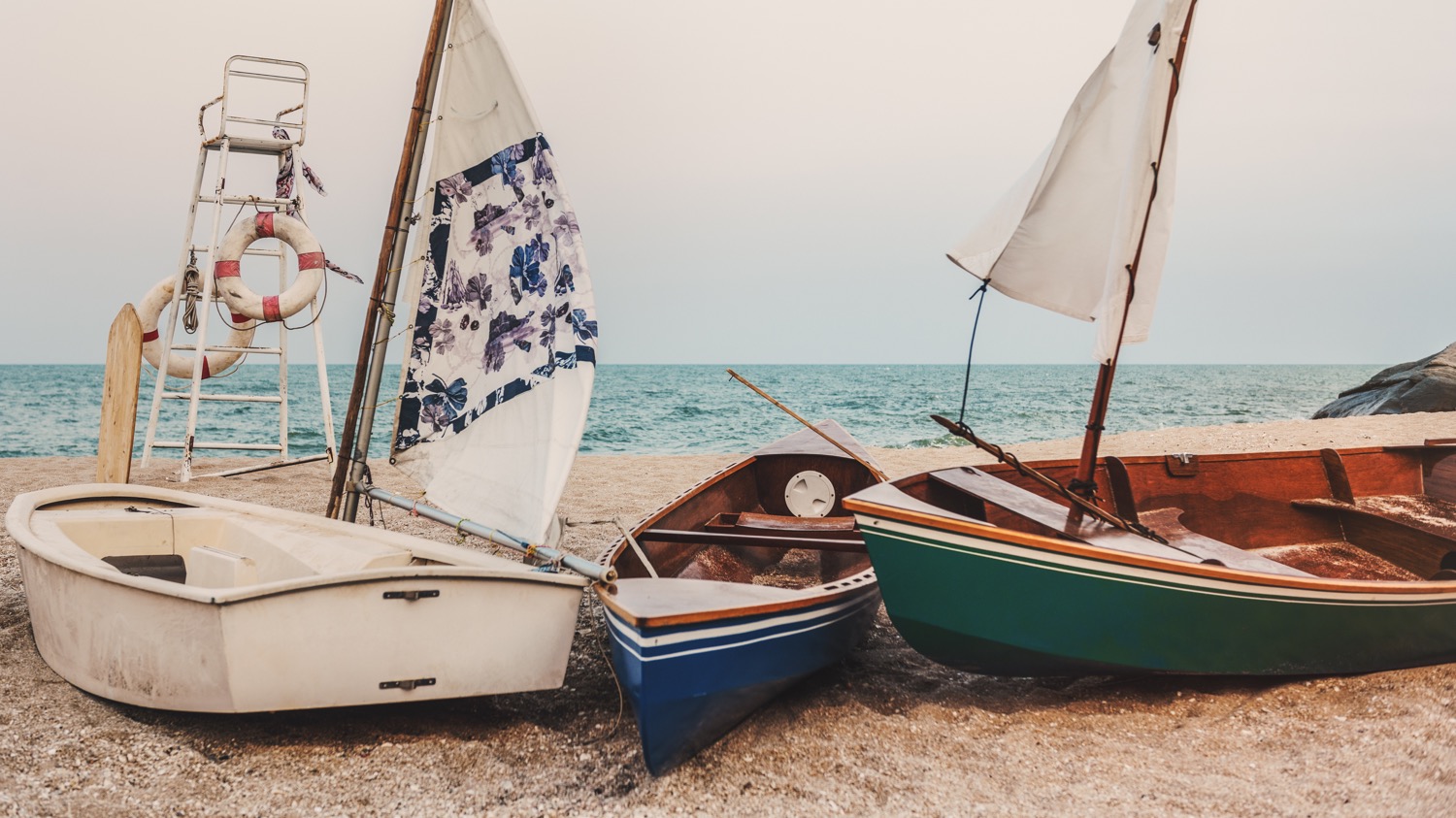
There are two types of hulls we call flat-bottoms:
- Of course boats with an actual flat bottom
- Boats with almost no deadrise
What is the hull's deadrise? The deadrise is the angle of the front of the hull to the horizontal waterline.
As you can see, the green sailing dinghy in the picture above has a deadrise that's barely noticeable.
Let's move on to other variations of the planing hull. One of the most popular hull design for modern-day powerboats is the Deep Vee hull. And that's as cool as it sounds.
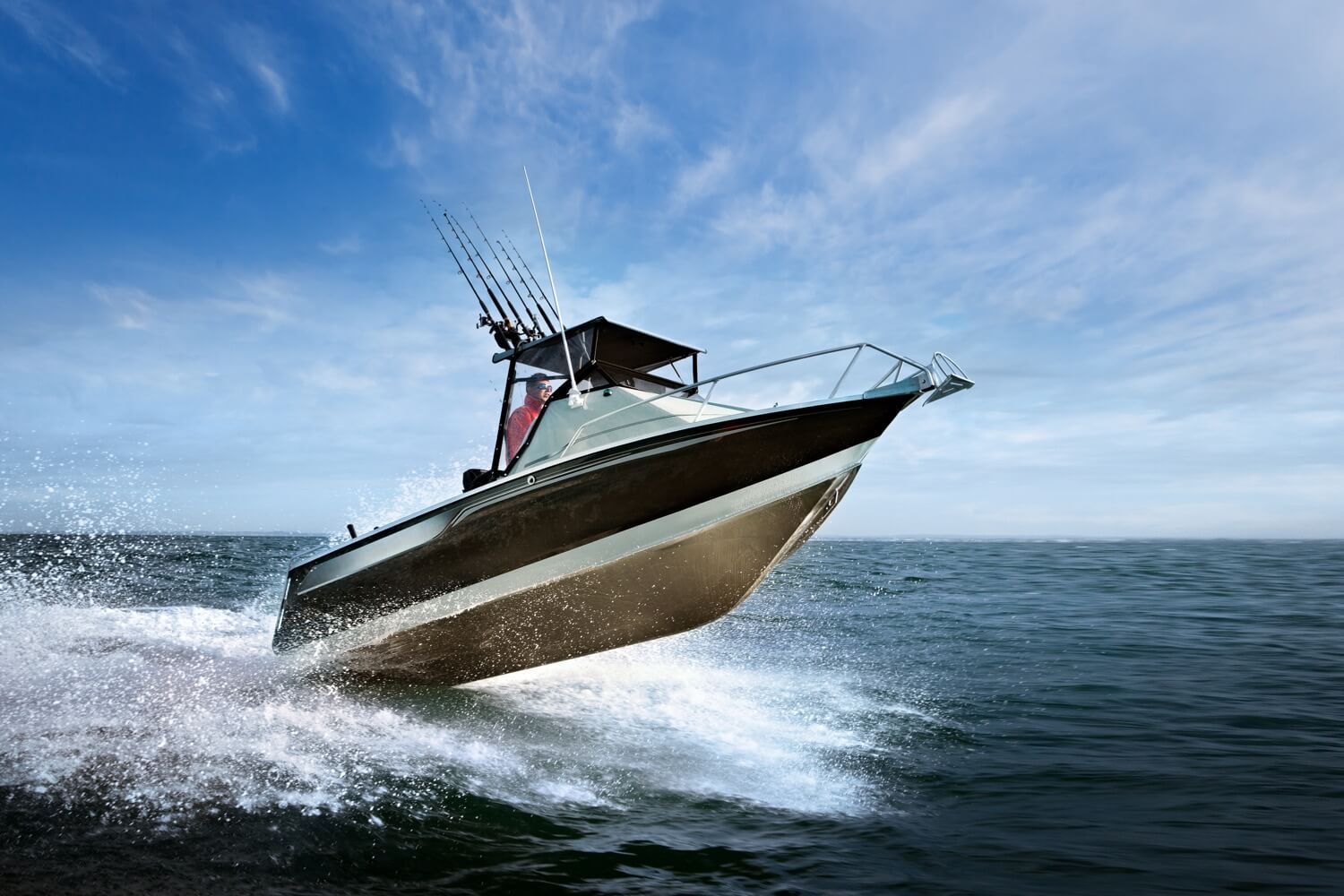
This is a type of planing hull that combines the best of both worlds.
These types of hulls are very popular on modern-day powerboats, and no wonder. With a V-shape that runs from bow to stern, deep into the water, you can handle this boat even in offshore conditions. It handles a lot better than flat-bottomed hulls, while it's at the same time extremely fast.
Examples: Most modern powerboats.
The Deep V-shape acts as a tiny keel of sorts, stabilizing the boat and making it more reliable and maneuverable. The rest of the hull acts as a planing hull, giving the boat its fast edge. Even at high speeds, the Deep V will cut into the water, making it more handleable.
The deep-V design is just one of many variants on the V-hull. Below we'll talk over another, the modified V hull.
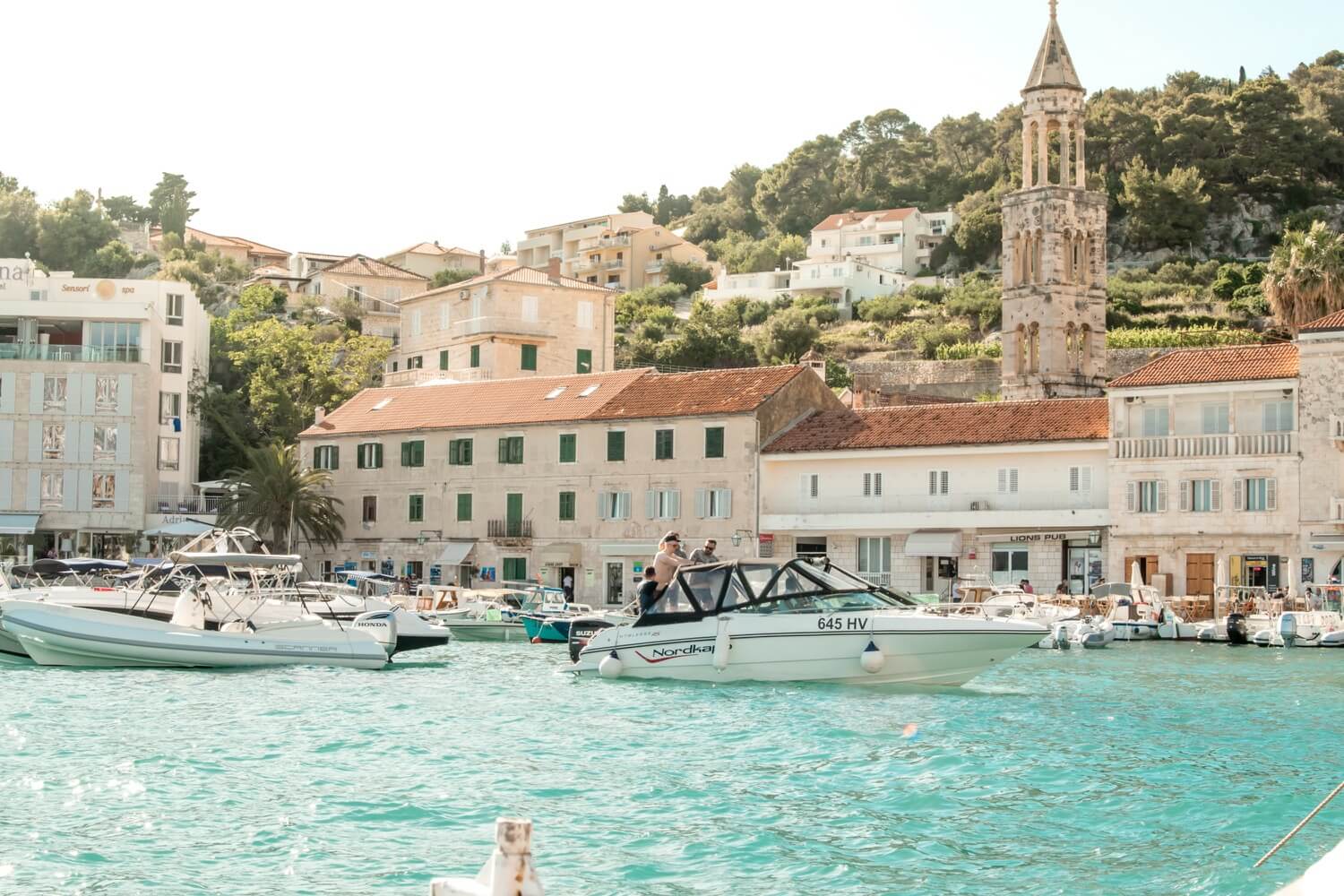
The modified V hull is the ultimate crossover of all planing hull types. It's a mix of the flat-bottom and Deep V hull. It is one of the most popular hull designs for small motorboats. It's flat in the back and then runs into a narrow V-shape to the front. The flat back makes it more stable, and adds a little speed, while the V-shape front ensures good handling.
It is, in short, kind of the compromise-family-sedan of boat hulls. It's the fastest design that's also stable, that's also safe, and that also handles well. But it's not the best in any of those things.
Most powerboats you've seen will have some sort of Vee or Modified-V hull.
Stepped hulls are used on high-performance powerboats. It's a type of planing hull that reduces the hull surface by adding steps, or indents in the hull below the waterline. It looks something like this:
It is said to work extremely well at high speed (60 knots and up) and adds up to 10 knots to your top speed.
On to our next design. There are also planing multihulls, and they might even look like catamarans to you. Meet the pontoon hull.
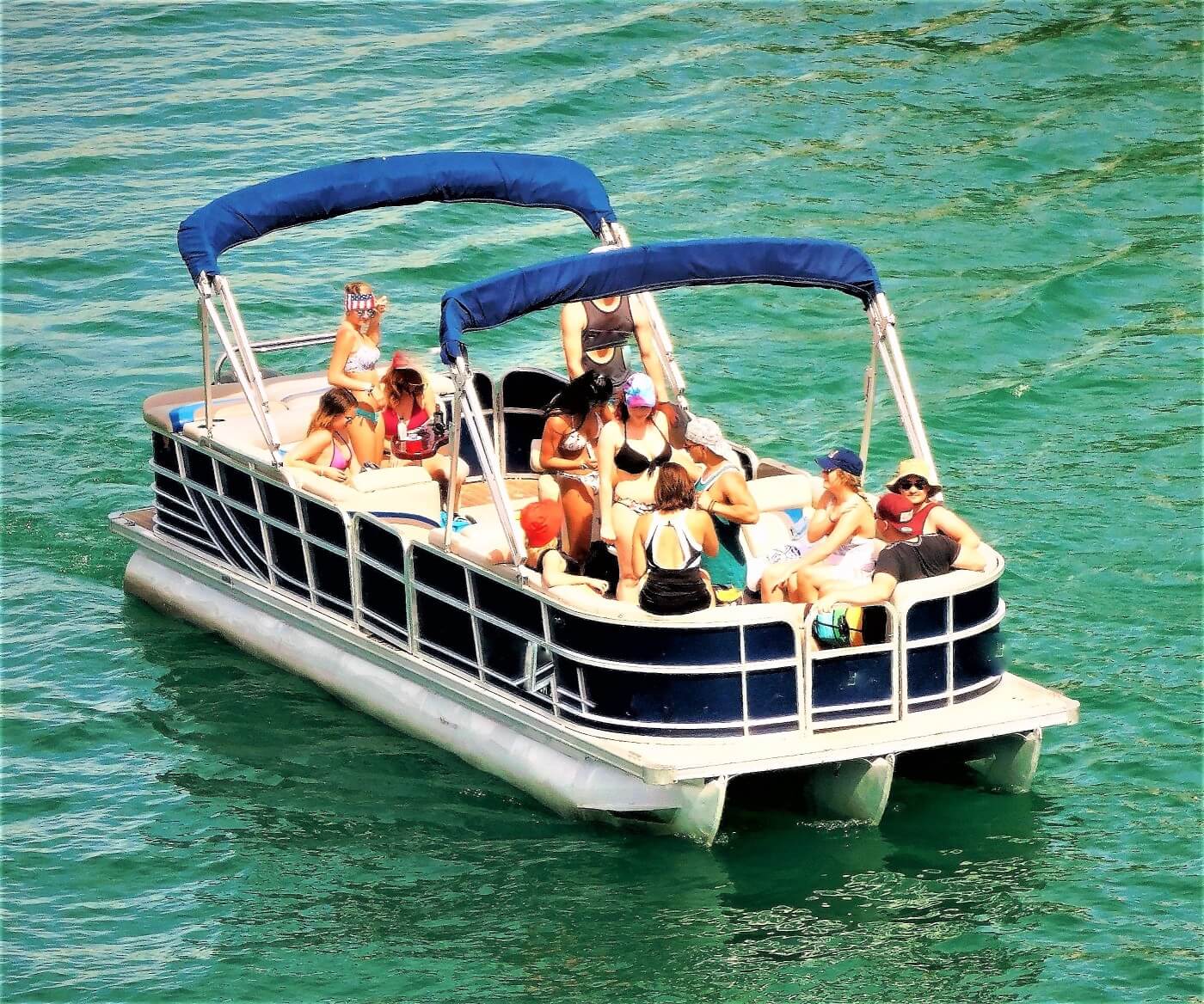
Pontoon hulls float on top of the water using pontoons or floaters that create lift. It's a type of planing multihull that doesn't lie in the water, so it doesn't displace a lot of water. They don't really handle well. As with any multihull, they aren't agile - they're not great at maneuvering. They also have a very large turning radius. But they are extremely stable: there's no chance you'll capsize this.
Examples: Cruisers, modern trawlers, motor yachts, Maine lobster boats
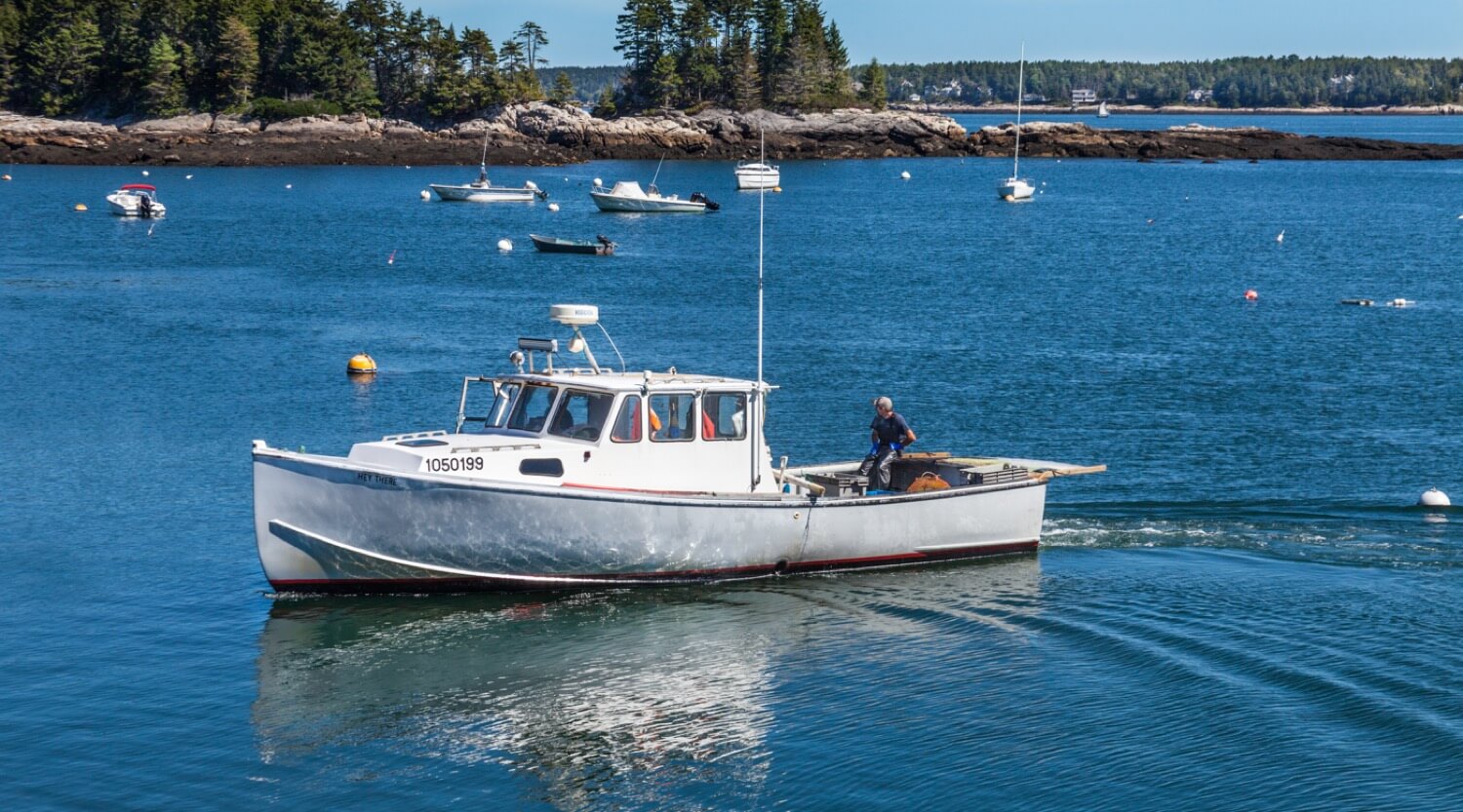
Semi-displacement hulls are smack bang in the center of planning and displacement hulls. They are a bit better for speed than displacement hulls are. They are a bit better for handling rough waters than planing hulls are. This makes them very versatile.
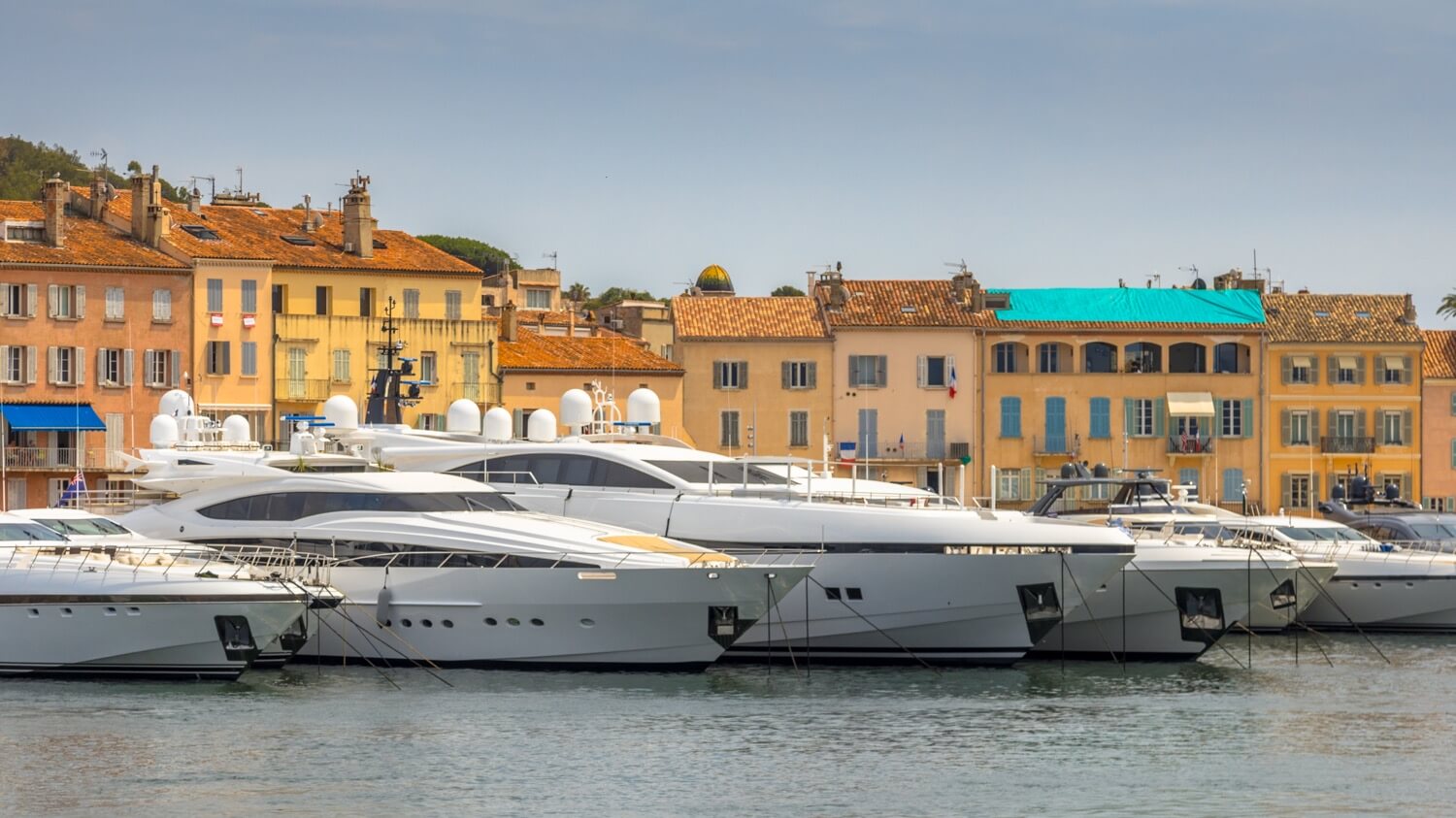
You can see these a bit like being 'half-planing' hulls. These hulls are designed to plane at lower speeds than normal planing hulls - somewhere in the range of 15 - 20 knots, depending on the length of the boat. It also requires less power. When the hull lifts, it reduces drag (water resistance), making it faster and more efficient.
Semi-displacement hulls are perfect for boats that need to be steady and seaworthy but fast at the same time.
For more information about semi-displacement hulls, please check out my in-depth guide to semi-displacement hulls here . It has a diagram and lists all the pros and cons.
So those were my 11 examples, and my step by step explanation of the different types of boat hulls and functions. You now have a solid basic understanding of boat hulls, and can recognize the most common ones. I hope it was helpful, and if you want more good sailing information, be sure to check out my other articles below.
https://www.soundingsonline.com/boats/how-different-hull-types-react-in-rough-water . ↩
I was wondering what your opinion would be on the ship uss Texas as far as hull type and bow type. I think it has a plumb bow and it looks to have a displacement or flat bottom hull. Im doing some research and a better trained eye would be of great help. I used images “bb-35 dry dock” to help see the hull shape. Thank you
Shawn Buckles
Hi Kirk, I don’t know about trained but here we go. I’ve checked the picture, it’s definitely a displacement hull I’d also say it’s a plumb bow.
Hahahahaa imagine liking boats hehehehehe Extremely stable & faster Handles well in rough water Extremely stable & faster Handles well in rough water Extremely stable & faster Handles well in rough water Extremely stable & faster Handles well in rough water Extremely stable & faster Handles well in rough water Extremely stable & faster Handles well in rough water Extremely stable & faster Handles well in rough water Extremely stable & faster Handles well in rough water Extremely stable & faster Handles well in rough water
Leave a comment
You may also like, a complete guide to displacement hulls (illustrated).
The displacement hull is the classic go-to hull design for sailboats and one of the most recognizable ones out there. In this guide, I explain all there is to know …
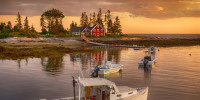
Semi-Displacement Hulls Explained (Illustrated Guide)

The Ultimate Guide to Sail Types and Rigs (with Pictures)
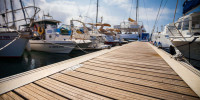
How Much Does it Cost to Dock a Boat for a Year?

26 Different Boat Types | An Easy Guide On Types Of Boats
There are more different kinds of boats than one can imagine. Unpowered, motorboats, and sailboats are the three basic categories and subcategories into which a boat can be classified.
These groups may now be divided into subcategories, each with its own boat type. Each has its own set of benefits and features. The most common boat types, however, are seen here.
In border enforcement, internal transit, and commercial fishing, boats are employed to assist bigger vessels. The bulk of these boat classifications, on the other hand, are leisure and sports boats.
A boat is a type of watercraft that is built to cross shallow waterways and provides significant mobility benefits over large ships. Ships and boats have traditionally been identified by their size.
Handheld or hand-powered boats, sailboats, and motorboats are the only three types of watercraft. Kayaks, yachts, pontoons, banana boats, and other boats that we like fall into one of the categories described above.
In this post, we’ll go through a list of 20 different types of boats so you can understand more about the various modes of water transportation.
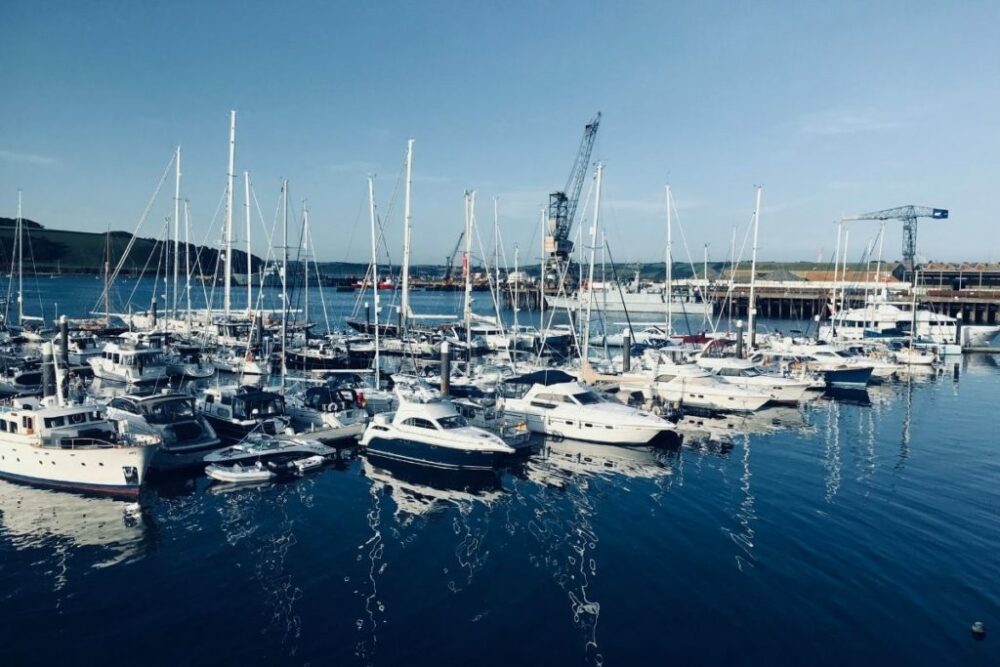
Bass boats are small boats made of aluminum or fiberglass that are used for recreational fishing in freshwater. A bass boat’s level deck, aerated live wells, and a powerful outboard motor are all essential features.
They may also have the following motor for slow-speed activities.
These boats were designed with bass fishing in mind. Sleek fishing is a fish-catching method. This usually needs a boat that has a low profile while creating as little water disturbance as possible.
Three to four anglers may be accommodated in these boats, which range in length from 14 to 26 feet (fishers). It’s small, light, and effective on calm water, with good control.
It’s ideal for freshwater fishing. Swivel chairs, which allow the user to cast all around the boat, are infrequently fitted. The looping water flow of the aerated live wells allows them to store fish alive.
Because there is little freeboard or high sidewalls, they are less stable by design. Because the bulk of its body is underwater, it floats.
With the exception of the stern and the motor, practically all of its components are outside the water at cruising speed. Despite the fact that river fishing is excellent, rough waves make it difficult to handle.
A bay boat is a shallow-water utility fishing craft that has been developed using cutting-edge technology. The boat’s major features include a center console , V-shaped stepped hull, folding jump seats in the back, improved freeboard, transom ladder, high-power outboard motor, low gunwales, and fish storage.
It is well-known for its versatility and may be used offshore, in rivers, and in interior lakes. These boats are swift, have good performance, and can easily carry four anglers.
They’re typically made of fiberglass and range in length from 18 to 25 feet. This allows us to have everything we need for fishing without overwhelming the cottage.
It was designed to fill the gap between freshwater flat fishing boats and seagoing center console boats as high-performance fishing boats. It will be a boat for sportsmen who enjoy both freshwater and sea fishing .
If casting decks are designed around the central console, anglers will have greater stability and space.
A bowrider is comparable to a runabout boat in terms of design, and a deck boat in terms of qualities. It has an open bow, which allows for more seating area forward of the helm.
It’s why they’re about the same size as a deck boat but a little longer. They can be propelled by a sterndrive or an outboard motor.
It is intended for family usage and may be used for fishing, sailing, skiing, and other watersports. A swim platform was included on the bowrider, which was helpful for swimming and attaching wakeboards.
This is an excellent boat to have if you want to spend time on the water with your family and friends.
In a range of water conditions, its V-hull shape delivers great performance, speed, and handling. Because it has comfy seats in front of the helm, you could see fishermen casting (fishing) from the bow.
A conventional bowrider measures between 17 and 35 feet in length. Rather than fishing, these boats are generally utilized for traditional watersports.
Depending on the manufacturer, seat belts or a protective barrier may be put on the boat to prevent falls, particularly in the bow seats closest to the helm.
The best thing about this boat is the variety of activities it provides, including water sports, day sailing, and socializing with family and friends.
A catamaran is a watercraft designed primarily for sailing. It has two parallel hulls on each side and is a two-hulled watercraft. Due to its huge beam, it is naturally balanced on its two hulls.
The photographer, for example, has a greater living space, does not yaw, and can sail in low-draught situations thanks to its higher stability.
A catamaran is a much bigger boat that allows for better agility and true room-size accommodations with windows. This makes you feel more relaxed and at peace.
Two independent engines or propellers are mounted on each hull. You have better control and maneuverability because you can turn it 360 degrees in its current place.
This boat’s smaller draught (1-1.2 m vs. 2-2.4 m in a standard boat), greater speed multihull construction, and lightweight design allow it to sail faster, and it has better stability and mobility.
Because of its large width, it does not tilt or move much in the water, which is beneficial for people who get seasick.
The multihull design’s reduced draught allows it to anchor much closer to the land. Pontoon is built on the caravan design concept, which may surprise you.
Modern catamarans may be separated into two types based on their intended use: a sailing cameraman and a cruise cameraman. Read our comparison of catamarans with monohulls if you are interested.
Center Console Boat
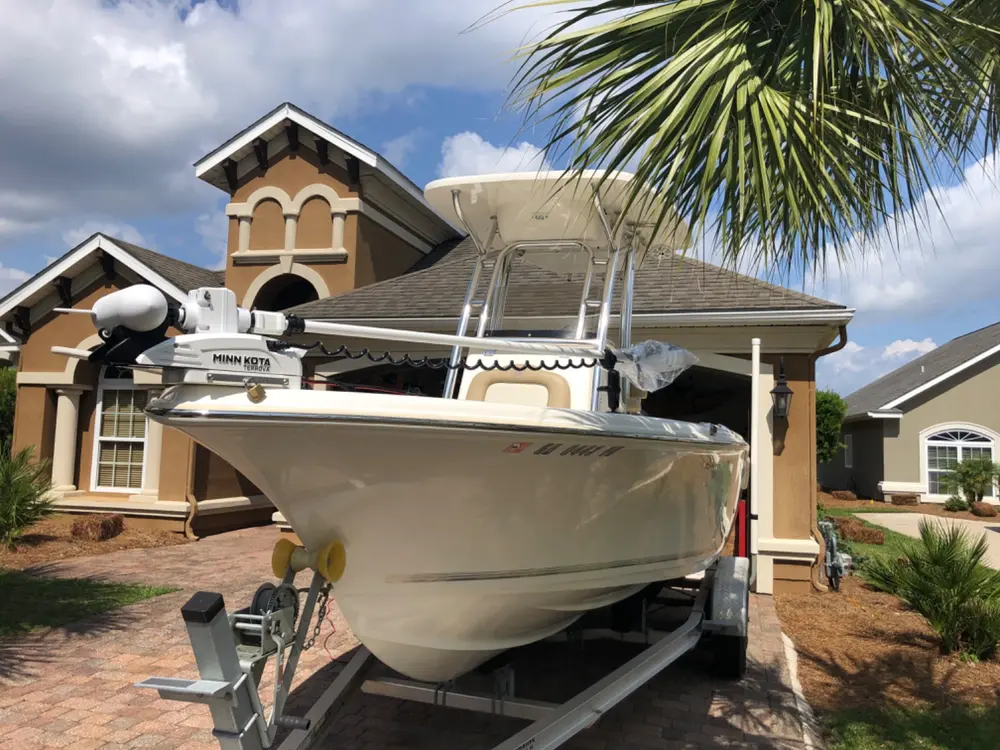
A saltwater fishing boat with a center console may be utilized for fishing as well as other nautical activities. It’s mostly for fishermen who also wish to try their hand at other marine occupations.
It has enough operating space for both saltwater and freshwater fishing because it has no cabins and a helm station in the middle. Because the design of the center console prioritizes more working areas, any available floor space is transformed into storage or working space.
Depending on the business, it might have a single or double helm seat, with varied head heights.
Its high speed and strong build make it unsuited for racing or other competitive water activities, despite the fact that it was built for fishing.
It can easily attain speeds of 60 knots when equipped with a high-capacity outboard engine. These fishing and day trip boats can seat up to seven passengers and range in length from 18 to 70 feet.
A stereo system, cup holders, USB connections, coolers, and a separate swimming platform are all standard features on even the most modern console boats. The best part about these boats is that you can instantly increase or decrease their speed by chaining together extra outboard motors.
The second feature I appreciate about them is that they can be easily transported on any standard trailer, saving time and effort in the selection process.
Convertible Fishing Boat
This vessel is ideal for recreational sailing and offshore fishing for anglers who want the best of both a fishing trawler and a luxurious Motoryacht. For better vision, it includes an aft fishing deck and a taller helm.
The motorboat features dual mezzanine decks, an outdoor galley, lounge seating, and a comfortable living room, to name a few.
Convertibles are usually 30-35 feet long, although they may be as long as 50 feet in rare situations. It’s built for serious offshore sportfishing; it’s safe, powerful, comfortable, and doesn’t need to be used to raise fish.
It has a cruising speed of 28 knots (32 mph), but in moderate waves, it can easily approach 40 knots.
This boat prioritizes strength above weight when it comes to construction. They’re built of fiberglass and can easily crush waves, ensuring that the boat remains steady even in the most adverse conditions.
The flybridge of a convertible is one of its defining features, and it came in useful for keeping an eye on offshore structures such as weed lines and rips, which attract a lot of fish.
Cuddy Cabin Boats
A cuddy cabin boat is great for anyone looking for a family-friendly boat with hidden cabin space that’s also tiny and maneuverable. Superior cruise control, increased storage capacity, and even a concealed cabin within the closed deck space are all common features of these flexible boats.
These boats have a cuddy or a small cabin beneath the deck space, which differs from a cabin cruiser in that you don’t have to look for a cabin.
V-shaped beds with optional tables, as well as a porta toilet and standard storage space, are included in these cabins. It’s basically a comparison between an ideal cabin cruiser and a deck boat.
These versatile boats are generally used to spend quality time with friends and family, in addition to sailing, fishing, yachting, swimming, and other water sports.
The lodgings are small, yet they provide more comfort and space than one might expect. It has a swim platform, water generator, sink, taps, and a cabin, making it an excellent boat for recreational usage.
A typical cuddy cabin boat is between 20 and 30 feet long and has a 500-1000 horsepower inboard or outboard engine. This power might come from a single large engine or a cluster of small engines.
The great thing about this boat is that it’s tiny enough to be towed anywhere you choose.
A deck boat is a motorized boat with an open deck that is distinguished by its unique design, large deck area, and speed. The name “Deck Boat” refers to the extra deck space given by the boat’s unique hull design.
This boat is great for fishing, cruising, quality family time, and some water activities, with a length of 18 to 24 feet and a spacious deck area as well as powerful stern propulsion.
Its V-shaped hull provides the extra room needed for a huge open deck and seating arrangement. You can hold tiny parties on these boats since they have so much space.
These expansive deck areas are often utilized for additional seating, but they can also be used to store fishing equipment. The benefit is that they can be hauled to your garage or carport by any ordinary trawler.
As a result, you won’t have to worry about trawler size and strength when hauling deck boats. Because of its flexibility, it is popular and widely used along beaches, rivers, and freshwater lakes.
Its hull design also contributes to its increased stability. These boats are simple to operate and need little maintenance.
Once you’ve gotten the hang of it, it’s actually rather straightforward. Depending on what you want from them, you have a range of possibilities. All variants come with a powerful engine, Bimini top protection , an enlarged swim platform, storage space, accessories, and life jackets.
Dinghies are small boats that may be seen on beaches and lakes and are used for a variety of activities including fishing, rescue, sailing, and water sports.
In the case of an emergency, these little boats, which are normally 12 to 15 feet long, are kept and used on major boats and ships.
They’re made of various materials, such as strong wood and inflated rubber. Due to their traditional and relatively basic construction, they may be propelled by oars, sails, or an outboard boat motor.
A dingy may be classified into four types based on its shape and mode of propulsion: Whitehall, Dory, and Inflatable rubber boats, which are the most common currently.
Because of their ability to work in even the shallowest of waters with exceptional mobility, they are regularly used by enthusiasts throughout the world looking for a good time in lakes and along beaches.
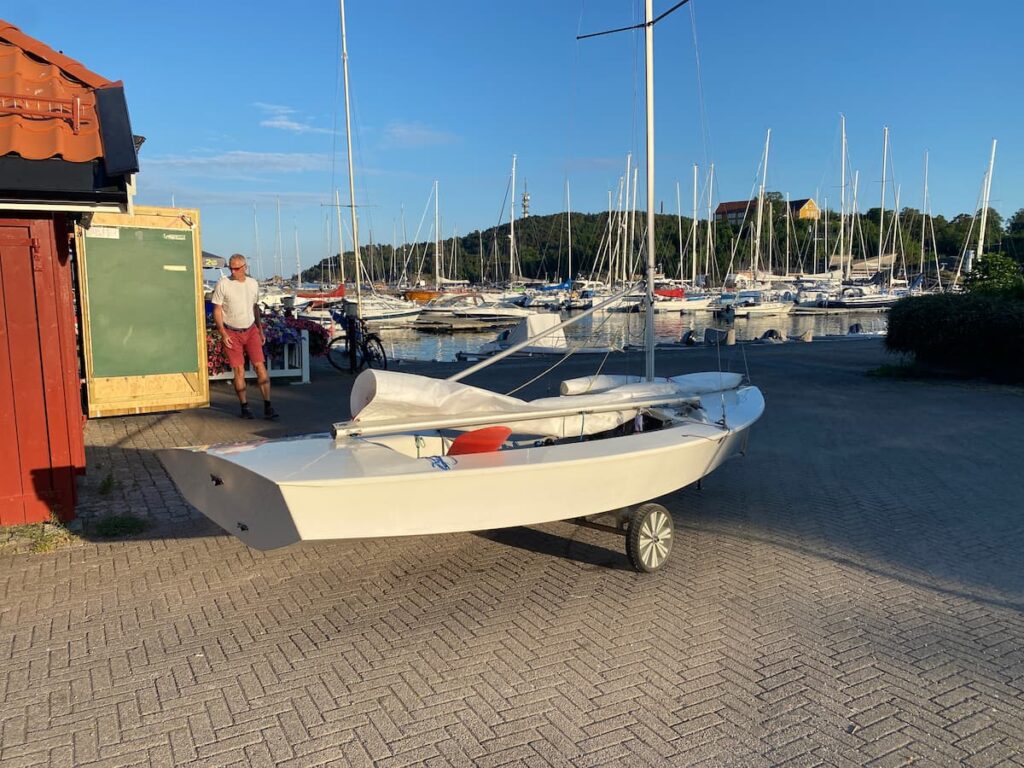
The same purpose makes it an excellent companion for large boats and ships, allowing it to transfer passengers in an emergency or when the massive boat or ship is unable to dock.
While any inflatable may be used as dingy, rigid-bottom inflatables are the most popular since they can inflate and collapse quickly without threatening other boats in the vicinity.
They are simply more cost-effective, both as a one-time purchase and in terms of continuing care, because they can be easily deflated and kept in a closet.
Dual Console Boats
Dual console boats are one of the most popular choices for day sailing or recreational fishing. The phrase “dual-console” refers to two independent consoles, each with its own set of windshields. Between the eating area at the bow and the entry entrance is a tunnel.
The driver’s seat is on the right side, while the passenger seat is on the left. Most fishermen, skiers, and casual boaters favor this boat type because of its adaptability. Because it is much larger than a center console boat, it provides better agility, comfort, storage space, and seating.
It provides additional relaxation and enjoyment of day sailing for casual sunny days on the ocean.
A dual console boat’s main advantages are higher capacity, better weather protection, a V-shaped hull, a front seating area, additional dry storage space, and fishability (came with a rod holder , fish box, and live wells).
It also has a carpet-free fiberglass deck with an easy-to-maintain external drain. Outboard motors propel these boats, which can range in length from 15 to 30 feet.
Modern versions often incorporated a separate compartment in the passenger’s side console, which was handy for lounging or changing. The twin console boat has less foot room than other similar boat designs since it has more seats.
Ferry Boats
You’ve undoubtedly heard the term “ferry” even if you don’t know much about boats or have never seen one. It’s basically a big boat that can move people and cars from one place to another.
Cross-river ferries, which move from one store to another, are common in large rivers.
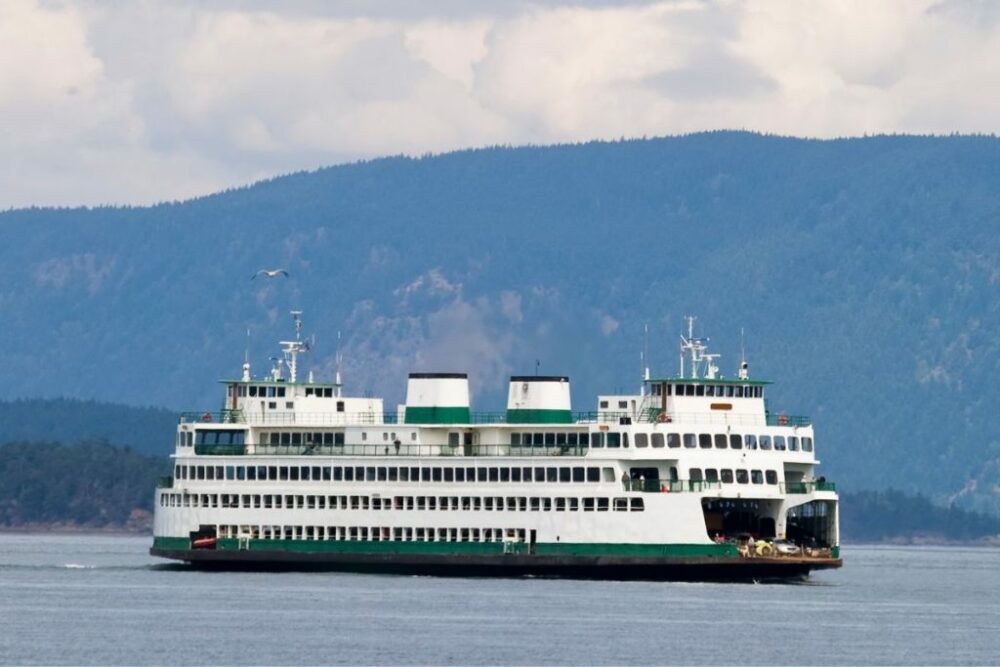
While the majority of ferries do precisely what they’re supposed to, some do include extra features like restaurants, entertainment spaces, brief excursions, and even lodging.
These boats are frequently small in size due to the confined waterways, which adds to their agility. A ferry is an essential component of a public transportation system designed for short-distance travel.
The function or purpose of a ferry distinguishes it from other boat types, rather than its appearance. Ferry boats are divided into four categories: catamaran, hydrofoil , cable, and Ro-Ro.
The most common type of vessel is the Ro-Ro, which is chosen based on the requirements and operational expenses.
The materials used in the building of a Ro-Ro ship and a Ro-Ro ferry are the most important difference. Ships, on the other hand, are designed for international trade and must follow the internationally approved design, techniques, and limitations.
Ro-Ro ferries, on the other hand, are less expensive, have a simpler design, and follow national construction codes.
Fishing Boats
Simply because you may fish from it with some portable fishing gear does not make it a fishing boat. A fishing boat is usually a wooden-hulled vessel with very little machinery. Since ancient times, they have used spears, hooks, and nets to catch fish in both fresh and saltwater.
A commercial fishing boat, or trawler, on the other hand, is a big metal structure that performs the task utilizing sophisticated equipment including trawling engines, trawlers, live wells, and electric power sources.
Trawlers with trolling motors , ropes, and other fishing gear are generally seen near the stern of these massive vessels.
They are no longer restricted to coastal or river waters, because of their sturdy build and modern navigational gear like G.P.S., sonars, and AIS.
They catch their fish by dragging a trawl (a large fishing net) across the water in areas where AIS technology has discovered a high concentration of a particular fish species. These massive boats are normally 20-25 meters long and weigh 30 to 40 tonnes under draught.
They have superstructures, marine engines , propulsion systems, and cargo space, making them more like a ship than a traditional boats.
Smaller bass boats are frequently used in both fresh and salt rivers for low-scale or pleasure fishing. These little boats are designed to give superior agility, comfort, and help while catching fish, rather than striving for quantity like large commercial fishing boats or trawlers.
Jet boats are dynamic and agile watercraft propelled by water jets instead of traditional propellers. These boats are designed for speed, maneuverability, and versatility on various types of water bodies.
At the heart of a jet boat is a water jet propulsion system. Water is drawn in through an intake located beneath the boat, and then forced out at high pressure through a directional nozzle at the stern. This propulsion system allows jet boats to operate in shallow waters and navigate through areas with submerged objects, such as rivers, lakes, and rapids.
The absence of propellers makes jet boats safer and more user-friendly, as there are no exposed rotating blades. This feature also enables them to operate in areas where traditional propeller-driven boats may encounter difficulties or risks.
Jet boats are known for their impressive acceleration and agility. The water jet propulsion system provides instant thrust and allows for quick direction changes, making them ideal for activities such as water skiing, wakeboarding, and river exploration.
These boats often have a compact and streamlined design, ensuring excellent maneuverability even in tight spaces. Some models may feature seating arrangements for several passengers, while others are designed for solo use or small groups.
Whether you’re seeking a thrilling ride on the water, an adventurous river excursion, or the ability to explore shallow waterways, jet boats offer an exciting and reliable means of transportation. With their unique propulsion system and maneuverability, jet boats provide an exhilarating experience for water sports enthusiasts and those looking to navigate challenging aquatic environments.
Jon boats are versatile and practical watercraft commonly used for fishing and hunting in shallow waters. They are characterized by their flat-bottomed design, which allows them to navigate through shallow and calm waters with ease.
Typically made of aluminum or fiberglass, Jon boats are lightweight yet sturdy, making them ideal for maneuvering in narrow channels, small lakes, and marshy areas. Their shallow draft enables them to access spots that may be off-limits to larger vessels, opening up opportunities for anglers and hunters to explore remote or hard-to-reach locations.
One of the standout features of Jon boats is their exceptional stability. The flat hull design provides a steady platform, allowing occupants to move around comfortably while casting lines, reeling in fish, or managing equipment. This stability is particularly advantageous when standing up or leaning over the sides to retrieve nets, set traps, or handle gear.

Jon boats typically come in various sizes, ranging from compact models suitable for a single person to larger ones that can accommodate multiple occupants and additional gear. They often have a bench or swivel seats , providing seating comfort and flexibility.
These boats are also highly customizable, allowing owners to add features such as trolling motor mounts, rod holders, storage compartments, and livewells, depending on their specific fishing or hunting needs. Some Jon boats may even have a small outboard motor attached to the transom for increased propulsion and maneuverability.
Due to their simplicity and practicality, Jon boats are popular among outdoor enthusiasts who enjoy fishing in calm waters, exploring remote locations, or engaging in recreational hunting activities. Their affordability, low maintenance requirements, and durability make them an attractive option for individuals seeking a reliable and versatile vessel.
Whether you’re gliding through shallow marshes in search of waterfowl or quietly casting your line in a serene fishing spot, Jon boats provide a reliable and efficient means to navigate shallow waters while enjoying the tranquility and beauty of nature.
Houseboats have changed the way people look after their boats, changing them from recreational to exquisite floating residences.
Indeed, in many countries, devoting a significant chunk of one’s life to one of them was considered normal. It’s gaining a lot of popularity these days in developing countries like ours.
There are two sorts of houseboats: static houseboats and houseboats with motors. While static houseboats are identical to any other lovely property on the water, we utilize the other for luxury parties, vacations, water sports, family time, and tranquil cruising.
A houseboat can be any size, from one or two persons up to four families, each with its own living spaces.
These boats feature specialized engine rooms with a primary engine and power generators, similar to those seen on large ships.
For day-to-day use, it also contains a second freshwater generator . These boats can range in length from 30 to 75 feet, with single or multiple decks.
These boats may not be as fast as smaller boats, but they are still a fun way to spend your vacation. Because of their closeness to nature and ease of use for other water sports, they are the most coveted of all boat types.
Inflatable Boats
Out of all the options, this is the only one that will fit in your trunk. Inflatable boats are built of tubes filled with compressed air and are extremely light. The three materials that may be utilized to produce them are PVC, Hypalon , and polyethylene.
They usually range in length from 6 to 14 feet and may or may not include an aluminum floor bed. Due to their adaptability and ability to take on a variety of shapes, inflatable dinghies, pontoons, life rafts, and other inflatable items are readily available.
For greater rigidity, a rigid inflatable boat has an aluminum floor bed, whereas a soft inflatable boat does not. These boats have an external motor for propulsion once fully charged with compressed air.
These boats are suitable for shallow-water rescue missions and are very simple to deflate and store. This is a fantastic alternative for newbie boaters, emergency services, river rafting, and solo fishing.
In the case of an emergency, a lifeboat is a rigid-hulled inflatable small boat that is used for rescue and search activities. All large ships are required by law to carry a minimum number of authorized lifeboats on board.
These boats are often used to transfer persons to safe regions and are outfitted with anything from tools to first aid and signaling equipment.
The solid hull construction, rather than the inflatable design, makes it more stable, sturdy, and capable of withstanding extreme weather conditions while carrying the most weight.
RHIBs (Rigid Hulled Inflatable Boats) are the most frequent rescue or lifeboat designs, although they are not the only ones.
In reality, many new merchant ships have more closed lifeboats, which provide more safety, but they still have one RHIB-style lifeboat on board, which is used mostly for rescue.
The self-inflicting collar at its top, which surrounds its whole design, keeps it from sinking even if it is mistakenly hurled overboard under high weather conditions.
All lifeboats are manufactured in compliance with the SOLAS and LSA criteria, regardless of their kind. “International Convention for the Safety of Life at Sea,” or SOLAS, stands for “Life-Saving Appliance Code,” whereas LSA stands for “Life-Saving Appliance Code.”
Modern lifeboats come fitted with EPERB, radar reflectors, and SART technology.
The pontoon is one of the boat types that has gained a lot of popularity in recent years. From an unattractive boxy watercraft to a luxurious recreational boat, it’s gone a long way.
These outboard-powered boats, which range in length from 16 to 30 feet, are suitable for day sailing, aquatic sports, and freshwater fishing.
These boats rely on three hollow aluminum tubes with tapered ends in front for buoyancy instead of a solid hull. These hollow tubes are used to connect other support systems together.
A flat deck is built on top of these platforms, offering much greater deck space. If you’re limited to rivers and lakes, there’s no better luxury pleasure boat for the money.
The boat can fit up to 10-15 people on board, making it suitable for any family. The 900-horsepower engine also offers much-needed speed, while the pontoon tube design provides stability. The advantage of pontoons is that they require less maintenance and care than other forms of boats.
It gives your children extra space to play, is perfect for freshwater fishing, skiable, and comfortable. It’s safer in calmer waters, lasts longer (10-15 years), and holds more water.
A punt is a flat-bottomed boat with a square-cut bow, designed for use in small rivers or other shallow water. Punting refers to boating in a punt. The punter generally propels the punt by pushing against the river bed with a pole.
They are traditionally used for transportation on marshy areas and small water bodies in the UK, especially in Cambridge and Oxford.
Punts were introduced as pleasure craft in Victorian times. Today, punting on the rivers is a popular pastime in places like Oxford and Cambridge, England.
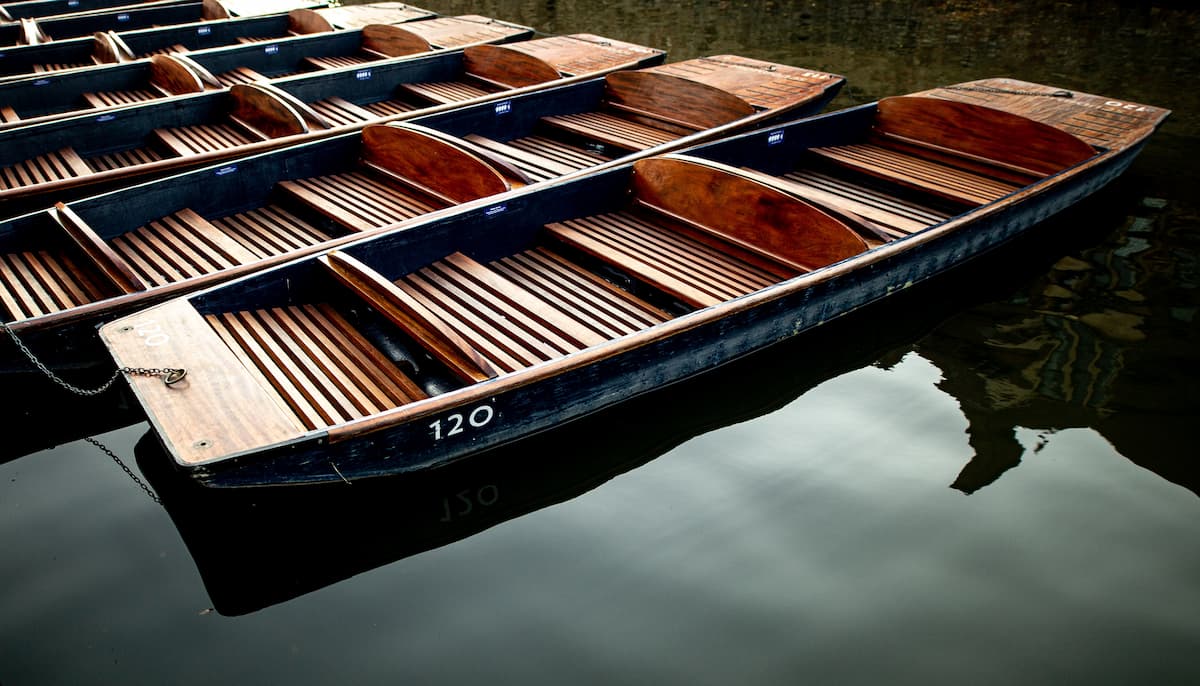
In appearance, punts are similar to gondolas, but gondolas are propelled by an oar rather than a pole, and the gondolier, unlike the punter, doesn’t need to touch the bottom of the river.
If sounds interesting, just read our guide to traditional boats: “ What are Punt Boats? “
RIB – Rigid Inflatable Boats
RIBs, or Rigid Inflatable Boats, are a type of boat that have rigid hulls and sides made of flexible tubes containing pressurized gas. The concept combines the buoyancy and stability of an inflatable boat with the performance and strength of a traditional hard-hulled boat.
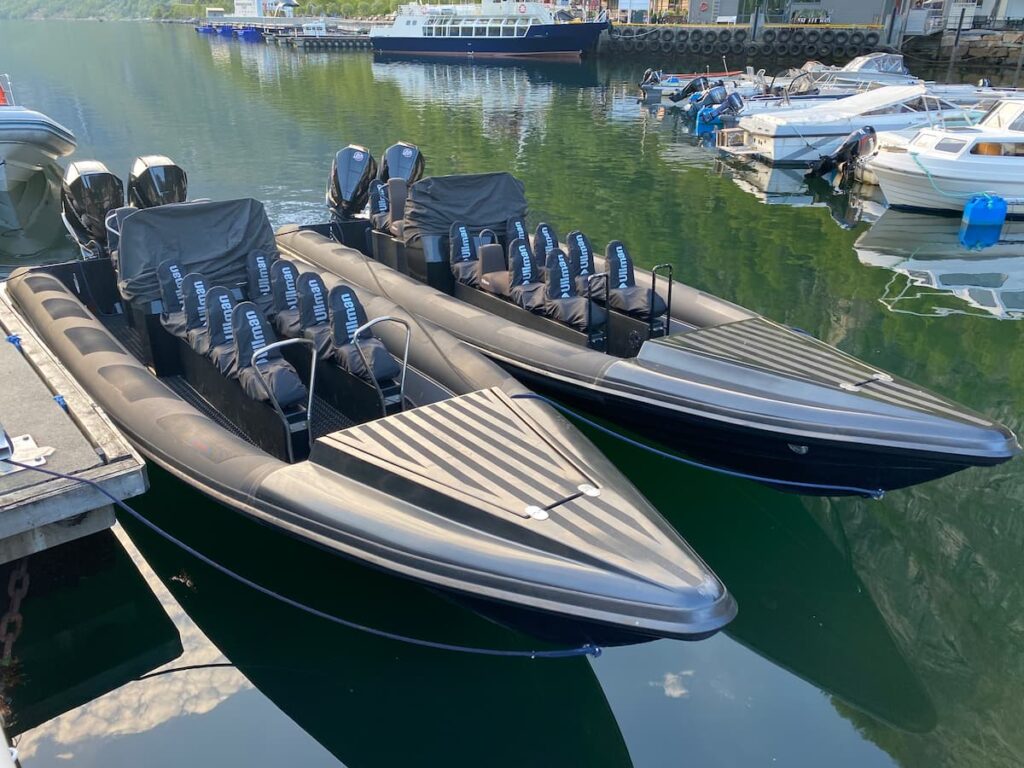
Here are some of the key features and uses of RIBs:
- Design : A RIB typically has a polyester or aluminum hull, onto which an inflatable collar or tube is attached. The hull provides the structure and rigidity, allowing it to handle more effectively in rough water. The inflatable collar provides buoyancy and helps to stabilize the boat, making it virtually unsinkable and very safe.
- Performance : RIBs are known for their high performance. The combination of a lightweight hull with large inflatable tubes makes them very quick and highly maneuverable. They can handle rough sea conditions better than most other boats of the same size.
- Uses : Due to their high performance, stability, and safety, RIBs are used for a wide variety of purposes. They are popular as tenders for larger vessels, and they are also commonly used by coast guards and lifeboat services because of their stability and seaworthiness. They’re great for recreational purposes like scuba diving, fishing, and cruising. Many people enjoy them for high-speed rides and water sports.
- Sizes : RIBs come in a range of sizes, from small models around 2-3 meters long, used as tenders or for personal use, up to large commercial models over 10 meters long, used for search and rescue, military applications, or commercial work.
Remember that while RIBs are known for their safety due to their buoyancy and stability, it’s still important to have the proper safety equipment on board and to follow safe boating practices.
For as long as there have been sailors, there have been sailboats. One of the earliest and most basic boat designs for transporting people and things across continents using the force of the wind.
It was the only and most efficient mode of long-distance transport prior to the introduction of motors or engines.
Although it is hard to say when the first sailboat was built, archaeologists have uncovered artwork from ancient Egypt and Mesopotamia that depict sailboat-like constructions.
Traditionally, these boats were monohulls, but in recent years, multi-hull designs have gained favor. Two sails (Main and Headsails) are customarily linked to a sailboat by separate lines.
The main and headsails of a sailboat are powered by the wind, which causes them to take on a more foil-like shape, which helps create a positive pressure difference.
The boat is propelled forward by the pressure differential and the drag of the water. The boat will thereafter go in the opposite direction of the wind.
Ski boats, also known as wakeboard boats or tow boats, are high-performance watercraft designed specifically for thrilling water sports activities. With their powerful engines and specialized features, ski boats deliver an exhilarating experience for riders of all skill levels.
These boats boast a sleek and agile design, allowing them to navigate the water with speed and precision. Equipped with inboard motors positioned in the center of the boat, ski boats generate a strong wake or wave, creating the ideal conditions for wakeboarding, water skiing, and tubing.
The hull design of ski boats prioritizes stability and maneuverability, ensuring a smooth and controlled ride even at high speeds. Many ski boats come with tow bars or wakeboard towers, facilitating easy attachment of ropes and harnesses for towed sports.
Inside the boat, there is ample seating for passengers to relax and enjoy the action. Some models may offer additional amenities such as storage compartments, coolers, and audio systems, enhancing the overall comfort and enjoyment on board.
Whether you’re a seasoned water sports enthusiast or a beginner looking to try something new, ski boats are purpose-built machines that provide an adrenaline-pumping adventure on the water. With their power, agility, and specialized features, ski boats are the perfect choice for riders seeking excitement and thrills.
Skiff Boats
A skiff is a small, light boat typically designed for speed rather than stability. They are often used for recreational purposes such as fishing, water sports, or sailing, and they come in various shapes and sizes to cater to different uses. Skiffs can be rowed, sailed, or powered by an outboard motor, depending on their design.
- Rowing Skiffs : These are the most traditional type of skiffs, with origins tracing back several centuries. They’re generally light and narrow, designed to be rowed by one person with one or two oars. They are often used for exercise or for pleasure trips on calm waters. Some rowing skiffs are built for speed and used in competitive rowing events.
- Sailing Skiffs : These are lightweight and designed for speed, with a large sail area relative to the size of the boat. They are usually crewed by one or two people. The high performance sailing skiffs require great skill to balance and control, particularly in windy conditions.
- Motor Skiffs : These skiffs are equipped with outboard engines and are typically used for fishing or short trips. Some are built with a flat bottom, making them suitable for shallow waters.
- Fishing Skiffs : These are small, lightweight boats often used in inshore saltwater or freshwater fishing. They can be powered by oars, sails, or small outboard engines. Their light weight makes them easy to transport on a trailer and launch from a ramp or beach.
Regardless of type, skiffs tend to be small – usually capable of carrying up to six people – and are characterized by their simplicity and ease of handling. Despite their compact size, they are often designed to maximize internal space, making them quite versatile for various maritime activities. However, due to their light weight and design for speed, they are best used in calm waters, as they can be more prone to capsizing in rough seas compared to larger, more stable boats.
Have you ever seen a huge vessel nearing a port? If you did, you most likely noticed some small boats arriving to assist with the port terminal’s security.
Tug boats are small boats whose main function is to assist large ships in maneuvering through congested regions.
It also functions as salvage boats , icebreakers , and firefighting vessels as needed, in addition to enabling larger ships through tiny waterways or close ports.
Tug boats are often stationed at or near ports, harbors, rivers, and important maritime routes like canals and shallow or narrow waterways.
A tug pushes or pulls a large ship to a safe area by pulling it or using a secured tow line. It can only do so because of its tremendous power-to-weight ratio. Tug boats offer several benefits over other ships and boats, including a high power-to-weight ratio and outstanding maneuverability.
Because of its mobility, it may aid other ships or boats in canals, ports, and rivers. There’s also a 3-4 HP four-stroke marine diesel engine to keep it going all day.
Utility Boats
Among the several boat kinds, utility boats are the most basic yet powerful boat designed for freshwater. It is generally composed of aluminum to withstand harsh conditions.
This approach is employed when the water is calm or shallow. This flat-bottomed sailboat may be anywhere between 12 and 20 feet long.
They have an open hull design with seating for two to three people. With such an open vessel and a level bottom, fishing was impossible. It glides over the water rather than cutting through it.
This minimizes the amount of commotion in the water and makes it less likely for fish to run. They’re simple, affordable, and easy to keep up with.
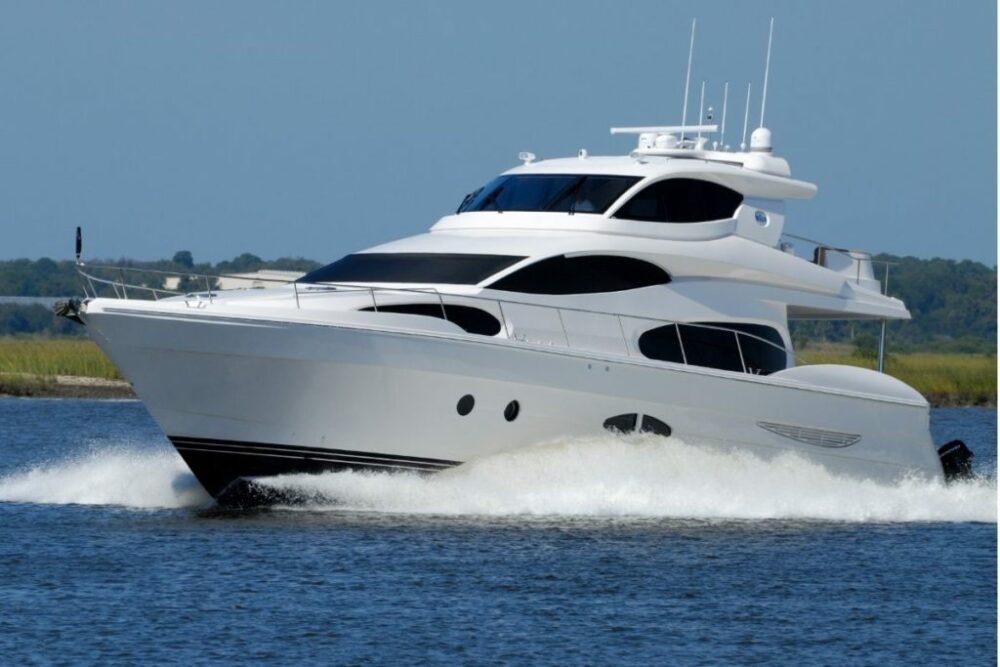
Among these various boat types, the yacht is the only one that embodies elegance and pleasure. It’s essentially a high-end motorboat designed for recreational purposes. “Yacht” is derived from the Dutch word “jacht,” which means “cruising boat.”
They are usually used for the pleasure of organizing opulent parties, aside from cruises or sailing. A normal boat is around 20 meters long and has all of the amenities needed for enjoyment and comfort.
It can, however, be anything from 9 and 100 meters long. These boats use propulsion motors that vary from 105 to 2000 horsepower and can attain top speeds of 20 to 45 knots, depending on their size.
These yachts have been modified to fulfill certain needs and goals, resulting in a subclass within the boat.
The different subtypes are cruising boats, extra luxury yachts or luxury sailing yachts, day sailing yachts, and weekenders. Depending on the requirement, these boats are built as monohulls or multihulls.
Final Thoughts
According to historical evidence, boats have been used for transportation from prehistoric times. However, from the first known boat, known as dugouts, the history of watercraft has already reached beautiful motor yachts.
Apart from recreational purposes, boats have played an essential role in contemporary commerce by allowing the active movement of people and goods over short distances.
Because there are so many various types of boats to pick from, it can be difficult to know which one is ideal for you. Naturally, how you want to use a boat plays a big role in determining whether or not it is suitable for you and your family.
Keep in mind that certain boats are more specialized than others, and some are ideal for one activity but not for another. There exist, on the other hand, a number of models that are intended to be broader.
The first and most crucial phase in the boat-buying process is identifying what sort of ship will best fulfill your requirements and goals, as well as the wants and aspirations of others who will join you on your adventure.
The kind of things you want to do on the water often determine your expectations and desires.
Think about why you want to be on the water, and then narrow down your selections accordingly. Boating is more affordable than you would think.
There are a few practical variables that might help you establish your budget after you’ve decided on the type of boat you want to buy.
It’s time to start looking for a boat while keeping your budget in mind. Begin by searching for boat types on the internet, then refining your search to specific models using manufacturer websites, dealerships, online reviews, and forums.
Don’t only rely on your keyboard to get things done. You may also have friends or acquaintances that own or like boats or interests that are similar to yours. Inquire about their personal experiences and benefit from their direct knowledge.
Many boat buyers insist on being able to touch, feel, and see the boat before making a purchase. Working with a dealer might help you save time and money during the buying process.
When comparing yachts, don’t forget to look at the dealers as well. The quality and location of the dealership are important factors to consider when purchasing a boat.
Once you’ve narrowed down your options and are considering a certain boat, it’s crucial to assess other critical components such as the engine, propeller, bilge (the region inside the hull), steering system, electrical systems, and fuel tank.
To check if it’s right for you, do a test drive or a sea t rial . Consider the long term: the boat you test with two people may act quite differently with the entire family and friends on board.
In the same way, horsepower that looks sufficient in a short test may not be sufficient in the long run.
If you’re not confident about your technical abilities, an independent maritime surveyor can help. A surveyor will investigate the yacht from top to bottom and inside out, just like a home inspector would, so you know exactly how it is.
More than a boat’s claimed price and features may be learned about the acquisition process. Similar to car sales, there are usually a few extra expenses not included in the sticker price.
Dealer fees, insurance, registration, accessories, storage, and upkeep should all be discussed early in the purchase process with the dealer to evaluate the overall cost of boat ownership and avoid unpleasant surprises later.
Find out what to expect after you’ve signed the dotted line. What is the delivery procedure? Before you accept the keys, conduct a thorough examination of the boat’s systems to ensure that you can operate it safely right away.
When the time comes, you should also ask the dealer’s shop about the procedure for scheduling maintenance or repairs. To get a head start, learn more about the first year of upkeep.
Before you go on your first excursion, find out where you can take a boater education course. Learning basic seamanship skills and absorbing some local knowledge will help you gain confidence while you’re on the water. You may be eligible for a discount on your insurance if you take a boater education course.
Finally, it’s time to unwind and enjoy your new purchase. Get out on the water and enjoy yourself, not just now, but in the months and years to come.
Daily maintenance, ranging from a regular wash and wax to scheduled maintenance, is a crucial part of the pleasure of owning a boat.
Another alternative is to expand your boating knowledge by attending one of the many fun programs offered by local dealers or by consulting an online resource.

- Recent Posts
- Responsibilities of a Fourth Engineer on Cargo Ships – September 10, 2024
- The Role of Cargo Ships in Global Trade – August 22, 2024
- Report: Yang Ming’s YM Mobility Explosion at Ningbo-Zhoushan Port – August 9, 2024
About the author
I worked as an officer in the deck department on various types of vessels, including oil and chemical tankers, LPG carriers, and even reefer and TSHD in the early years. Currently employed as Marine Surveyor carrying cargo, draft, bunker, and warranty survey.
Latest posts

Is Maritime Security Necessary on Modern Ships?
It’s vital for ships to stay vigilant. Isolation from land means having no backup or protection for miles, making them vulnerable to attacks and other threats. Equip modern ships using modern maritime security methods.
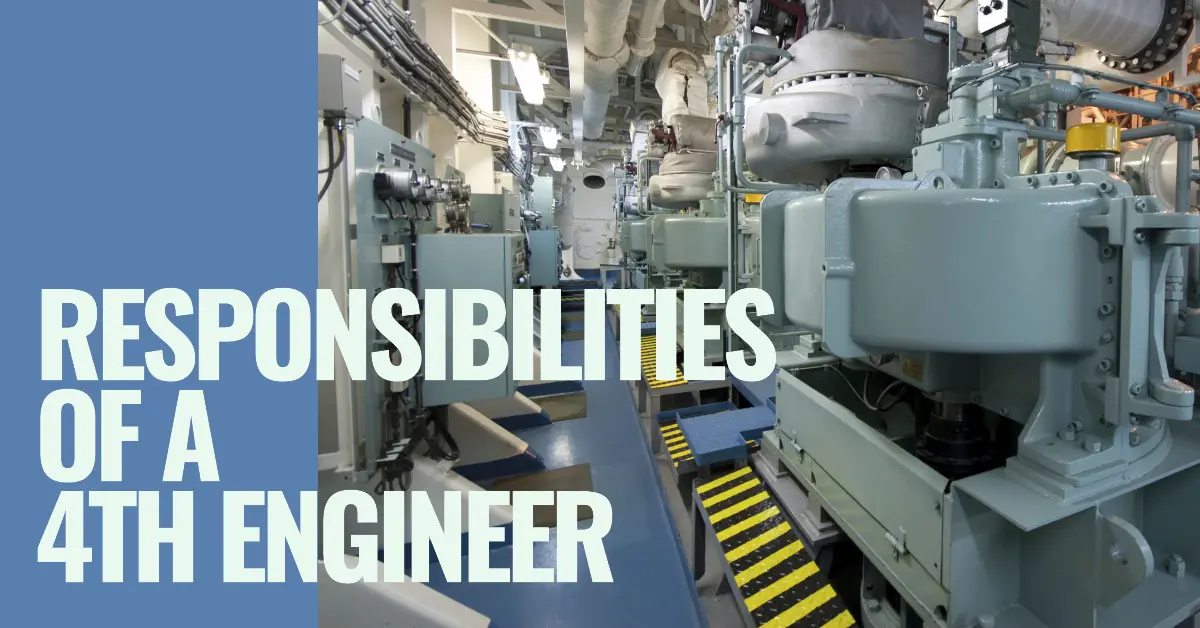
Responsibilities of a Fourth Engineer on Cargo Ships
A Fourth Engineer on cargo ships oversees engine room operations, machinery maintenance, and ensures compliance with regulations like MARPOL.

The Quality Control Process in Marine Manufacturing
Companies in the marine manufacturing space must have tight and effective quality control processes. What steps should an effective quality control process include?

The global authority in superyachting
- NEWSLETTERS
- Yachts Home
- The Superyacht Directory
- Yacht Reports
- Brokerage News
- The largest yachts in the world
- The Register
- Yacht Advice
- Yacht Design
- 12m to 24m yachts
- Monaco Yacht Show
- Builder Directory
- Designer Directory
- Interior Design Directory
- Naval Architect Directory
- Yachts for sale home
- Motor yachts
- Sailing yachts
- Explorer yachts
- Classic yachts
- Sale Broker Directory
- Charter Home
- Yachts for Charter
- Charter Destinations
- Charter Broker Directory
- Destinations Home
- Mediterranean
- South Pacific
- Rest of the World
- Boat Life Home
- Owners' Experiences
- Conservation and Philanthropy
- Interiors Suppliers
- Owners' Club
- Captains' Club
- BOAT Showcase
- Boat Presents
- Events Home
- World Superyacht Awards
- Superyacht Design Festival
- Design and Innovation Awards
- Young Designer of the Year Award
- Artistry and Craft Awards
- Explorer Yachts Summit
- Ocean Talks
- The Ocean Awards
- BOAT Connect
- Between the bays
- Golf Invitational
- BOATPro Home
- Superyacht Insight
- Global Order Book
- Premium Content
- Product Features
- Testimonials
- Pricing Plan
- Tenders & Equipment

Cantieri di Pisa announces redesign of "iconic" Akhir yacht line
Italian yard Cantieri di Pisa has announced its redesigned Akhir line at this year's Cannes Yachting Festival .
The shipyard "headhunted" Italian designer Antonio Luxardo for the redesign, with the task of balancing the brand's historical heritage with an eye for future technology and sustainability concerns. The first model to be introduced to the market will be a 44-metre, built in carbon fibre composite with a "wave-piercing" EHPH Power Fin hull.
A number of features from the preexisting Akhir line – at the height of its popularity in the 1990s – have been retained, including the narrow deckhouse lines, the strip windows featured on the hull sides, the "shark-like" decoration on the bow, the horizontal-grid air intakes and the black and white livery.
"It is emotional to be back at Cannes after 14 years to present Cantieri di Pisa once more," shipyard CEO Marco Massabò told BOAT International . "Our recent financials, including a €30 million order book, are a metaphor for the shipyard's direction. Now, with Antonio Luxardo, we are looking forward to the future."
The model will be equipped with waterjets for a maximum speed of 35 knots.
Two yachts are currently under construction at the shipyard's facilities in Pisa, Italy: the 80 Veloce and a 37.5-metre custom build . Cantieri di Pisa recently shared its new Saturno range with BOAT International , designed in collaboration with Antonio Luxardo and m2atelier .
Sign up to BOAT Briefing email
Latest news, brokerage headlines and yacht exclusives, every weekday
By signing up for BOAT newsletters, you agree to our Terms of Use and our Privacy Policy .
Similar yachts for sale
More stories, most popular, from our partners, sponsored listings.
- Paralympics
- TV & Film
- Say Maaate to a Mate
- First Impressions - The Game
- Daily Ladness
- Citizen Reef
To make sure you never miss out on your favourite NEW stories , we're happy to send you some reminders
Click ' OK ' then ' Allow ' to enable notifications
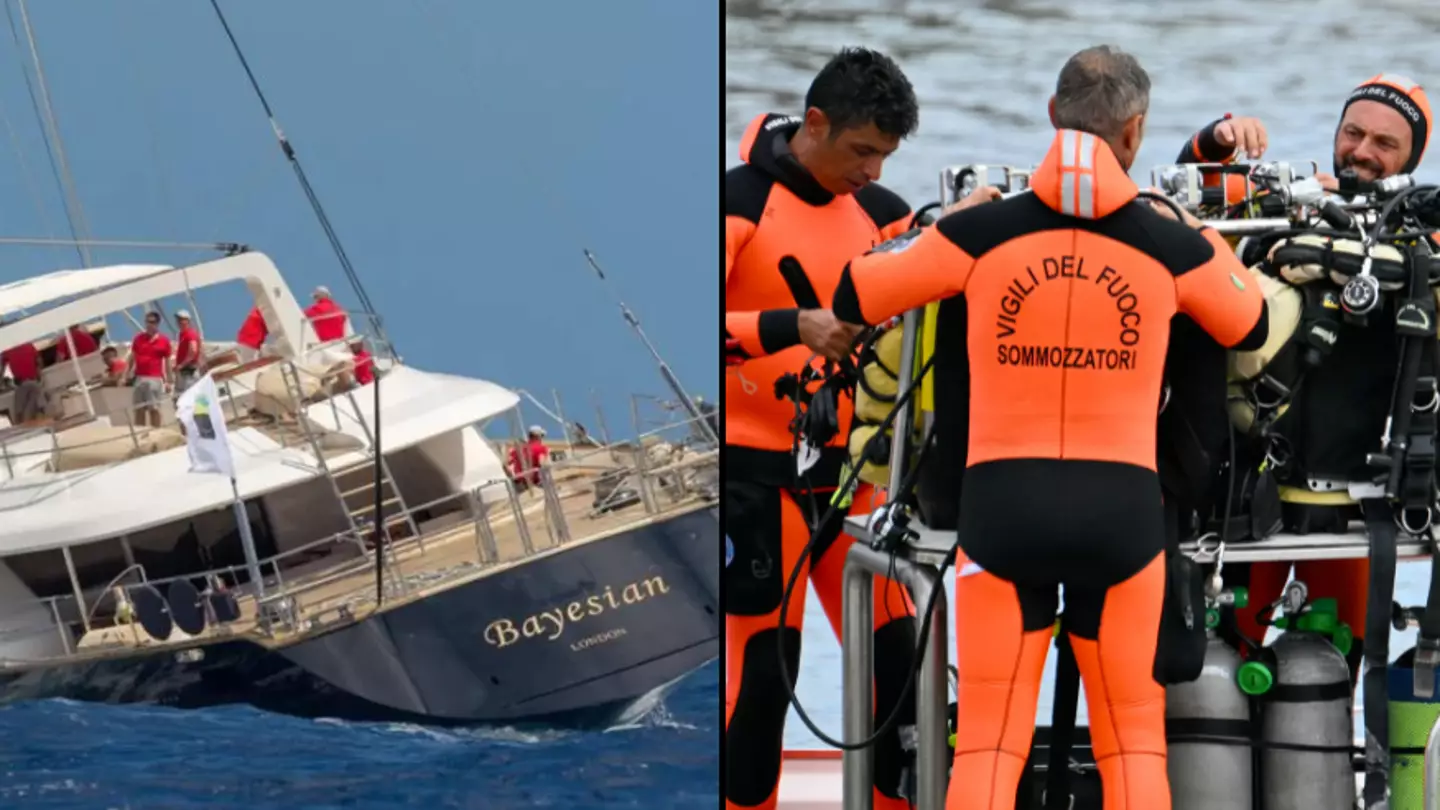
Divers make major finding that could solve mystery behind sinking of yacht that killed British billionaire Mike Lynch
The 19 august bayesian yacht sinking saw seven people out of 22 on board die, including british businessman mike lynch.
Britt Jones
Divers travelling to the wreck of the Bayesian yacht have retrieved a vital component which could possibly help explain why it sank, it has been reported.
Seven of the 22 passengers and crew on board the gigantic 56-metre luxury yacht died after the ship sank at around 5.00am local time on 19 August.
According to reports, this was after the boat encountered a tornado approximately half-a-mile off the coast of Porticello.
British businessman , Mike Lynch, his 18-year-old daughter Hannah, Morgan Stanley International bank chairman Jonathan Bloomer, his wife Judy Bloomer, Clifford Chance lawyer Chris Morvillo, his wife Neda Morvillo and chef Recaldo Thomas were all confirmed to have died in the sinking.
Lynch, who was known as the 'British Bill Gates' after founding software company Autonomy in 1996, was reported to have been celebrating after being cleared of conducting fraud on an £8.64 billion sale to US firm Hewlett Packard.
As of now, three crew members, which include the ship’s captain James Cutfield, are all currently under investigation by Italian authorities for manslaughter.
In a press conference, prosecutor Ambrogio Cartosio said that his office had opened the investigation as 'behaviours that were not perfectly in order' could have been the reason why seven people died, but added that all possible lines of inquiry were being considered.
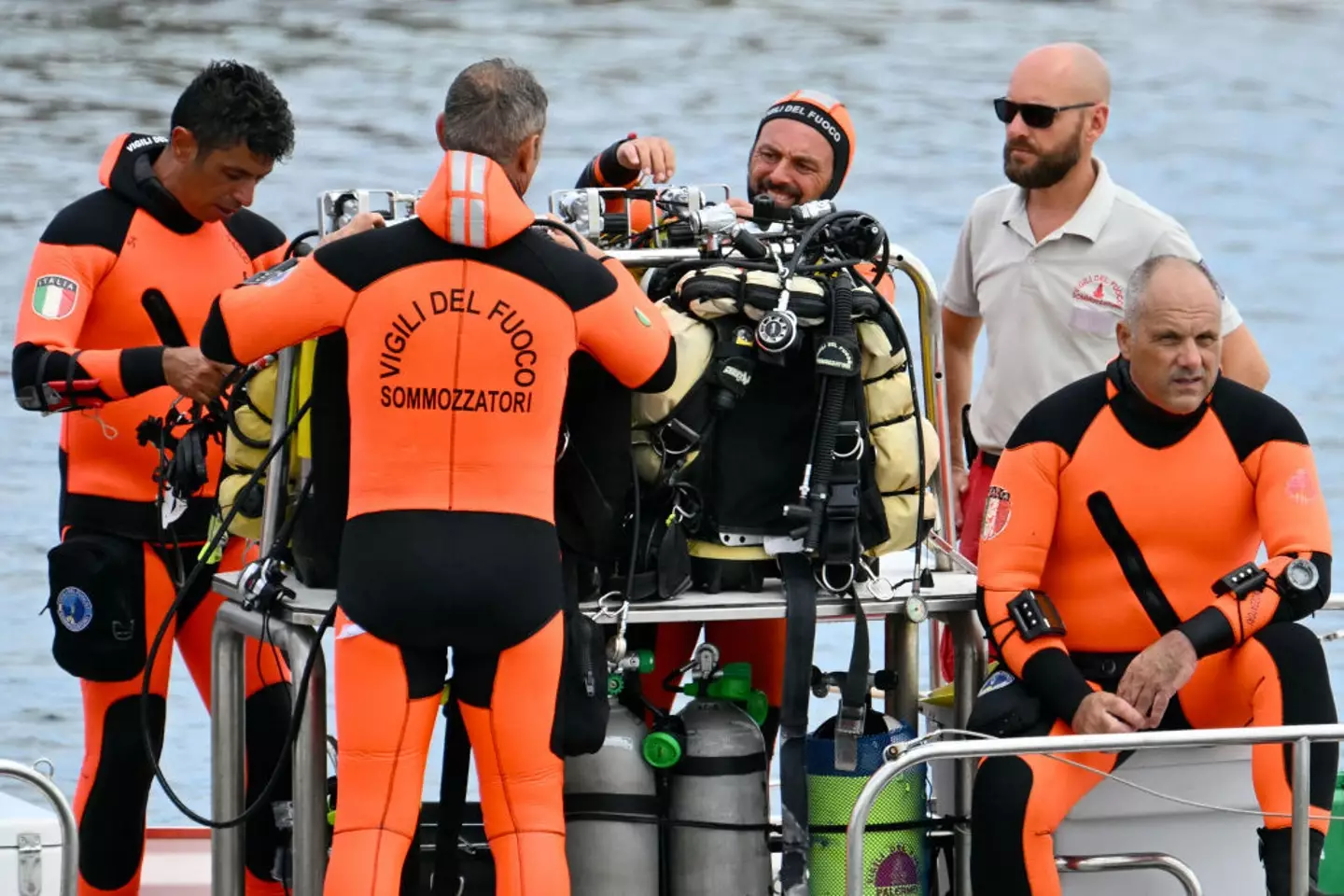
Under Italian law, being under investigation also doesn't imply any guilt or that further charges will be issued - and there may be more people under investigation.
Since then, divers from the Italian Navy have been visiting the wreck on behalf of the prosecutor's office, with a source telling Reuters that they have discovered video surveillance cameras fixed to the wreckage which could possibly help explain the reason for the sinking.
According to a report on Friday (13 August), a team of divers from the Italian Navy retrieved parts of the deck along with video surveillance equipment, which includes hard drives and computers.
This evidence will now be analysed in specialised labs outside of Sicily to recover any potential data, the source further claimed.
The divers made several 40 minute dives down to the yacht via a hyperbaric chamber, Coast Guard official, Daniele Governale, said, Reuters reports.
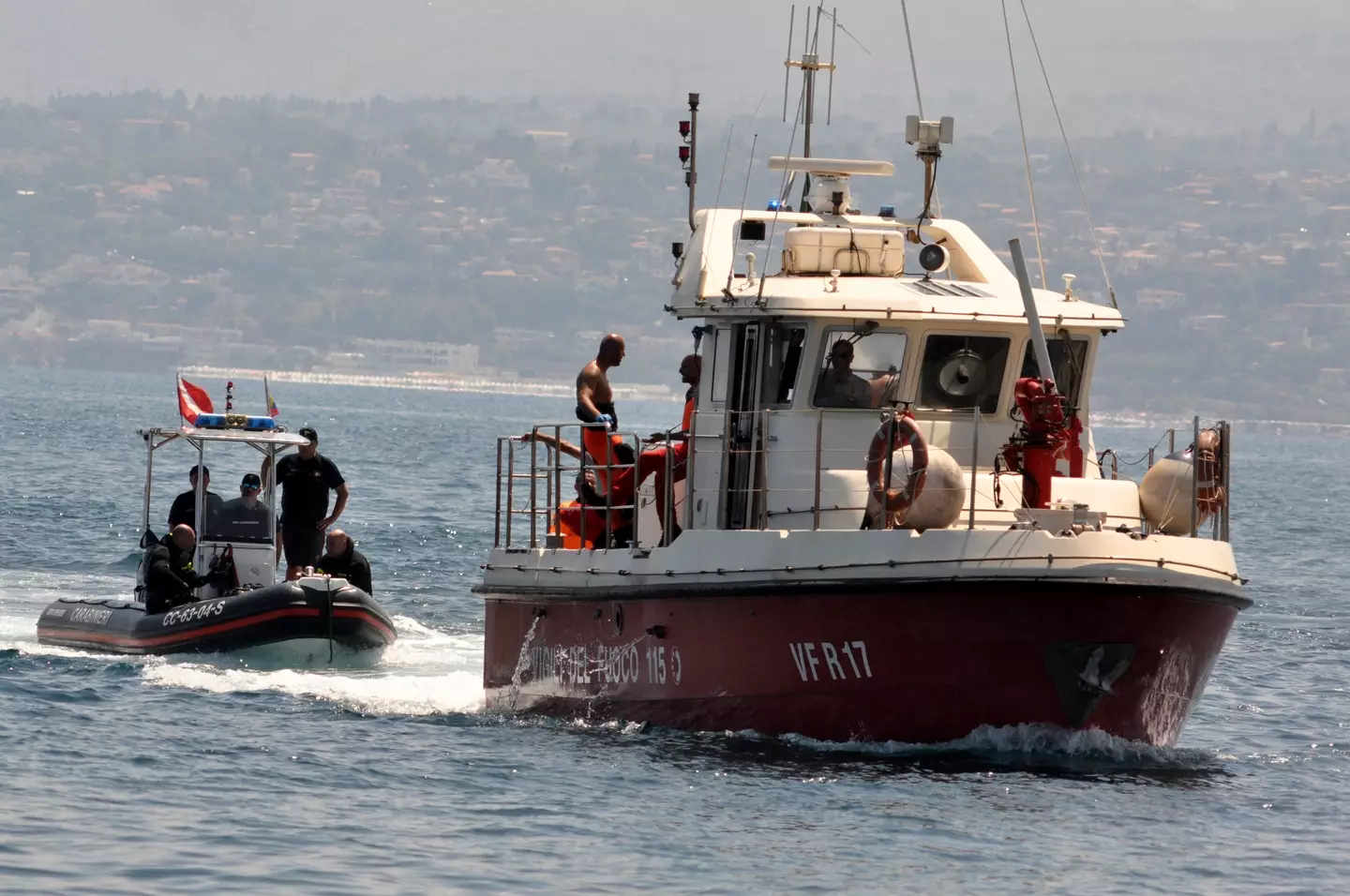
The Coast Guard has also taken underwater images with a remotely operated vehicle to sketch up a plan to raise the wreck, the outlet also says.
CCTV footage from the night of the sinking showed a clip of the yacht before it 'vanished in 60 seconds'.
And passenger Matthew Griffiths also spoke about what happened the day the ship went down.
According to Italian news agency Ansa, he said: "I woke up the captain when the wind was at 23 mph. He gave orders to wake everyone else.
"The ship tilted and we were thrown into the water. Then we managed to get back up and tried to rescue those we could.
"We were walking on the walls [of the boat]. We saved who we could, Cutfield also saved the little girl and her mother.”
The little girl in question were the surviving passengers, Charlotte Golunski and her one-year-old daughter.
LADbible reached out to the Palermo Coast Guard and the Italian Prosecutor’s Office for comment.
Topics: UK News , World News
Choose your content:

First photo of Titan submersible after implosion has been released
A hearing into the titan sub disaster and subsequent search is currently taking place.

Shaquille O'Neal says there is one thing he wished he had said to Kobe Bryant before he passed away
Shaq has finally revealed what he wished he could have said to kobe bryant before his tragic death in 2020.
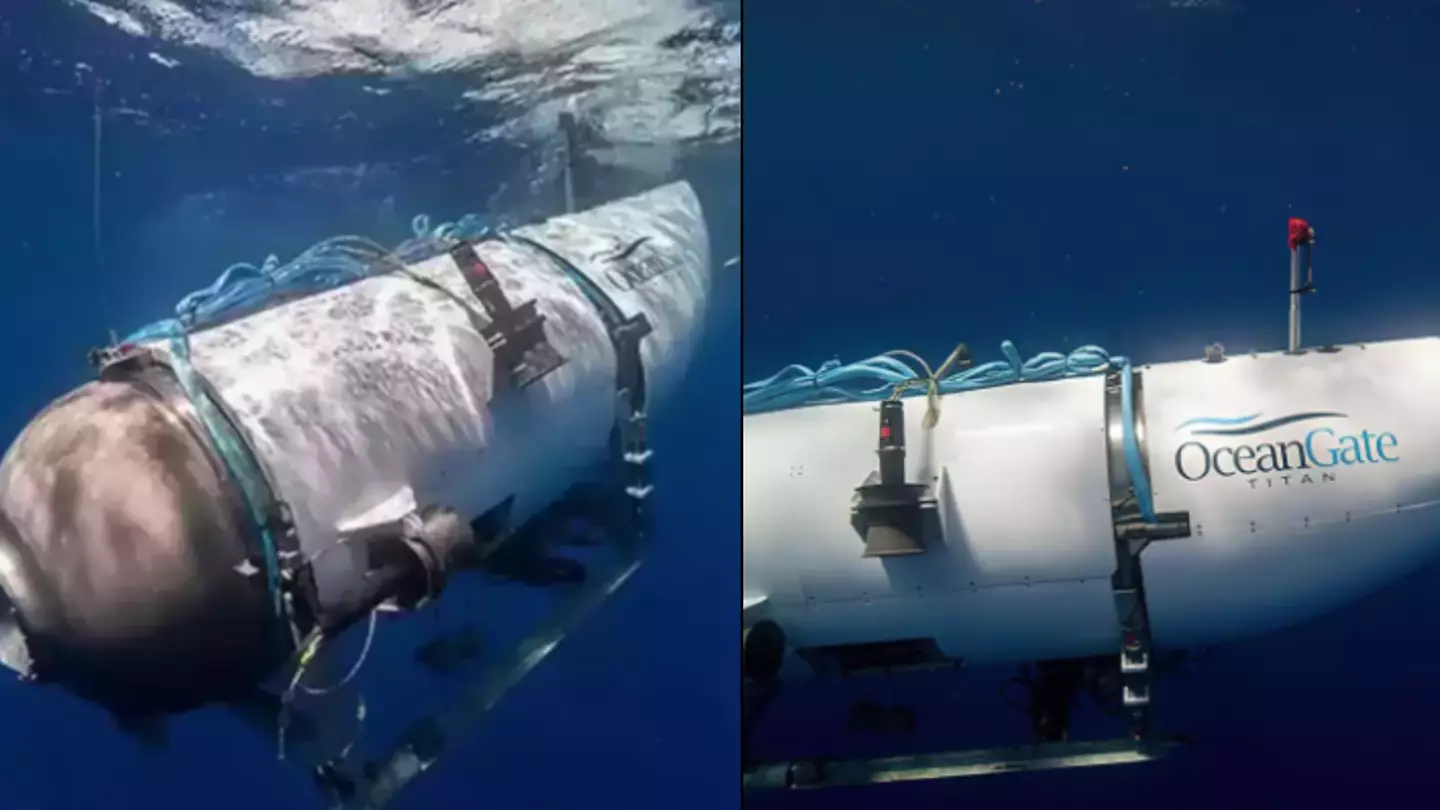
Last words of Titan submersible crew before implosion revealed
The last words from the crew of the titan submersible have been revealed.

First British couple to use 'double suicide pod' will have to make choice before they die
Peter scott and his wife christine are set to be the first brits to use exit international's sarco pod in switzerland.
- Final known words of researcher who disappeared while studying cannibal tribe after image appears to solve mystery
- Sixth body found in sunken yacht disaster believed to be billionaire Mike Lynch’s daughter Hannah
- Top Gear presenter Chris Harris breaks down what actually happened in crash that almost killed Freddie Flintoff
- Scientist solve mystery of why thousands of octopuses gather at mysterious spot to die

COMMENTS
The Dutch navy first used the yacht in order to catch pirates.Until the 1950s, the primary materials used for building a yacht was wood. Today, yachts of all types and sizes are constructed of various materials including steel, aluminum, plywood, and veneers. When Charles II used it for his own personal use, the yacht became a luxury boat often owned by important people all over the world.
Now let's take a deeper dive into each of the above types of yachts and boat hull types. Aft Cabin. Aft cabin yachts are exactly what the name implies: they have a cabin on the back of the boat, rather than an open cockpit. They can range in size from around 30 feet to well over 100 feet of LOA. In the past smaller versions in the 30- to 40 ...
Other key decisions include choosing between hull types - mono or multi - and the different styles and uses, including performance, cruising and explorer-style yachts. Read on to learn more about the main different types of a superyacht for sale, or talk to your expert IYC Consultant today to gain an overview of the best of what is on offer ...
A catamaran is a type of cruising and racing multihull sailboat with two hulls. The hulls are always the same size. Most catamarans have a standard Bermuda rig. The catamaran refers to the hull, so it can have any number of masts, sails, sail types and rig type. How to recognize a catamaran: any boat with two hulls is called a catamaran
These yachts are not just boats; they're pieces of history sailing the seas. 5. Luxury and Superyachts. ... With so many yacht types to choose from, there's something for every yachting enthusiast. Whether you're drawn to the traditional allure of sailing yachts, the modern luxury of motor yachts, or the unique appeal of catamarans and ...
In fact, it's a common friendly tease to refer to a small dinghy, aluminum fishing boat, or bass boat as a "yacht" when a friend arrives in one. To get a more thorough understanding, it's useful to examine the various classes of yachts and the characteristics that differentiate them from each other, and from other types of boats.
A yacht of 60 meters length will have a crew of 20-23 members. A yacht of 80 meters length can have a crew of up to 80 members. The maximum number of guests will depend on yacht registration type. Many owners choose to keep maximum of 12 guests, since it allows for a simpler regulation regime.
Discover the Perfect Yacht: An In-Depth Look at Different Types of Yachts. When diving into the world of yachting, understanding the "types of yachts" is essential. This comprehensive guide will provide an overview of the various yacht types, explain each type in detail, discuss yacht size and classification, offer tips on choosing the right yacht, and compare different types to help you ...
Yacht types - a Burgess guide. One of the biggest decisions for anyone on the path to becoming a superyacht owner is deciding what type of boat best suits their needs. From sailing to motor, and catamaran to explorer, the style, size and capability of a yacht is largely dictated by an owner's lifestyle, preferences and bucket-list cruising ...
Multihull: Yachts can also be multi-hull configurations, i.e., catamaran (two hulls) or trimaran (three hulls) types. Catamaran designs are chiefly characterized by two slender hull structures joined by the extension of the bridge deck or a large crossbeam. These vessels are highly stable and seaworthy.
Types of Luxury Yachts. A luxury yacht is generally understood to be a yacht that is built with the latest in modern technology and features high-end finishes and materials. The word "luxury" can be used with any type of yacht that is exceptionally well-appointed, but some types of yachts are considered to be more luxurious than others.
To fully grasp "what makes a boat a yacht," we need to delve into the technical characteristics that set yachts apart from other types of boats. Yachts are generally larger than typical boats, often starting at around 33 feet (10 meters) in length and going up to hundreds of feet for superyachts and megayachts.
Discover the diverse world of boats and find the perfect vessel for your unique boating needs with this comprehensive guide. Published by Yachting.com - 08. 09. 2023. If you're fascinated by the vast world of boating, you've probably come across various types of boats. Boats come in a wide range of sizes, shapes, and functionalities, each ...
With so many different types of yachts, finding an option that suits your lifestyle can be hard. Learn more about popular yacht categories. Yachts for Sale. All Yachts; New Yachts. ... How much is a motor yacht? Based on the 2023 US Boats Group market index, the average price for a yacht measuring between 46-55 feet was $491,606. For yachts ...
Power and sailboats are built for ocean-going, and most are over 30 feet in length. These ocean-going vessels include trawlers, sailboats, motorsailers, catamarans, game fisher boats, expedition yachts, and mega yachts. Ocean-going boats usually have high sides and bows, deep V, or displacement hulls.
Pontoon Boats. SunCatcher 322 SS pontoon boat. Image credit: SunCatcher. Whether you're on a lake in Arizona or a bay on the Atlantic Seaboard, you're probably going to see plenty of pontoon boats. Instead of riding on a fiberglass hull, this boat type has two or sometimes three aluminum "logs" they float upon.
For example, a pontoon boat rental is designed for calm waters, whereas a giant yacht is designed for taking on the rough seas, meaning that their hulls vary greatly. There are two main types of hull: displacement and planing. We'll give you the rundown of both of these types and the other sub-varieties within them.
Motoryachts: Motoryachts are the largest and most luxurious type of motor yacht. They have spacious accommodations, multiple decks, and a variety of amenities, such as jacuzzis, gyms, and helicopter landing pads. 3- Other types of yachts. In addition to sailing yachts and motor yachts, there are a number of other types of yachts available ...
4. Bowrider Boats. Known as a quintessential family boat, Bowriders offer room for eight or more passengers across its cockpit, bow cockpit and helm. In addition, the bow area of these boats has been constructed in a unique way to allow a spacious seating arrangement. Image for representation purpose only.
A Beginners Guide to Motorboats There are many different types of motorboats, from small runabouts to mega yachts, with a vast array of hull shapes, construction materials, and propulsion systems.Sometimes referred to as powerboats, motor yachts, or superyachts (typically when over 100 feet long), what these boats share in common is that they all have some sort of engine or motor for ...
This is a list of boat types. For sailing ships, see: List of sailing boat types ... Yacht; Yawl; Yoal; Top of page. Z. Zille; Top of page. See also. Lists of watercraft types This page was last edited on 8 July 2024, at 19:23 (UTC). Text is available under the Creative ...
There are five common boat hull types: Round-bottomed hulls - handle well in rough water: sailboats. Flat-bottomed hulls - very stable for calm inland waters: fishing boats. Multihulls - very stable and buoyant: catamarans. V-Shaped Hulls - fast and comfortable in chop: powerboats.
Yachts. Among these various boat types, the yacht is the only one that embodies elegance and pleasure. It's essentially a high-end motorboat designed for recreational purposes. "Yacht" is derived from the Dutch word "jacht," which means "cruising boat." ...
Turkish shipyard Bering Yachts has announced a new 24-metre catamaran model known as BC80 at this year's Cannes Yachting Festival. The yacht is the largest in its class at 24 metres and is joined by the 18.9-metre BC60 and the BC70, which measures 21.3 metres. Owners can choose between two layouts: the flybridge version and the solar-powered ...
Italian yard Cantieri di Pisa has announced its redesigned Akhir line at this year's Cannes Yachting Festival.. The shipyard "headhunted" Italian designer Antonio Luxardo for the redesign, with the task of balancing the brand's historical heritage with an eye for future technology and sustainability concerns. The first model to be introduced to the market will be a 44-metre, built in carbon ...
Riviera loaded seven new motor yachts onto the container ship Majestic at the Port of Brisbane last Thursday bound for Florida, including its latest creation, the 6800 Sport Yacht Platinum Edition.
The 19 August Bayesian yacht sinking saw seven people out of 22 on board die, including British businessman Mike Lynch Divers travelling to the wreck of the Bayesian yacht have retrieved a vital ...